-
Posts
4,499 -
Joined
-
Last visited
Posts posted by Admin_99
-
-

Part One: An Unkindness of Ravens
It was almost three years to the day after the great quake had laid waste to so much of San Francisco’s pride that the first of the extortion letters arrived, dated April 21, 1909. This one appeared at the door of the home of Mr. James O’Brien Gunn, president of the Mechanics’ Savings Bank in San Francisco. Like the other two which followed it on April 26, the missive was menacingly signed “The Ravens.”
“Dear sir,” it began:
Read this letter well and weigh each word of it to its full weight, for they mean exactly what they say. We wish to tell you that on next Friday night, April 23d, you must be in front of the Van Ness Theater with $3000 dollars to deliver us in cash, if you wish to ensure the safety of those that are dear to you…. Our plans are well laid and will be performed to the letter if you do not accept our request.
We do not shoot or stab, but we handle a Hindoo poison which is known by the East Indian to be the quickest and deadliest poison that can be concocted from plants of poisoned juice, a poison that knows no antidote, for it acts directly on the heart and from the time it is administered until death is no more than three minutes. Our method can be made in a crowd, in a store, or on the street, for we use injections and just the piercing of the flesh with a tiny needle syringe is all that is required and any doctor will claim heart disease unless the body is examined.
We never make a second demand on anyone. That is our oath and the Hindoos that command never fail. There are twelve of us all told and we all know your family history well. So Friday night at 8 o’clock sharp be in front of the theater with a newspaper in your left hand and a package with your money in the right hand, so the transfer can be quickly made. And you will never hear from us again, for we never ask for a second amount. That you have our oath for.
We are bound together with the oath of our blood. If you make one move of treachery you will be dropped in your tracks. We swear.
The amount is not much to you in comparison to your dear one, so we will expect you on time, but if you are not there (and alone), then beware, for you will only invite execution.
We will be there well-guarded to fight to the death any and all who try to alter our plans, so do not let us have to make an example of you, the first in the city we have asked a favor of.
Do not forget your instructions. Newspaper in right and package in the other. Our words to you will “Is this the package?” Then you will hand it over and we will go about our business and you do the same.
THE RAVENS
P.S. The money must be in paper money and bills no larger than $50.
A highly successful businessman from the gilded era of ruthless clashes between striking labor and strikebreaking capital, James O’Brien Gunn was inclined to laugh the whole thing off as a joke. (“He calls himself The Raven? Really, now! Balderdash!”). Nevertheless, Gunn turned the letter over to the police. This was despite the fact that the banker was publicity shy after that highly embarrassing business of his half-brother’s embezzlement and bigamy which had made scorching newspaper headlines just two years previously. Let me detour a bit to detail this episode, the first of the Gunn family’s which ever, as far as I am aware, touched on criminality.
Part Two: The Near Fatal Love of Gertrude Fontham
 In his day James’ father, Canadian corn merchant Daniel Charles Gunn, had sired nine children by two successive wives. One of these children was James’ twenty-one years younger half-brother, William Ellis Gunn. William, a popular, gregarious clubman and generally esteemed “good fellow,” had appeared in New York in 1905, taking over management of the newly-built Schuyler Arms apartments on tony Riverside Drive. Within a year, the bluff, bearded, thirty-five-year-old “Captain,” as he was known, had hired twenty-one-year-old Gertrude Fontham as his stenographer. Gertrude, reputedly a dainty, dark-haired, dark-eyed beauty, was the belle of her little corner of Harlem—or perhaps one should say belle dame sans merci. In October 1905, two young men, William Wood and Lester Finley, roommates on the top floor of a Harlem apartment house, had fought what the press termed a “duel” over “Gert,” with Willie Wood, as he was regrettably known informally, nearly killing Dwight in the affray. Some months after that lamentable affair, Joseph O’Reilly, brother of prominent criminal attorney Daniel O’Reilly (he would defend millionaire Harry Thaw, the 1906 murderer of Stanford White, among other privileged celebrity defendants), came to believe that he himself was engaged to Gertrude, only to receive a very rude surprise indeed when the comely stenographer without warning married her boss in October 1907. William and Gertrude promptly went off to enjoy a honeymoon in Europe, leaving the owners of the Schuyler Arms to discover ruefully that William had taken $5400 out of the hotel’s cashbox to fund the couple’s happy journey. Police in various European cities were alerted to keep on the lookout for the honeymooners.
In his day James’ father, Canadian corn merchant Daniel Charles Gunn, had sired nine children by two successive wives. One of these children was James’ twenty-one years younger half-brother, William Ellis Gunn. William, a popular, gregarious clubman and generally esteemed “good fellow,” had appeared in New York in 1905, taking over management of the newly-built Schuyler Arms apartments on tony Riverside Drive. Within a year, the bluff, bearded, thirty-five-year-old “Captain,” as he was known, had hired twenty-one-year-old Gertrude Fontham as his stenographer. Gertrude, reputedly a dainty, dark-haired, dark-eyed beauty, was the belle of her little corner of Harlem—or perhaps one should say belle dame sans merci. In October 1905, two young men, William Wood and Lester Finley, roommates on the top floor of a Harlem apartment house, had fought what the press termed a “duel” over “Gert,” with Willie Wood, as he was regrettably known informally, nearly killing Dwight in the affray. Some months after that lamentable affair, Joseph O’Reilly, brother of prominent criminal attorney Daniel O’Reilly (he would defend millionaire Harry Thaw, the 1906 murderer of Stanford White, among other privileged celebrity defendants), came to believe that he himself was engaged to Gertrude, only to receive a very rude surprise indeed when the comely stenographer without warning married her boss in October 1907. William and Gertrude promptly went off to enjoy a honeymoon in Europe, leaving the owners of the Schuyler Arms to discover ruefully that William had taken $5400 out of the hotel’s cashbox to fund the couple’s happy journey. Police in various European cities were alerted to keep on the lookout for the honeymooners.Fuel was added to the fire a few days later when a San Francisco woman, Phoebe Deming Gunn, spoke to the press, informing them that she was William’s wife and the mother of his five children, meaning that William’s second marriage was bigamous. Her faithless spouse, she declared, had callously deserted his family eight years previously, when he, an officer in the naval reserve, left them to take command of the tug Vigilant in the Spanish-American War and never returned. Bitterly Phoebe insisted: “I shall never give him a divorce…. he should be punished for his treatment of us….it is a terrible stain to rest upon my children….” For his part James O’Brien Gunn refused to answer any of the questions eager San Francisco pressmen hurled at him, including even whether or not he was really William’s brother. It was the confiding Phoebe who confirmed this fact, explaining that of late years it had been he, James, and not William, who had provided her with “kind assistance” (i.e., child support). She had accepted this arrangement, but learning of her husband’s bigamy was the final straw for her. The San Francisco Examiner painted Phoebe as an object of extreme pathos, reporting that she and her children resided “out on the furthest edge of the windswept Richmond district, where the evening fog whips in chill and cold, in a ramshackle house set in the midst of a grove of gloomy eucalyptus trees.”
 Ten days later, when William and Gertrude returned from Europe, Jospeh O’Reilly, still pining for his “Gert,” was waiting for them at the dock. After he took Gertrude aside and informed her that William already had a wife and children, the shocked young woman departed with Joseph in a cab, alighting at the law offices of Joseph’s brother. The next day Gertrude and her mother announced to the press that Gert was seeking to annul her marriage. The lawyer handling her case was Maurice Meyer, an associate in the law firm of Daniel O’Reilly. To Meyer, William broke down and admitted that he was indeed a married man, but he insisted that at least a “satisfactory arrangement” had been made concerning the hotel funds he had misappropriated (meaning probably that his brother James had stepped up to the financial plate again). Meanwhile Willie Wood, awaiting trial for assault in the second degree (remember the “duel” he fought over Gertrude), from his prison cell piled on William by spitefully insisting to the press that the bigamist had married Gertrude simply to win a wager which he had made with Wood that he could get his secretary to wed him rather than James O’Reilly. As for Phoebe, aka wife #1, she informed the press that she did not know whether or not she would go to New York to testify in Gert’s annulment suit, explaining that she would be “guided entirely” by the advice of her kindly brother-in-law, James O’Brien Gunn. “All I have to say is this,” she added bluntly. “I hope [William] will get all that is coming to him.”
Ten days later, when William and Gertrude returned from Europe, Jospeh O’Reilly, still pining for his “Gert,” was waiting for them at the dock. After he took Gertrude aside and informed her that William already had a wife and children, the shocked young woman departed with Joseph in a cab, alighting at the law offices of Joseph’s brother. The next day Gertrude and her mother announced to the press that Gert was seeking to annul her marriage. The lawyer handling her case was Maurice Meyer, an associate in the law firm of Daniel O’Reilly. To Meyer, William broke down and admitted that he was indeed a married man, but he insisted that at least a “satisfactory arrangement” had been made concerning the hotel funds he had misappropriated (meaning probably that his brother James had stepped up to the financial plate again). Meanwhile Willie Wood, awaiting trial for assault in the second degree (remember the “duel” he fought over Gertrude), from his prison cell piled on William by spitefully insisting to the press that the bigamist had married Gertrude simply to win a wager which he had made with Wood that he could get his secretary to wed him rather than James O’Reilly. As for Phoebe, aka wife #1, she informed the press that she did not know whether or not she would go to New York to testify in Gert’s annulment suit, explaining that she would be “guided entirely” by the advice of her kindly brother-in-law, James O’Brien Gunn. “All I have to say is this,” she added bluntly. “I hope [William] will get all that is coming to him.”Certainly, young Willie Wood got something coming to him. In August 1908 the amorous young dentist, having been found guilty of assaulting his roommate and close friend Lester Dwight, an electrical engineer and manager of the Cortlandt Telephone Exchange (they had been nicknamed Damon and Pythias in reference to the extreme closeness of their friendship), was sentenced to a term of hard labor in Sing Sing Prison for three to five years. “You might have been on trial for homicide,” the judge sternly reminded the defendant.
Still brokenhearted over his loss of Gertrude, Willie told the press that it little mattered to him where he was housed, in prison or out of it, but that he still believed that he had acted in self-defense when he shot Lester three times. “It is true we had quarreled over the girl,” he explained, and things came to a head in October 1905, after Lester discovered a love poem which Willie imprudently had written to Gert on the back of some piano sheet music to a tune called “My Little Dearie.” However, Willie added, if Lester “hadn’t thumped me over the head with his umbrella as I lay in bed, I should never have drawn my pistol. Even then, he had as good a chance as I, for he was armed and I was wounded once in the head.” Soon five pistol shots, all fired by Wood, rang out in the night, bringing alarmed tenants scurrying up to the young men’s rooms. There they found Lester lying on the floor with blood gushing from his mouth, chest and thigh, and Willie standing over him with a gun. “The woman, the woman, the woman!” was all Lester could moan piteously to onlookers, as Willie admonished him to remember that he was a gentleman and refrain from naming the lady’s name. Police tumbled to the identity of the woman in question anyway, however, when they discovered a will that Willie had made out before the “duel,” in which he left $5000 to Gertrude $5000 and a mere $1000 to his mother, wardrobe mistress at the Belasco Theater, with the proviso that Gertrude not marry within a year of his death. There was also a copious amount of “very saccharine poetry written by the sentimental dentist [which he] dedicated to the young woman,” the press noted amusedly. Things like this “duel” between two supposedly sensible young professional New Yorkers, which fueled news stories for three years, were all welcome grist to the maw of the scandal mill.
Did William Ellis Gunn ever get what was coming to him? Not by the lights of Phoebe, anyway. The bigamist appears never to have served any jail time and he reconciled with Gertrude, with whom he lived until his death in 1942. Between 1908 and 1914 Gertrude bore him three children to go along with the five Phoebe had given him, in the process thickening her figure, while William began to appear not merely fatherly but grandfatherly, though he served in the navy in both world wars. Theirs appears to have been a happy union, legitimate or not. Sometimes crime does pay.
Part Three: The Ravens Get Their Wings Clipped
 Crime emphatically did not pay, however, in the case of the would-be criminal gang known as The Ravens. If James O’Brien Gunn successfully extricated his half-brother from his own difficulties a few years earlier, he proved no less able in routing The Ravens. Gunn was a wealthy man, but he was not about to turn over $3000 (about $100,000 today) to some grandiose extortionists writing fantastically of Hindoo poisons undetectable to science. When a representative of The Ravens telephoned Gunn at his home on the evening on which he had been ordered to deliver the money at the theater, he was forcefully told by Gunn himself in no uncertain terms that he had better “forget it.”
Crime emphatically did not pay, however, in the case of the would-be criminal gang known as The Ravens. If James O’Brien Gunn successfully extricated his half-brother from his own difficulties a few years earlier, he proved no less able in routing The Ravens. Gunn was a wealthy man, but he was not about to turn over $3000 (about $100,000 today) to some grandiose extortionists writing fantastically of Hindoo poisons undetectable to science. When a representative of The Ravens telephoned Gunn at his home on the evening on which he had been ordered to deliver the money at the theater, he was forcefully told by Gunn himself in no uncertain terms that he had better “forget it.”Despite Gunn’s refusal to play along, San Francisco police detailed Detective Bunner to wait outside the Van Ness Theater on the 23rd, ready to pounce on anyone suspicious. No such person appeared, prompting the police to speculate that Bunner had scared off the extortionist. However, three days later almost identically worded missives from The Ravens were received by Rudolph Spreckels, youngest son of California “Sugar King” Adolph Spreckels, and his independently wealthy wife Eleanor. A less familiar detective by the name of Spalding was detailed to await outside the Spreckels mansion, along with two additional detectives by the names of Murphy and Proll, who stayed out of sight. They were all present when a young newsboy, George Demartini, rang at the mansion’s door and was given a package by the Spreckels’ butler. The policemen followed the boy and saw him board a streetcar in company with a slightly built, brown-haired man in a bowler hat, around thirty years of age. Spalding followed the pair onto the car, where he overheard them haggling over the boy’s payment for receiving the package. Becoming suspicious of Spalding’s presence, the man then loudly denied to the boy that he had ever offered him money and refused to take the package. When the man and boy alighted from the car, the cop followed them and placed both of them under arrest. Then at the police station, the San Francisco Examiner ominously noted, “the sweating began.”
After holding out for several hours, the would-be master criminal collapsed and tearfully confessed to the crime of attempted extortion of James Gunn and the Spreckels. There was no gang known as The Ravens, the whole plot having been carried out by him alone: Benjamin Wellington Soule, a twenty-eight-year-old unemployed cook who resided with his wife at a small Victorian row house at 3278 West 21th Street. He had turned to his criminal scheme on account, he explained, on account of his having been out of work and because, in his words: “My mind had been fired by reading cheap detective stories.” After questioning his wife, police concluded that she knew nothing about the affair, but Soule was taken to the city prison and placed in solitary confinement.
Not long before his trial in the summer of 1909, Soule gave an interview to a representative of the San Francisco Examiner, in which he attempted, in an obvious bid for public sympathy, to explain why he had resorted to posting extortion letters to Gunn and the Spreckels. “Soule Blames Dime Novels For Crime,” blared the resulting headline, over a story in which the author dubbed the accused extortionist “one of the most emotional dabblers in crime that the police have had to deal with in some time,” who calculatedly was displaying himself “in the role of a sentimental sinner.” For the modern fan of crime fiction, Soule’s comments on the crime fiction of his own era, from over a century ago, are particularly fascinating.
As his later prison photos show, Benjamin Soule was a slight man of 5’8” and 137 pounds with longish brown hair (before his head was shaved), long nose, large ears, big chin, cupid’s bow mouth and prominent blue eyes that were both sad and soulful—pun not attended. To my mind he bears a resemblance to former Saturday Night Live cast member and perpetual Sad Sack type Kyle Mooney.
Sobbingly Soule spun out his sad story to the man from the Examiner:
I never thought I’d come to this….I never thought of arrest. I had dreams of making a lot of money quick and easy, and I went ahead with my plans with no thoughts of detection.
Desperation drove me to blackmail. I had been out of work for months, and I was compelled to see my wife leave home every day and work in my stead. I never could think of that without bitter feeling.
I think a great deal of my wife. I married her two years ago in Minnesota, where I had gone from New York in search of work. I am a lithographer by trade and I was led to travel West because of the dull times in the East. [He is referencing the devastating Panic of 1907.]
For a time I did very well in Minnesota, but shortly after my marriage I began to have another run of poor luck. I was eventually compelled to take whatever work offered itself and filled jobs as cook, waiter, dishwasher and other places around restaurants.
From Minnesota my wife and I went [in 1907] to Butte, Montana, where I worked for a time as a cook. We then went to Spokane and from there to Wallace, Idaho.
We came to San Francisco from Wallace last December [1908]. I was able to secure work as a cook after arriving here but I eventually lost two different places I had and found myself without a dollar. My wife then secured work in the Quaker restaurant at Polk and California streets and supported us both….[But] I wanted to see her [stay] home, wearing good clothes like other women and busying herself about the care of the house.
I tramped the streets daily looking for work and applied at every possible place where I thought I could get it. In time I became very discouraged and at a loss to know what to do with myself. I felt so ashamed at seeing my wife working that I could hardly bear to look her in the face. Things became more gloomy for me all the time, and for the want of something better to do I revived an old boyish custom and began reading dime novels and other sensational books.
I want to say right now that I have enough sense to know what a foolish thing reading such stuff is for a grown man. At first the thing was a mere amusement, but as I continued to read, I began to have ideas.
“Why not take advantage of this sort of stuff and make money by it?” I began to say to myself. “People are easily frightened.…”
While I was thinking of this, I came across a story of a secret band of poisoners who were known as “The Ravens.” The story told how they blackmailed wealthy people right and left, and I found it fascinating reading. If I am not mistaken the story is one of the “Nick Carter” series of dime novels, and it was replete with the names of queer poisons and other things that appear mysterious and threatening.
I came to the conclusion that this story would make a model framework on which to build an actual system of blackmail….
I used the name of “The Ravens” in the letters I wrote to Spreckels, his wife and President Gunn of the Mechanics Bank. The letters addressed to these persons, in fact, were almost exact copies of the letters in the story I refer to.
The threats to do away with the threatened persons with secret Hindu poisons if they did not pay the money requested were, of course, made simply for effect. I never had any idea of harming any of the persons I wrote and if they would have ignored my letters, they would have been perfectly safe.
The best proof of this is that I engaged President Gunn in a telephone conversation after sending him one of “The Ravens” letters. He told me I had better forget about him, which I straightaway proceeded to do. It would have been the same with the members of the Spreckels family if they had paid no attention to my letters. I thought that of all the wealthy people in San Francisco I would be able to find a few who could be frightened into giving me money.
I intended to leave with my wife for Minnesota, where her mother is ill. My wife’s father died recently, the old lady is very lonely, and we both wanted to be near her….I intended to keep on writing threatening letters until I got possession of several thousand dollars….I am all there is of “The Ravens.” I wish to God I had never heard of the name.
Rudolph Spreckels, a well-known anti-corruption fighter in San Francisco and righteous—many people in San Francisco would have said self-righteous—scourge of bosses and crooked politicians, was proactive in the prosecution of Soule, getting personally involved in questioning him at the jail after he was arrested and helping to draw up the complaint against him, whereas James Gunn seems to have washed his hands of what he deemed the whole damn silly affair. (Let other fools pay him if they want, seemed to be his attitude.) Indeed, Soule’s defense was that the whole thing had essentially been a joke gone wrong, with no harm done; but, after the defendant had been found guilty of the felony of sending threatening letters, the judge sourly declared that he saw nothing funny about Soule’s “joke.” He pronounced Soule no better than a “footpad,” only more “genteel,” and sentenced him to a four-year term at San Quentin Prison. In the event, Benjamin served two years, during which time he was forcibly employed as a sack inspector at the prison’s jute mill, deemed a ‘hell-hole” and the institution’s “most detested industry.” Just a few months before Soule was incarcerated at San Quentin, a fire engulfed the warehouse, resulting in the death of an inmate. He was paroled in 1911, but not long after this he was arrested on a charge of obtaining $85 under false pretenses. His magnanimous victim was willing to drop the charge, but the prosecution insisted on going forth with the case, resulting in Soule being returned to prison to finish out the remaining two years of his original term (and inspect yet more sacks at the jute mill). He was discharged a year later, in 1912.
What happened to Benjamin Willington Soule after he completed his term of incarceration? Was he reformed, or did he become, like so many in his regrettable circumstances, an old lag destined to be a continual repeat offender? The answer is, unfortunately, that I do not know. The penultimate record I have found of him, a draft registration card, comes from the final year of the Great War, in September 1918, when he, now thirty-nine years old, was living in Chicago and employed as a cook in the Lunch Room of the luxurious La Salle Hotel. As his nearest relative he listed not his wife but Mrs. Ida Hay of Coshocton, Ohio. Twenty-four years later, in the midst of another world war, a Benjamin Soule, age sixty-four, was interred in the cemetery at St. Peters Episcopal Church in Chelsea, Manhattan. I think, though I cannot be certain of such, that this was the earthly end of Benjamin Wellington Soule.

The facts, as I have been able to determine them, seem generally to support the story of Soule’s life as he told it to the San Francisco Examiner. The man came of a perfectly respectable background, despite the fact that the Examiner had gibed at him, in its initial account of his arrest, that the prisoner possessed “the cunning of his class.” Born in the town of Richland in Oswego County, New York on December 1, 1878, Soule was the only child of Florence Bejamin Soule, a farmer’s boy, and Ada Marie Wellington. When Benjamin was a child his parents moved with him to Martinsburg, West Virginia, where Florence opened an agricultural store. In 1884, when Benjamin was a teenager, Florence, Ada having passed away, married Mary Margaret Munn of Coshocton, Ohio, where the Soules had moved some time earlier. In 1900, Benjamin, now twenty-one and still living with his father and stepmother, listed his occupation as “pressman,” which is what he meant when he told the Examiner reporter in jail that he had been trained as a lithographer. In 1907 Benjamin married Marie Elizabeth Erickson in Butte, Montana, where he was employed as a cook at an establishment known as The Grill and had a room downtown in the Morier Block. Of Scandinavian descent, Marie grew up in Minnesota, but she and Benjamin had not married there, as Benjamin claimed in the Examiner interview. Had they run off together to marry in Montana?
When in 1918 Benjamin listed his nearest relative as Mrs. Ida Hay of Coshocton, this was true too, it appears. Mrs. Hay was the wealthy widow of Frank Corbin Hay, a wealthy, beloved and benevolent capitalist of Coshocton, and the younger sister of Benjamin’s stepmother Mary Margaret Soule, who passed away in 1902. (Mary Margaret had died at Ida’s home, her husband Florence by her side.) Had Benjamin been able successfully to go to the widowed Mrs. Hay for money in 1909, all of his troubles would have been avoided. (Presumably his father had died by this time.) It would seem as well that his wife, who had visited him every day in jail, according to the Examiner reporter, her eyes red-rimmed and streaming, had not been able to stick it out over the long haul and had left him.
It was a sad, humiliating fate for a man who seemed intelligent and imaginative, and likely was one of the many descendants of prolific Mayflower passenger George Soule. (These include Dick Van Dyke, Richard Gere and abolitionist Silas Soule, who nobly testified against Colonel John Chivington, the contemptible man responsible for the infamous 1864 Sand Creek massacre of Arapaho and Cheyenne tribespeople in Colorado.) The industrious Soule forbear, who probably (or improbably) was of partial Jewish descent, made a great success of himself in the Plymouth colony. Before setting out for the New World, young George in Holland had worked as a printer’s helper, a pressman like Benjamin if you will, and in this capacity had helped produce Perth Assembly, a controversial book that the Puritans smuggled into Scotland in wine vats, which King James I of England deemed unpardonably subversive. Like George, Benajmin Soule seems to have had imagination and creativity, which admittedly he would have been well-advised to put to better uses. Instead of committing criminal offenses, he would have been better off writing penny-a-word crime fiction for the pulps. Just imagine: Erle Stanley Gardner, George Harmon Coxe, Carroll John Daly, Benjamin Wellington Soule…. Instead, he died forgotten and is only being recalled now because back in 1909 the crime pulps, as he saw it, induced in him a felonious inclination to write some very foolish letters.
Part IV: James Edward Gunn: Deadlier Than the Male
 It proved to be not Benjamin Wellington Soule who would become the writer of crime fiction, but rather a grandson of Soule’s world-be victim, James O’Brien Gunn—or President Gunn as Soule respectfully called him. (He gave his nemesis Spreckels no such honorific.) When James Gunn died three years after the affair of The Ravens, at sixty-seven still shy of seventy years of age, he was eulogized as one of the great business leaders of California’s early Anglo days, having been Secretary of the California Pacific Railroad, the Union Iron Works and a “confidential man” of Leland Stanford and the brothers Charles and Edwin Crocker, three of the tycoons responsible for the building of the Trans-Continental Railroad. Back in 1874 at age twenty-nine Gunn, a man clearly on his way up to the top, wed Edwin Crocker’s pretty, precociously artistic, nineteen-year-old daughter Katie, a promising student of noted native German California painter Charles Christian Nahl. However, Katie Crocker Gunn tragically passed away from acute nephritis after only a few months of marriage. By his second wife, Laura Littig Shaffer—daughter of a Baltimore merchant, Frederick (Littig) Shaffer, who had inherited, like they do in books, a fortune in real estate from a relative after compliantly changing his surname (as an adult Laura retrieved “Littig”)—Gunn had four children, including George Alfred Gunn, who wed schoolteacher Ernestine Kraft, daughter of a factory agent, and with her had a daughter and son. These were, in order, Jane Lisette and James Edward Gunn, the latter of whom, named for his renowned grandfather, was born on August 22, 1920 in San Francisco.
It proved to be not Benjamin Wellington Soule who would become the writer of crime fiction, but rather a grandson of Soule’s world-be victim, James O’Brien Gunn—or President Gunn as Soule respectfully called him. (He gave his nemesis Spreckels no such honorific.) When James Gunn died three years after the affair of The Ravens, at sixty-seven still shy of seventy years of age, he was eulogized as one of the great business leaders of California’s early Anglo days, having been Secretary of the California Pacific Railroad, the Union Iron Works and a “confidential man” of Leland Stanford and the brothers Charles and Edwin Crocker, three of the tycoons responsible for the building of the Trans-Continental Railroad. Back in 1874 at age twenty-nine Gunn, a man clearly on his way up to the top, wed Edwin Crocker’s pretty, precociously artistic, nineteen-year-old daughter Katie, a promising student of noted native German California painter Charles Christian Nahl. However, Katie Crocker Gunn tragically passed away from acute nephritis after only a few months of marriage. By his second wife, Laura Littig Shaffer—daughter of a Baltimore merchant, Frederick (Littig) Shaffer, who had inherited, like they do in books, a fortune in real estate from a relative after compliantly changing his surname (as an adult Laura retrieved “Littig”)—Gunn had four children, including George Alfred Gunn, who wed schoolteacher Ernestine Kraft, daughter of a factory agent, and with her had a daughter and son. These were, in order, Jane Lisette and James Edward Gunn, the latter of whom, named for his renowned grandfather, was born on August 22, 1920 in San Francisco.In those years between the first and second world wars, the era of the so-called Golden Age of detective fiction, the George Alfred Gunn family was well-off and socially prominent in the City by the Bay, employing a governess for the children and a succession of Filipino houseboys to cook and clean. When in 1938 daughter Jane became engaged to Noel Edmund Parker, son of the Episcopal Bishop of Sacramento (the Gunns were Episcopalians), the happy news was reported in the San Francisco Examiner by the newspaper’s hoity-toity society page editor Cholly Francisco. This match did not ultimately come off, sadly, but two years later, her father having expired in the interim, Jane eloped to Reno with mining engineer Leroy Briggs and got legally hitched. The wedding was a small-scale affair, although Jane’s mother Ernestine, who would pass away in 1943, was present and her brother James, as the sole male left in the family, was obligingly on hand to give the bride away to Briggs. After their honeymoon, the couple settled between Frisco and Reno at the onetime frontier mining town of Angels Camp, where locals still dug for gold.
At the time of his sister Jane’s wedding, James Gunn was a student at Stanford University, where he majored in English and was a member of Kappa Alpha fraternity. He was six feet tall and weighed 170 pounds, was brown-haired and blue-eyed, had a great set of sparklers and an infectious grin and wore glasses, though vainly he doffed them for photos. During his senior year in the fall of 1941, when he was only twenty-one years old, young Gunn began writing a novel about mania and murder, partly, it was said as an exercise for an English class and partly to entertain his fraternity brothers. “He certainly didn’t write it for your Aunt Hepzibah,” wryly noted reviewer Reece Stuart in the Des Moines Register, adding, in a reference to Will H. Hays, the man who oversaw the Motion Picture Production Code (or Hays Code), which set out a list of moral guidelines for the censorship of American films: “Neither is he shooting at the movies while the Hays influence remains.”

Despite the modest, almost offhand origins of James Gunn’s novel, the college senior, upon completing the manuscript, submitted it successively to four different publishers, the last of which, Duell, Sloan and Pearce, released it through its Bloodhound Mystery imprint (under which they published distinguished crime writers Dorothy B. Hughes and Elisabeth Sanxay Holding) in April 1942, four months before the fledgling author’s twenty-second birthday, under the title Deadlier Than the Male. The novel’s jacket, which included a photograph of the grinning, good-looking neophyte novelist, in its blurb boasted of Gunn’s youth, a tactic which paid off handsomely. Rarely did a first novel receive such critical acclaim.
The Kirkus review, which succinctly summarizes the novel’s plot, was one of the many Male raves noting approvingly just how hard-boiled the young author’s book was:
Tight, tough and chilling, this study in mania and homicide is as vicious and violent and brutal as you could imagine, even with a drilling in Cain and Hammett. It concerns a redheaded brute, Sam Wild, responsible for the death of a Reno whore and a man—and those who love him and tail him. Wild has married an heiress, Georgia, and her stepsister Helen, “deadlier than the male,” spots Wild for what he is. The setting is San Francisco. The characters range from the underworld to the socialites. Gunn has compelling power, though his book is certainly tabu for the tender-minded.
The most notable of these newspaper raves came from the hand of John Selby, a mainstream author and syndicated book reviewer whose “Literary Guidepost” column was carried in scores of newspapers around the country. When James Gunn scored a laudatory notice in Selby’s column it meant that his novel was being nationally embraced not as a mere crime thriller, but as a piece of literature. Noting that his publisher’s blurb compared Gunn to Cain and Hammett (with many other reviewers following suit), Selby declared to the contrary that:
The comparison is so unfair to Gunn as to be ludicrous. This Stanford senior writes better than Cain ever wrote to my knowledge and his humor is not that of Hammett…. Gunn’s humor is far younger than Hammett’s and, for that matter, far funnier…. “Deadlier Than the Male” is the best story of its kind by a writer of comparable age since Maritta Wolf’s “Whistle Stop” (1941), and that’s saying a good deal.
It’s about a murder—several of them. It is not a mystery…. Primarily it is the study of two deadly people, a man and a woman…. And the goddess of the machine is a gorgeous old harridan named Mrs. Krantz who is drinking herself to death with gusto, first in Reno then in San Francisco…. Mr. Gunn has surrounded these principals with a bevy of really good characters, and he has made his unlikely plot seem perfectly reasonable by the simple device of not taking it too seriously. He writes well, with just pace and frequent splashes of brilliance. In other words, he is a “find.”
The raves of Gunn’s novel were too numerous to give more than a brief taste, but here are some additional snippets, most of which contrast the toughness of the book with the dewiness of the author and also emphasize its unexpectedly abundant humor:
The ranks of hard-hitting, he-man novelists, which includes such names as James M. Cain, Dashiell Hammett, William Faulkner, has been increased by the addition of 21-year-old James Gunn…. he can write—excitingly, humorously and trenchantly…. “Deadlier Than the Male” packs a wallop that leaves the reader slightly groggy, and with something of a dark brown taste in his mouth…. It would be hard to imagine an author creating a more unpalatable crew of characters—thugs, drunks, opportunists, charlatans…. the one who really counts…is Mrs. Krantz, blowzy, drunken, ribald Mrs. Krantz, slightly reminiscent of the grandmother in [Victoria Lincoln’s mainstream novel] “February Hill.” Mrs. Krantz is designed along such Rabelaisian proportions, she’s an achievement of which the author may be proud.
Many readers may object to the lightness of touch of this book. It’s rather like writing a “New Yorker” skit about Murder, Inc. [referencing an organized crime group responsible for hundreds of murders between 1929 and 1941, when it was exposed and members were prosecuted.] Personally, we found it a little easier to take than Cain’s unrelieved hard-boiled fiction. —Palm Beach Post
James Gunn has barely reached the voting age. He is a handsome youngster and his first published writing is this surprising novel…. There are murders, several of them….If young Mr. Gunn had been deadly in earnest his story would have been flat. He preferred to be good humored about the whole business…. The result is one of the most sprightly, readable and entertaining stories we have happened upon in a long time. So well is the material handled that the rough spots do not seem rough at all…. Better get this one. —Greensboro News and Record
The author’s youth explains the lusty vigor and uninhibited violence of his story. But it doesn’t explain the adroit ingenuity and cumulative suspense of the plot, the salty jets of dialogue or the persuasive ease with which Mr. Gunn handles a complex narrative…. The story…is squarely in the Janes Cain—Dashiell Hammett tradition, which means that it’s rough, tough and eminently readable…. Those who like murder mixed with appropriate shots of pathology and humor will enjoy it thoroughly. —Robert Barlow, “This World of Books” (syndicated newspaper column)
The author of this first novel is a senior student at Stanford University and is only 21 years old. These are only two remarkable things about this novel. It is not often that so young and inexperienced an author produces a first novel that is both entertaining and horrifying.
‘Deadlier Than the Male” is not a murder story in the popular sense…. It is more of a horror story which manages to be immensely amusing….
[…]
James Gunn has written a novel which cannot fail to be immensely popular. He has a wickedly irreverent sense of characterization and his story which might have become fantasy, remains throughout sufficiently realistic as to be quite credible. The story is packed with tension and humor…. —John Moreland, Oakland Tribune
James Gunn was 21 when he wrote “Deadlier Than the Male.” One is shocked to realize any one only 21 could come to know such people, much less write about them. For this is not a pretty book. If young Gunn gets into his stride, James M. Cain may well look to his laurels, for Gunn packs a literary wallop that calls to mind some of the saltier haymakers of Cain.
[…]
Surely there must have lived the person of Mrs. Krantz. NOBODY could have dreamed her up completely…. There is not a character in the entire book that can be admired, but the reading about them guarantees a couple of hours of nail-biting. —Mildred Dalton (syndicated newspaper column)
Occasionally, not often, does one pick up a book whose first paragraph is so electric that what was meant for a glance becomes a far-into-the-night reading session. Even more rarely is there a book whose dynamo start is sustained throughout. “Deadlier Than the Male” is such a one. This sort of magic is without explanation. It isn’t alone good writing; it isn’t alone plot suspense or exciting characterizations; it is something that comes from within the author, something vital, something super-alive and super-intense.
“Deadlier Than the Male” is not a mystery…. readers of mysteries will find in it more punch, more Machiavellian machinations, and more hair-raising proclivities than in 12 months of most mysteries…. It is an incredible performance, a first novel, begun by a Leland Stanford student as a classroom project. It is incredible because first novels can’t be so expert. But this is. —Dorothy B. Hughes, Albuquerque Tribune
Part V: James Edward Gunn: Queer Noir
Despite all the remarkable superlatives that the novel garnered from newspaper critics and the success which it enjoyed with the book buying public, going through several paperback editions, Deadlier Than the Male is James Gunn’s only known published work of fiction. Like Cornell Woolrich, who back in the Twenties had published a critically praised first novel when he was a lad of twenty-two and a student attending Columbia University, Gunn turned from novel writing to scripting films for Hollywood, possibly dropping out of college to do so, like Woolrich had before him. However, Gunn was not involved with the scripting of the film adaptation of his own novel, which appeared, under the grim title Born to Kill, in 1947. Perhaps this was just as well for him.
Proving rather more squeamish than their brethren in the book biz, appalled film critics largely panned Born to Kill, which starred Lawrence Tierney as Sam Wild and Claire Trevor as Helen Brent, as brutish melodrama and it bombed at the box office. In their notices critics seemed almost to compete with each other in assembling pejoratives with which to denounce the film. Sneered Herbert Cohn of the film in the Brooklyn Daily Eagle (ironically recalling the Nick Carter crime stories which had criminally inflamed the imagination of Bejamin Wellinton Soule back in the day of James Gunn’s grandfather): “[Born to Kill is] a sordid story of jealously, selfishness, hate and murder, with all of the fixings of a tawdry dime novel.” Bosley Crowther at in New York Times echoed this sentiment, huffily dismissing the film as a “smeary tabloid fable’ filled with “ostentatious vice” that would only appeal to the “lower levels of taste.” In the “At the Movies” column for the Kansas City Star, the outraged anonymous reviewer chided of the film’s story: “Certainly this sort of stuff is not on the side of morality and is reprehensible.” Topping them all in her ostentatious outrage, Cecile Ager of PM lamented that Born to Kill was “as unsavory and untalented an exhibition of deliberate sensation-pandering as ever sullied a movie screen.” Thankfully at least one reviewer, Banks Ladd, leavened this parade of self-righteous scoldings with a dash of humor, wryly observing in the Louisville Courier-Journal: “The only likable character in the film is a small dog, who whines appealingly when abandoned in a room full of corpses [two, actually]. But the dog appears for only a few minutes, after which the audience is left to the mercies of the actors.”

Professional moralist Jospeh Breen, director of the Production Code Administration, which was tasked with enforcing the Hays Code, objected at the time of the film’s making that Deadlier Than the Male was “the kind of story which ought not to be made because it is a story of gross lust and shocking brutality and ruthlessness.” In the state of Ohio, as well as the cities of Chicago and Memphis, censorship boards prohibited theaters from showing the murder flick on account of its alleged indecency. Its reputation was further damaged the next year when it was implicated in the notorious trial of Howard “Howie” Lang, a twelve-year-old adolescent who in Chicago brutally slaughtered Lonnie Fellick, a seven-year-old boy, polishing him off with a switchblade and chunk of concrete while another boy, nine-year-old Gerald Michalik, at Lang’s direction held down Fellick’s flailing legs. (According to the press, reticent concerning sexual matters, the three boys had earlier engaged mutually in “acts of perversion” as well.) Lang’s lawyers claimed that the boy had watched Born to Kill just three weeks prior to the 1947 murder, temporarily triggering in him a fit of homicidal mania. Back in 1909 Benjamin Wellington Soule had made a similar argument when he blamed a Nick Carter dime novel for inspiring him to send extortion letters to wealthy San Franciscans, but the jury did not buy it then and the jury did not buy it four decades later, in 1948. At his trial Lang was found guilty and sentenced to twenty-two years in prison, but on appeal the Illinois Supreme Court reversed the decision and ordered a new trial. There the beneficent presiding judge, who was hearing the case without a jury, concluded that Lang’s poor upbringing along with his addiction to murder mysteries, crime movies and comic books had rendered him “unable to determine right from wrong.” The judge ordered that the adolescent, who was now fourteen, be given a new start in life at a Catholic school under another name.
Unfortunately, Howie Lang himself was not one to let bygones be bygones. In 1951, Lang, now sixteen, was arrested for beating into insensibility with a chain Gerald Michalik, the pal who had testified against him at his trial. This time around Lang was sentenced to eleven months in prison, during which time he staged what was termed a “3-day revolt in his cell.” When Lang finally walked out of prison in 1953, telling the press that he did not want any help from anyone, Warden Frank Sain lamented of the eighteen-year-old: “He has been a very disappointing prisoner to work with.”
What James Gunn made of all this brouhaha over the film version of his novel I do not know. His own first screenplay credit, a solo one, was for the more anodyne 1943 murder mystery Lady of Burlesque, which starred Barbara Stanwyck in the title role. This film was an adaptation of stripper Gypsy Rose Lee’s 1941 bestselling murder mystery The G-String Murders, a pithy and racy novel that was rather like Gunn’s, only even more commercially successful. Hunt Stromberg, the independent producer of The G-String Murders, had been immediately interested in filming Deadlier Then the Male, and presumably came into contact with the author that way. He spoke warmly of Gunn’s participation in his film, telling the press that screenwriter was “an outstanding example of the opportunities motion pictures offer a young man of 22 with imagination and writing talent today…. He looks at the world through the eyes of a young modern. He has no sympathy for a phony, for sham or theatricals. He thinks and writes in that frank, down-to-earthy, lighthearted manner that is so much needed today.”
Reviewers like Philip K. Scheuer praised Gunn’s “tongue-in-cheek script” (along with director William A Wellman’s “slightly derisive direction”) for “simulating the odorous backstage atmosphere of [a burlesque theater] without actually showing anything objectionable, at least that you can put your finger on…. The girls are prettier and shapelier [than in real burlesque], the jokes innocuous and the striptease antiseptic—but the feel is still there.” One had to consider the strictures Gunn worked under in scripting this film. As Scheuer noted, “the picture was first banned and then passed, with deletions, by the Legion of Decency.” Censor Breen even complained about the use of a G-string as a murder weapon (strippers are strangled with it), complaining that the article was altogether too “intimate” a piece of feminine apparel.
One thing James Gunn managed to do, like Dashiell Hammett had before him in his classic hard-boiled novel The Maltese Falcon (1930), was to slip into the Burlesque script the word gunsel, in its true meaning of catamite, defined as a young man or boy “kept by an older man for homosexual practices.” (The word actually first appeared in the serialization of Falcon in Black Mask in 1929.) Explicit references to homosexuality were frowned upon in American entertainment media and explicitly proscribed from films by the Hays Code in 1934. However, censorious editors and the like thought that gunsel meant a gun-armed henchman of a crook and, guided by this misimpression, allowed the word to remain both in Hammett’s novel and the classic film adaptation, directed by John Huston and starring Humphrey Bogart as Sam Spade, which premiered in October 1941, when Gunn was writing Deadlier Than the Male. In the film Spade sneeringly refers to young thug Wilmer Cook (Elisha Cook, Jr.), lackey to the obviously queer Kasper Gutman (Sidney Greenstreet), as a gunsel. Two years later in Lady of Burlesque, the word appears again, in its original meaning, when an angry stripper sneers at her boyfriend: “Big Louie the Grin! Turns gray when he sees a cop, like a gunsel.” The stripper here clearly is using the word, like Sam Spade had in The Maltese Falcon, as a synonym for pansy or fairy, words Gunn had gotten away with using, by the way, in his novel. As far as I know, Burlesque is the only film that followed Falcon in this correct usage, with other films which included the word using it to mean gunman. On the other hand, Gunn deleted the bit from Gypsy Rose Lee’s book where a lesbian cop amorously hits on her character, though in the film the actress who briefly portrays the policewoman certainly is depicted in full “dyke” battle mode, if you will.
In contrast with Born to Kill, Lady of Burlesque in playing it safer with its script made a big hit at the box office. Gunn was unable to capitalize on the film’s success, however, for by the time Burlesque premiered in May 1943, he had been inducted into the army. After he returned to civilian life in 1945, he would garner only one other screenwriting credit in the Forties. This was for the film The Unfaithful (1947), a reworking of the Bette Davis murder melodrama The Letter, starring Ann Sheridan in the Davis role, which adopted a modern attitude to wifely adultery. Gunn co-wrote the screenplay with noir author David Goodis.
In the 1950s Gunn worked with other writers on additional film scripts, including those for the Joan Crawford marital melodrama Harriet Craig, (1950), itself another updating of an older film; the grift film Two of a Kind (1951), starring Lizabeth Scott and Edmund O’Brien; Affair in Trinidad (1952), a mystery which reunited Gilda stars Rita Hayworth and Glenn Ford; and All I Desire (1953); a Douglas Sirk period noirish melodrama starring Barbara Stanwyck. Like so many other Hollywood writers in the Fifties, he then found steady work in television. During the early to mid-Fifties, he wrote thirty-five episodes for such TV anthology series as Fireside Theater, Chevron Theater, The Pepsi-Cola Playhouse and Studio 57. Perhaps his most notable television job was co-writing six episodes of the critically-praised series Checkmate, which was set and San Francisco and created by Eric Ambler. (Gunn co-scripted these episodes with Ambler.)
During these years, Gunn’s sole film screenplay was for the Oscar-nominated melodrama The Young Philadelphians, a sudser starring Paul Newman which opens with a scene of a Main Line mama’s boy socialite, an evident self-hating queer played by Adam West of later Batman fame, miserably explaining to his bride on their honeymoon that he cannot consummate their wedding and then running out on her. James Gunn may have hoped that the hit flick might revive his flagging film career. At the time of the picture’s opening, it was reported that he and another writer with a very similar name, the late Lawrence, Kansas science fiction writer James Edwin Gunn, had taken out an ad in a Hollywood trade paper, explaining to the public that they were in fact different people. “He is now, and has been since the Ice Age, in Hollywood,” the text dryly explained about James Edward Gunn. This was Gunn’s last film work, however. Indeed, it is claimed in some sources that Paul Newman hated the Young Philadelphians script and brought in blacklisted writer Dalton Trumbo to doctor it.
Gunn’s final aired television script was for a 1965 episode of the William Faulkner inspired drama The Long, Hot Summer. He died in Los Angeles the next year, on September 20, 1966, when he was only forty-six years old. The circumstances of James Gunn’s death—and, truth be told, much of his life–remain frustratingly unclear. When Black Mask reprinted Deadlier Than the Male in a typo-ridden edition in 2009, reviewers of the novel praised it while expressing perplexity over the obscurity of the author. “Little is known of his life, and he remains a tantalizing mystery,” observed Tony D’Ambra” at FilmNoirsnet back in 2010. “Nobody seems to know anything about him,” echoed blogger Bill Chance back in 2011. Over the decade, however, nothing seems to have been done to rectify the matter. “Searching for biographical information on Gunn is a futile endeavor,” concluded author and academic Sean Carswell in 2019.
James Gunn’s sister Jane preceded him in death at the old goldrush town of Nevada City, California four years before his own demise. Aged forty-six years like her brother when she expired, she left behind her husband of twenty-two years, Leroy Briggs, but no children. James, who seems never to have married, evidently was similarly childless at his death. It is completely speculative on my part, but I wonder, given his life circumstances and his fiction and film writing–which so often is dominated by strong female characters and frequently evinces, to my mind anyway, a camp sensibility–whether James Gunn was gay. It would be interesting if so, because noir, with a few exceptions like Cornell Woolrich, is so associated with the “he-man” tough school of crime writing. Yet even many critics at the time noted the queer, pun intended, juxtaposition in Deadlier Than the Male of Gunn’s humorous, surrealistic writing with sharp bursts of violence and brutality, as well as the superb portrayal of Mrs. Krantz, that indomitable avenging angel and drunken old hag—a camp gay icon type character if ever there were one.
In 1950 French publisher Gallimard under its influential Serie noire imprint, which Gallimard had established five years earlier, reprinted Deadlier Than the Male, under the title Tendre femelle (Tender Female) as the fiftieth book in its series. A year after Gunn’s obscure death in 1965, Leftist French philosopher Gilles Deleuze on the occasion of the publication of the thousandth novel in the series, produced an essay, “The Philosophy of Crime Novels,” in which he named Gunn’s book as a “marvelous work” and “my personal favorite” from the series. In “A Lure for the Devil,” an essay by Sean Carswell on Deadlier Than the Male which the LA Review of Books published in 2019, Carwell highlights the comical, surrealistic quality of Gunn’s novel, never using the word camp but depicting the book as a noir parody. Carswell frequently cites Gilles Deleuze’s 1966 essay, in which, he notes, Deleuze named Deadlier than the Male “his favorite example of what the best crime writing can do,” because its absurdist parody rejects the sense of ultimate rationality and order that one finds in the traditional crime novel–even the hard-boiled novel. To quote Deleuze: “The most beautiful works of La Serie Noire are those in which the real finds its proper parody, such that in its turn the parody shows us directions in the real which we would not have found otherwise.”
Sean Carswell writes that despite the book’s title, its depiction of the femme fatale is ironically subversive of (straight male) genre tropes:
Rather than describing a sexy, seductive femme fatale, Gunn creates a fabulous one. She’s far closer to Truman Capote’s Holly Golightly than she is to, say, Raymond Chandler’s Velma Valento. The third-person narrative voice reads like it comes from a gay man who wants to go clubbing with her.
This voice provides a clever counterpoint to the typical characterizations of femmes fatales…. the femme fatale that readers were very accustomed to in the 1930s and 1940s [was] the woman whom the narrator or narrative gaze wants both to sleep with and to blame for all of his misdeeds. Gunn’s parodic portrayal of a femme fatale highlights the absurdity of this trope. He doesn’t want to sleep with her. God, no. He wants to help her pick out that marvelous outfit. And if that outfit should drive a man crazy, well, it was probably a short trip there.
When it came to marketing the film version of Deadlier Than the Male, it is noteworthy that the change of title to Born to Kill and the tag line (The coldest killer a woman ever loved!) together place emphasis on the male character, Sam Wild, as protagonist, rather than Helen Brent. I would say to the contrary that in Deadlier Than the Male the sole protagonist clearly is Helen Brent, the film’s putative femme fatale, with Mrs. Krantz as antagonist or nemesis and Sam Wild as Helen’s would-be homme fatale, his presence in her life peeling away her layers of civility and spurring her on to worse and worse actions. In short, it is not Helen’s maleficent impact on Sam that the author is interested in so much as Sam’s maleficent impact on her. Helen’s lead status is diluted in the film, as is the role of Mrs. Krantz, although there is enough left of her part that character actress Esther Howard, who plays her in the film, is able to steal every scene in which she appears. (Howard’s name is not even included on the film’s posters.)
Moreover, as Carswell urges, James Gunn’s parody goes beyond subverting the traditional depiction of hard-boiled femme fatale: “It’s not enough for Deleuze when crime novels simply parody the form or the genre, the best novels parody what we perceive as the real. Therein lies the power of Deadlier Than the Male: it takes our ideas of an orderly, just, civilized society where people act on rational motives; it eviscerates those ideas; and leaving us laughing at the rubble.” All of this is vitiated in the film version, especially with its soft-pedaled, traditionally moralistic ending (i.e., crime does not pay). Some modern reviewers have simply been left confounded, even repelled, by Gunn’s subversive novel. ‘It’s an odd, crazy book,” observed bemused blogger Bill Chance in 2011. “[T]he plot is like a big twisted knot of desperation and evil, stretching from [Reno] to Frisco…. I was able to get through the book in one day. [Now] I need to find something different [to read], maybe even something a little uplifting. After reading this one…I feel sort of dirty.”
Gunn’s possession of an iconoclastic queer sensibility would help explain how this novel came to be written as it is, but perhaps Gunn simply looked back with sardonic amusement at the criminal follies which had occurred in the lives of his own grandfather and great-uncle a decade or so before he was born. What could be more absurd than his grandfather getting a letter threatening death by a deadly, undetectable Hindu poison administered by the hands of an imaginary criminal gang called The Ravens, except the San Francisco police taking the letter so seriously as to ruin an impetuous man’s life over it? What could be more surreal than the idea of Gertrude Fontham, that supposed femme fatale of Harlem, driving a pair of foolish men to a so-called duel and yet another to acts of embezzlement and bigamy, before she settled down to a bland, everyday life of domesticity and children with a man who looked like her doting grandfather? What could be more unjust than Bejamin Wellington Soule’s silly letters resulting in his losing three years of his life to hard labor in a bestial jute mill, while William Ellis Gunn a couple of years earlier walked off legally unscathed after committing embezzlement, desertion and bigamy? And, one might add, what could be more ridiculously simplistic than to blame a film-noir for one boy’s horrific murder of another, rather than societal ills or individual psychosis? Perhaps James Gunn could only look back and laugh in the face of such cosmic injustices and absurdities, rather than piously don black and shed traditional tears. After all, as another noir film, produced by Gunn’s cinematic impresario friend Hunt Stromberg, warned in 1949, it was too late for tears.
-

The CrimeReads editors make their choices for the best debut novels in crime, mystery, and thrillers.
*

Sasha Vasilyuk, Your Presence Is Mandatory
(Bloomsbury)Vasilyuk’s powerful debut tells the story of Yefim Shulman, moving between his death in Ukraine in 2007 and his experiences during World War II and its aftermath, when Shulman fought Germany for the USSR but soon ended up ensnared in the KGB plots, hiding his secrets from his family. Vasilyuk manages to capture both the story’s intimate drama and its epic qualities, telling the story of a double life and its reverberations across borders and generations. –DM

Sara Koffi, While We Were Burning
(Putnam)In this well-plotted cat-and-mouse thriller, a surburban white woman still reeling from the death of her best friend hires a Black personal assistant to help her with day-to-day tasks. Little does she suspect that her new employee only took the gig so she can keep investigating the circumstances surrounding her son’s death, and figure out which “concerned citizen” was the person who called the cops and put her beloved child in their cross-hairs. The looming, inevitable confrontation between the two is forceful and stunning. Koffi has used the thriller genre with great effect for a prescient critique on the petty resentments and deliberate ignorance that underpin our racist power structure. –MO

K.T. Nguyen, You Know What You Did
(Dutton)In this propulsive psychological thriller, artist Annie “Anh Le” Shaw is sent spiraling when her mother dies suddenly, and long-repressed memories begin to crowd their way to the surface to destabilize her further. When a local art patron disappears, and Annie finds herself waking up in a hotel room next to a dead body with no idea how she got there, things really get unhinged. Although this is Nguyen’s debut, her voice is already self-assured and powerful, and I can’t wait to see what she does next. –MO

L.K. Bowen, For Worse
(Blackstone)In this twisty, suspenseful debut, a woman losing her sight grows determined to leave her abusive relationship, and turns to an online group for support, but soon discovers a more dangerous proposition on offer. Bowen raises the stakes with precision and takes readers on a journey through a complex moral maze. –DM

Matt Riordan, The North Line
(Hyperion Avenue)In Riordan’s debut novel, a young man signs on to a season of fishing the dangerous waters around Alaska, then soon finds himself embroiled in a clash of bigger social forces. Riordan writes about both labor and the natural world with an equally keen eye, bringing out the inner torment of a complex character coming to terms with his place in the world. –DM
-

Prague in the 1990s was a magical place. Communism had fallen, a seat at the opera cost a few bucks, the city’s magnificence had yet to be sullied by hordes of tourists or chain restaurants. Playwright and former dissident Václav Havel was at the helm, transforming and privatizing and chain-smoking. NATO had opened its arms. In 1994, President Clinton played saxophone at the Reduta black-light theater, where absinthe was served. Statues of Soviet dictators were vanishing. A promise of something was in the air, rising from the city like káva turk steam.
To outsiders, Prague was irresistible precisely for its halfway quality. The feeling that all you had to do was dust off a bit of grime to reveal majesty. That down every alley was something undiscovered, a café or rococo church, whose first arresting view you could claim as your own. Each cranny spawned revelations. The next great thing was just around the corner. You could be the next great thing.
It’s no wonder expats flocked to this new Left Bank. Modern-day beatniks were eager to pan the fertile avant-garde soil; to get a hit of hedonism and a deprivation buzz; above all, to strike literary riches. If you didn’t have a manuscript in progress (or paint, play in a band, smoke, sip brightly colored cocktails into the night), you didn’t belong. Literary salons were de rigueur. The Globe bookstore was perpetually packed, its bulletin board a veritable collage of hopes and dreams.
Full confession: I was one of the flocks. Fresh out of college in 1998, with pots and pans and all my worldly possessions clanging in my suitcase (who knew what would be available in stores?), I headed to Prague on a one-way ticket to try my hand at becoming a writer. The great expat novel, I felt sure, was just waiting for my pen.
In a cheap room above a seedy nightclub called The Roxy, I lived with two Irish roommates. The bathroom was down the hall; the trashcan, wedged between the girls’ beds, served as their vomit bucket; all night long, drunk revelers stumbled past our door, bass from the subterranean bands shaking the linoleum floor. Lucky for me, the dot-com boom was in full swing—thriving in untapped Eastern Europe—and I found work at a startup, the European Internet Network. I edited newswire pieces on emerging economies and nascent stock markets, becoming an expert in transition countries.
Quality newspapers were proliferating in the free-press-starved landscape (Prague Post, originally run by famed journalist Alan Levy, is still around), and I felt I was contributing to the country’s budding fourth estate, gaining valuable editorial experience. My career as an author was surely underway. While my peers imbibed and pontificated into the wee hours, I hunkered down to write.
Eventually, after saving money, I moved to my own flat at Nerudova 47—a cozy attic in the “House of Two Suns”—where, serendipitously, the Czech writer Jan Neruda had lived. (His Tales of the Little Quarter is a whimsical celebration of the Mála Strana neighborhood.) Now, I thought, everything was in place. Living in an attic, tracking news leads by day, watching evening snow settle on a dormer. If this wasn’t the secret sauce to becoming a writer, what was?
And every night, I’d open my journal, waiting for the stories and inspiration to come. From the corner pawnshop, the cellar bar in Žižkov. From my colleagues and their lives and aspirations. From the precise hue when fading sunlight hits centuries-old yellow paint. Images I’d collected were just waiting to be used as literary flats, love nests, hideouts, safehouses. From this city’s rough slab of clay, surely, like Rabbi Loew, I could bring my Golem to life.
It never happened.
Those of us who participated in the great migration now know that Prague in the nineties was notorious for having produced absolutely no notable works of expat literature. (Prague, published in 2003 by Arthur Phillips, is probably the closest approximation—but, despite the title, is actually set in Budapest.)
After less than a year, my infatuation with Prague ended. The bohemian culture was too bohemian. I wasn’t into drinking or drugs, or living in hovels and on leftovers. I wasn’t particularly anti-establishment or angst-ridden. Above all, no story had materialized. Prague had broken its promise to me.
So late one night, when the Cold-War-era radio phone in my Nerudova flat rang, I knew my answer before I’d picked up. Yes, I shouted into the clunky handset. I’d love to work as an intelligence analyst. The connection was bad, but the woman on the other end got the gist. Great, she said. We need someone with knowledge of transition countries. I’ll arrange to have your household goods shipped to England.
A few weeks later, I entered the American embassy on Trźište, just down the street from my flat, where a Foreign Service officer handed me my paperwork. I was headed to Cambridge, England to work as a Balkans intelligence analyst for the U.S. Department of Defense. The move would be easy: just a few pots and pans. My worldly possessions barely filled a suitcase.
Nearly six years later, I would again pack my bags, this time with different items—navigation beads, cargo pants, a compass watch. I was headed to wartime Baghdad for my first assignment as a CIA spy. It would be a harrowing tour, filled with failure, danger, confusion, and heartbreak.
In 2012, I would return to the Middle East, spending two years in Bahrain during the Arab Spring—a movement also filled with disappointment and broken promises.
By the time I returned from Bahrain, my suitcase was finally full. I had a story to tell. Last year, my debut novel, The Peacock and the Sparrow, was published. It’s a tale of an aging spy stationed in the Persian Gulf who becomes embroiled in murder, consuming love, and a violent revolution. It’s about expats and their foibles, indulgences, and delusions. It’s the culmination of my years abroad. Two-and-a-half decades later, Prague had finally worked its magic.
Stories, I’ve learned, need more than time and place, more than physicality. They need substance, lived experience, depth. And sometimes you don’t find the story; it finds you.
***
 Version 1.0.0
Version 1.0.0
-

“The city is strong in the memory, no matter how much it decays and gives way to the sea.”
–Elaine Perry, 1990Since I’ve started writing about out-of-print and “lost” Black authors, I occasionally get suggestions from writer-friends who turn me on to their favorite neglected authors. When I was writing The Blacklist column for Catapult, journalist Ericka Blount Danois schooled me on the Harlem/Brooklyn teen novels of Rosa Guy while respected Miles Davis biographer Quincy Troupe taught me much about the literary life and brutal death of surreal fictionist Henry Dumas. Most recently I received a note from respected memoirist Bridgett M. Davis (The World According to Fannie Davis: My Mother’s Life in the Detroit Numbers, 2019) inquiring if I’d ever read Another Present Era (Farrar, Straus and Giroux) by Elaine Perry.
Published in 1990 when Perry was 30-years-old, I had never heard of the book or its writer. “It’s beautiful,” Davis’ note read. “It’s dystopian and futuristic at the same time.” As a fan of “dystopian, futuristic” fiction, I thought it was odd that I’d never come across Perry’s book. While I was a reader of Octavia Butler’s writings, it was cool to find out that she, contrary to the beliefs of many, wasn’t the only Black woman writing speculative fiction during that era.
Another Present Era touches on many of the same subjects (global warming, corporate greed, racism and disease) as Butler’s more well-known Parable of Sower, but that book wasn’t published until three years later. After ordering the book from eBay, I did an internet search on Perry, but surprisingly I couldn’t find any of her work online. I did see a cranky novel review of Another Present Era from Kirkus and a smiling photograph of Perry, alongside a short bio, on the book’s Goodreads page.
“Elaine Perry is an American author. Her first novel, Another Present Era, was…a 1990 Booklist Editors’ Choice: Adult Books, Arts & Literature. She also writes poetry and short stories and has taught poetry and fiction at the Oberlin College Creative Writing Program.” There was also a New York magazine profile written by Kelli Pryor from the August 13, 1990 issue titled “Apocalypse Now” that gave a bit of background on the Lima, Ohio native who was born and raised on “the Black side of town.”
Pryor wrote that the author had been “a timid child who was often teased about being brainy and overweight, Perry spent hours in her room, reading encyclopedias and dictionaries. And when she ended up at a predominantly white school she used her abstract paintings as a buffer against other people.” Perry moved to New York in 1981 two days after graduating from college. 1980s NYC, with its high crime rate, urban bleakness and the introduction of crack, was just as rough as it was in the 1970s. However it was still an exciting city that was creatively stimulating for aspiring visual artists, filmmakers, musicians and writers.
Three years after arriving, she got a job at Ogilvy & Mather (where writer Don DeLillo once worked) answering phones for “eight stereotypical yuppies.” It was while working for the advertising, marketing, and public relations agency that she switched from writing poetry to prose. “It was easier to write fiction in that environment,” Perry stated in 1990. I assume that Another Present Era began there and, by the end of the decade, was finished. Though I’m not certain what the title means, Another Present Era shares a name with a 1972 prog rock-jazz fusion-folk album by Oregon.
The cover of Another Present Era is classically designed and features a vintage drawing by futurist illustrator and architect Hugh Ferris. Taken from Ferris’ 1929 classic The Metropolis of Tomorrow the image is a charcoal drawing of a painter standing on a rooftop in Manhattan capturing skyscrapers on canvas. Ferris’ work for that project was influenced by the cityscapes in Fritz Lang’s masterwork Metropolis (1927) and both men’s work inspired production designers Syd Mead (Blade Runner, 1982) and Anton Furst (Batman, 1989) as well as generations of artists, filmmakers and writers. The picture has a noir sci-fi weirdness that is both retro and ultramodern.
However, the strangest thing about the cover was its absence of blurbs from other writers telling us how “exciting, brilliant and outstanding” the text is; instead we get a few graphs from the first chapter which introduces us to “blond, beautiful, brilliant architect Wanda Higgins Du Bois,” the bi-racial protagonist whose complex life, loves, career, obsessions and family fuels the narrative. “The fog in New York Harbor casts a nebula around the dying city,” reads the jacket copy which is also the opening lines of the book. “Wanda is alone on the fifty-eighth floor of the Savings of America Tower, listening to footsteps. But everyone left hours ago and no ghost could haunt a skyscraper like this, ninety stories of smoke-gray glass and steel. It’s past midnight, she should be alarmed, the financial district isn’t safe after hours.”
Calling Another Present Era experimental or postmodern fiction might be a stretch, but the text is not as invested in plot as it is in the characters and their various dilemmas. There’s no specific A to Z story line as Perry’s moody people navigate through existential angst (both past and present) in various bleak, near death cities that wouldn’t be out of place in a New Wave Science Fiction novel imagined by Samuel R. Delany, J.G. Ballard or Thomas M. Disch. There are also elements of noir, melodrama and tragic romanticism as well as the author’s obvious affection for art, classical symphonies, bohemian lifestyles and urban planning.
Race and racism, color and colorism are prominent in the novel, but we are told early on that Wanda, instead of trying to pass for white, applies the “one drop rule” to herself. A concept developed during slavery when masters often raped their slaves who birthed lighter skinned babies, the rule declared that one drop of Black blood made the offspring just that.
“It still astounded and saddened her that she looked nothing like her mother,” Perry writes. “She frowned at her pale hands…” Further into the book Perry states, “Wanda’s been following the story of a coalition of civil rights and other progressive organizations which is trying to have the concept of race declared unconstitutional.” To distance herself further from the white side of her family, Wanda refuses to use her father’s last name Stoller, choosing instead her mom’s maiden name Du Bois.
Wanda’s pro-Black stance reminds me of the Larry Neal quote, “Without a strong sense of nationalism black people would not survive America. There was no way to survive America fragmented and in general confusion about who we were, and what we wanted.” Of course it doesn’t help that from the time Wanda was a child her father Charles seemed to show nothing but hatred towards her mother Francine, telling co-workers that his wife was dead and beating Wanda if she contradicted him.
Daddy Dearest was in the military and had a rocket scientist father who also might’ve been a Nazi. Charles’ family never accepted “the coloreds,” except his younger sister Tyler (“an environmental lobbyist and the only Stoller whom Wanda has been able to befriend”) is very present in their lives. While all the characters are quite serious, one of the funniest sections involves both race and Tyler, who “has told her (Wanda) stories about these whites researching their roots in the National Archives and finding they’ve got an African-American or two in the family, some becoming so hysterical they have to be carried out by paramedics.”
Wanda, a Harvard graduate, while successful in her architectural career (“She thinks about an arts and cultural center for a site on the Toronto harbor. It’s an international design competition and she dreams of winning…”) and making lots of money at the Architects Consortium (“She and everyone else at the Consortium were too busy with corporate parks and planned communities to pursue visions.”), she numbs herself with excessive drinking that often leads to bad decisions and blackouts.
Considering the small number of Black women architects in New York at any time in history, with Harlem born Norma Merrick Sklarek being the first to get her license in 1954, Perry made a radical decision giving Wanda that profession. Unfortunately, Wanda’s success at work doesn’t spill over into her private life. Wanda’s crazy boyfriend Bradley is another one dropper who “is so light-complexioned that he is often perceived as white, and they are united by their mutual alienation, never completely accepted by either whites or blacks.”
However, Bradley remains passing for white and, though he claims to he wants to out himself as Black to friends and co-workers, he doesn’t. Instead of being truthful, Bradley, who lives on a houseboat docked on 79th Street, is slowly going mad. From the moment we meet him at Wanda’s office, where one minute he’s talking about having her dream house built and the next he sticks a gun in his mouth, he is just not right.
While it’s obvious that the race issue is making Bradley batty, suicidal, paranoid and violent, he is also extremely jealous of Wanda’s rich art speculator “roommate” Werner Schmidt, who is really Sterling Cronheim, a famous Modernist painter who disappeared in Paris when it was occupied by Nazis in 1940. Sterling is an American born in Wisconsin, but having spent so much time in Germany as a young artist, in his old age he reminds me of one of the long-suffering men in Otto Dix paintings or the loner in “Wanderer Above the Sea of Fog” by Caspar David Friedrich.
Cronheim’s haunting story of life as an artist, photographer, Bauhaus instructor and married bisexual wed to a scientist named Lenore, is a parallel narrative to Wanda’s story. Lenore, much like Bradley, is a nerve wreaking character that demands perfection from her partner, but then cheats on him with various lovers including real-life painter Wassily Kandinsky, a good friend of Cronheim.
There is also her longtime best friend, whom Lenore loves more than anyone. “She will never be without Kally,” Perry writes. “Sterling will understand this, too. It’s not too much to ask of an artist, a fellow freethinker.” While Lenore loves Kally like a sister and (perhaps) as a lover, her relationship/marriage to Sterling always seems on the verge of exploding. As with all the characters, the desire to love is strong, but the will is fragile.
Perry’s adoration for city life (Berlin, Paris, Philadelphia) shines through in the prose, but her real devotion is directed towards New York City. Though the metropolis is falling apart with its blackouts, flooding and marauding gangs, Wanda still loves it. As Kelli Pryor noted, “The New York in her novel seems an unthinkable place to live. Steadily falling acid rain eats away at rotting skyscrapers. Civil-defense Klaxons wail through the night while putrid water engulfs the island. And New Yorkers don’t notice.” Though Wanda, like other wealthy people, has the option of living on a faraway planet (“Leave the planet for good, buy an L-5 condo, her academic adviser told her…But outer space is for the rich, the military, and the global corporations. Just another form of escape.”) she stays on earth.
Pryor believes that the main theme of Another Present Era’s is alienation. “The main character…is mired in her sense of not belonging anywhere,” she writes. But, in my opinion, an equally important theme, as corny as it might sound, is family—both blood relatives and the family we create. Wanda’s connection with her boyfriend might be broken, but she still has a close relationship with her mother and aunties.
Perry is a wonderful stylist, a vivid writer whose prose unspools like a European art film inspired by American pulp fiction with a soundtrack by Tricky working with the Berliner Philharmoniker. The respected Poets & Writers journal called the book “tragic and haunting…exceptional (and) daring,” Another Present Era is also one of more ambitious novels of that decade. Perry writes in a maximalist style that hasn’t been in vogue in years. I enjoy texts that are overflowing with ideas on culture and sex, angst filled meditations and doomed people trying to escape the dark cloud that looms over their heads until their last breath.
After reading Another Present Era, which by today’s standards would be labeled Afrofuturism (standing proudly next to Dhalgren and Kindred) I wanted more of Elaine Perry’s words, but there wasn’t any. “It was Perry’s only novel, which is a bit of a mystery, given her talent,” Bridgett Davis wrote in her note. Indeed, it was mysterious, but a few of my favorite creative visionaries created singular works of greatness (Ephraim Lewis/Skin, Charles Laughton/The Night of the Hunter) that will be remembered by a small group of people for years to come.
Though I questioned “why” Elaine Perry stopped publishing, I know all too well that every writer has their reasons for not doing the expected or simply declining to share their writings with the public. While I was hoping to interview Perry as I’ve done with a few of my subjects, she politely declined. “It is my preference to allow the book to speak for itself,” Perry wrote me in March, 2024. Thankfully Another Present Era has so much to say.
___________________________________
For more on Gonzales’ rediscovered books listen to the On Themes podcast Literary Detectives: https://www.ontheme.show/episodes/literary-detectives
-

At the beginning of my new novel The Hollow Tree, a man stands on the roof of a Scottish hotel. It is night, and the distant mountains are hidden. It is rural Argyll, and the stars above are clear in their spiralling array. The nearby sea murmurs, but in the dark it is invisible. The man is naked, and his toes grip the stony edge of the battlements of the baronial tower. Behind him is safety. Before him is a sheer drop into darkness.
He is not alone. He turns around to face Shona Sandison, a journalist, who is staying at the hotel for a wedding. To her surprise, she can see his chest is adorned with a complex tattoo. But it is not a picture or decoration on his exposed flesh; instead, there are the letters of the alphabet and the numbers 0 to 9. On his right shoulder is Yes, and on his left shoulder, No. It is a depiction of a Ouija board. He speaks to her, intoning phrases she cannot understand or recognise. Then he throws himself from the roof, to his death.
So begins The Hollow Tree, my second novel with the investigative reporting of Shona at its heart. Determined to find out why the man—Daniel Merrygill, a school friend of the bride—killed himself in such a way, she pursues a series of clues, tips and remembrances to a small rural town in the north of England. It is here, in Ullathorne, where poor Daniel and a small group of friends once toyed with Ouija boards in the early 1990s. What they did there, and then, reverberates into the present.
I have long planned to write a book based around the curious, contested movements of the Ouija board. They hold an eerie fascination. I have noticed in others they elicit a shudder, or perhaps, at the least, a shivery curiosity. Maybe, even, a roll of the eyes. Personally, I have not touched one since I was also a teenager growing up in a remote rural town in the north of England.
But the Ouija board sessions were product of a deep boredom. If you were a teenager in the early 1990s, especially in a small rural northern town with no cinema or rapid links to a city, there wasn’t much to do. There was sport, of course, but I was a duffer. There was, mercifully, alcohol, and the odd sniff of drugs. There was no internet, no mobile phones, and no multi-channel TVs. There was no music to download. There were books, of course, but no YouTube. You could buy CDs, but I was skint. New music, desperately read about in Melody Maker and New Musical Express, had to largely be imagined, apart from one or two late night shows on Radio 1. So, as in my own experience, Dan and his friends, on the painful edge of leaving school, on that painful edge of impending adulthood, turn inwards and, perhaps, downwards.
A board is easy to set up. All you need to do is write. There is not a grand magical ceremony—no need for obscure substances or candles. No need to draw a pentagram or wait for the right phase of the moon. And so it was for us. Of course, the movement of the glass over the letters triggered questions all such users of the board have asked. Are we moving this? If I am not, who amongst my group is? Is this real? Why does the glass move so fast? Is someone trying to say something? What is trying to say something?
Again, in my case, the movements spelled both gibberish, and disconnected, disordered, words. When a word or a fragment of a message was spelled out, it was unnerving. We held our breaths. Our voices became heightened or inaudible. It became addictive. What was happening? I figured enough was happening. I vowed, after a time, not to touch them again. Perhaps my long hours I had spent in the church in my youth had its effect. Perhaps that was a blessing.
After all, the messages are assumed to be coming from the dead, from the afterlife. What if the board is “working” but cannot contact the dead? Then who was contacting us?
Ouija boards and their use exist at the edges of conventional society. They have been damned, condemned, celebrated, and featured in movies. They were even advertised, back in the day, as a fun thing to do on a date. Artists and writers have been fascinated by them, and even consulted them. WB Yeats, no stranger to the eldritch and arcane, used them, and so, of course, did Crowley. Regan’s Captain Howdy was summoned with a board. The poet James Merrill’s long Ouija-inspired poem The Changing Light at Sandover (1982) won major prizes.
Their history is a little murky, appropriately. They appear to have come from the US, emerging after the massive death toll and social disruption of the Civil War. Spiritualism tends to rise after large traumas, and interest in the afterlife later rose again after the First World War. The name for the talking-board was apparently coined by Helen Peters, a medium who was using the board with her brother-in-law Elijah Bond one night 1890 in Baltimore.
More interesting to me was the story was the fate of William Fuld, the American entrepreneur who marketed the board, especially in national catalogues like Sears. I first read about him in an edition of the Fortean Times, but his story can also be read here, in this article in The Guardian. To summarise: the board told him to expect a heady expansion in business. Then, one day, he was supervising the replacement of a flag pole on top of his Baltimore factory. He fell. As The Guardian relays: “He broke several ribs, but was expected to survive, until a bump in the road on the way to the hospital sent one of the fractured bones through his heart and he died.”
Ouija boards are a fascinating tool for a mystery novel. Besides the issue of whether the messages are real or not, there is the core of their appeal: words. Phrases. Sense or nonsense. Do they mean anything or not? Are there multiple meanings? Everyone around a board can sense or understand the words differently.
In The Hollow Tree, a group of friends in the 1990s receives messages on a Ouija Board. The messages, spelling out by a glass over letters and numbers, are the same and repeated endlessly. Each member of that group takes the messages to heart. And all in different and personal ways. Thirty years later, it leads to the terrible tragedy at the hotel, and, through the investigations of the journalist Shona Sandison, a path is beaten back to the past.
Whether the messages on a Oujia board are “real” or not is not really the main question in The Hollow Tree. It is the power of the words they appear to generate which is the nub. In The Hollow Tree, these words, these messages, these gnomic utterances, have the power to change and direct lives.
And beyond that, in The Hollow Tree, underlaying it like a black cloth, there is the question of time, and of where our personal deaths are within time.
Some see time as a line, stretching back from the path to the present and then on, to the future. Others have said time is a circle. Maybe it is both: a line that circles, like a spiral. Like the DNA within us. Or all the galaxies beyond us. This is a spiral we are all climbing—and maybe, sometimes, we get a peek of the levels above and below. And maybe the people there can see us and contact us in the only way they know how: through words.
Or: maybe—and this is an idea I also pursue and investigate in The Hollow Tree—time is more like the course of flowing water. You, me, we, are living in its cycle. Moving always from the deep churn of the water in the sea, to the moving landscapes of the clouds, down to the high streams and becks, falling into the beautiful rivers, and back to the roiling sea.
And, again, if you survive death in some way, you are freed from this cycle. So, you can sit or stand or lie on the banks of the course of time. You can see its entire course. Maybe you can move along it and see time future, or time past, or time present, whenever you want. Maybe you can temporarily dive into the water of time, and see the living, speak to them, and then leave again. And if someone calls to you, you can answer. But what else is there, along the path of the water? Is it just the dead of humanity? What else could there be, apart from our dead? Maybe it is safer to never find out.
***
-

Over the past few decades, we’ve seen exponential growth in both creative writing programs and the true crime storytelling industry, so perhaps it should come as no surprise to find so much beautiful writing about terrible events. Just so, as true crime has matured, those who tell such stories have learned essential lessons in how to avoid exploitation and bring in appropriate context and empathy (the anthropologists in the list below are especially notable in their sensitivities).
The works on this list are about complicated situations, torn individuals, delayed or denied justice, and a world in which those who bear the most responsibility for harm are not the ones who face the most consequences. They are about the criminalized, the victimized, and the systems that perpetuate the circumstances that enable and encourage violence. True crime is, at best, a depiction of the nexus between worlds, a disrupted moment in which incongruous threads collide with brutal symmetry. There is a before, and an after, and a long after. The after does not end.

Soldiers and Kings: Survival and Hope in the World of Human Smuggling, by Jason de León
(Viking, March 19)Jason de León is an anthropologist who uses the concept of “radical hanging out”, or embedding himself in communities for long periods of time, to tell the stories of those smugglers who eke out a bare bones living bringing people over dangerous, ever-changing routes towards relative safety. De León is kind, empathetic, and context-savvy when it comes to depicting those who lesser journalists might have rendered as one-dimensional exploitative boogeymen; the real story of exploitation is that of the United States’ impact on Latin American lives. The people in Soldiers and Kings may walk a gritty path of extra-legality, but they were not forced there in a vacuum.

The Way That Leads Among the Lost: Life, Death, and Hope in Mexico City’s Anexos, by Angela Garcia
(FSG, April 30)Angela Garcia is the second anthropologist on this list, also interested in extralegal acts by those who are forced into unconventional solutions. Here, she portrays the informal rehab system of Mexico City’s anexos, established as makeshift community responses to the need for affordable and accessible treatment centers (and to a lesser degree, assisted living and hideout spaces). In these cramped and crowded rooms, powerful work is done—not always helpful to the individuals in question, but always aimed at fulfilling a need shared by an enormous amount of underserved people. Angela Garcia has crafted a moody, thought-provoking, and fascinating work that will make you consider the ethics of stop-gap measures in a nuanced and hopeful way.

Shadow Men: The Tangled Story of Murder, Media, and Privilege That Scandalized Jazz Age America, by James Polchin
(Counterpoint, June 11)James Polchin uses the murder of a blackmailer by his wealthy target as a jumping off point to examine power, privilege, gender, and sex in Jazz Age America. Polchin is previously the author of the much-launded Indecent Advances: A Hidden History of True Crime and Prejudice Before Stonewall, and Shadow Men cements his place in the new true crime canon.

Carrie Carolyn Coco: My Friend, Her Murder, and an Obsession with the Unthinkable, by Sarah Gerard
(Zando, July 9)Sarah Gerard’s skills in both creative writing and private investigation are on full display in this disturbing account of her friend Carolyn Bush’s murder by a roommate, and the many iniquities that enabled the crime. She also examines a wider culture of male privilege and entitlement at her alma mater of Bard College, the same school attended by both Carolyn and her killer, drawing a convincing through-line between the university’s abysmal record on sexual assault and mental health treatment and the shocking crime at the heart of her book. Gerard also connects the case into a wider discussion of privilege and power in the New York literary scene, and shows the devastating impact of Carolyn’s loss on an entire community.

The Rent Collectors: Exploitation, Murder, and Redemption in Immigrant L.A., by Jesse Katz
(Astra, July 16)In this stranger-than-fiction story, Jesse Katz unpacks the context of a botched hit and its long-lasting consequences. L.A. is home to numerous street vendors, caught in a gray market economy in which both authorities and criminals add to immigrant families’ financial burdens. A teenager. bent on joining a gang is told to take out a vendor who refuses to pay rent on his small patch of concrete; the target survives, but an infant is killed by a stray bullet. The shooter then is subjected to an assassination attempt, itself botched, and the subsequent long-drawn-out legal consequences reverberate across the Los Angeles underworld.

Guilty Creatures: Sex, God, and Murder in Tallahassee, Florida, by Mikita Brottman
(Atria, July 23)Mikita Brottman’s latest psychoanalytical approach to true crime looks at purity culture and Christian morality, grappling with the story of a murder committed by two married lovers because it seemed to them less shameful than a divorce. There is never a shortage when it comes to crimes in Florida, but Brottman has captured one of the strangest, and saddest, to ever occur in the Sunshine State.
-

The Washington Post’s Pulitzer Prize-winning book critic Michael Dirda has chosen 12 of the best weird tales ever written for a new collection from The Folio Society titled, appropriately enough, Weird Tales. Our editor Olivia Rutigliano spoke to Dirda. a longtime aficionado of the “weird,” about his selections.
This interview has been edited for concision and clarity.
OR: You’ve done such wonderful research in the history of “weird tales”—the magazine of that name, and MAM/pulp publications and sci-fi and horror stories, in general.
MD: Let me start by underscoring that The Folio Society collection Weird Tales only draws one story from the self-appointed “unique magazine” of that name. That would be Lovecraft’s “The Call of Cthulhu.” Instead, the book is, more broadly, both a sampler and survey of weird short fiction from the mid 19th-century to the beginning of the 21st. Let me point out, too, that I’ve been an editor and reviewer, written introductions to all sorts of books, and published a half dozen collections of essays, as well as a memoir, but Weird Tales was my first foray into compiling an anthology. For this opportunity, I am grateful to Tom Walker, editor of the Folio Society, who invited me to assemble a companion volume to the society’s excellent anthologies of ghost stories and horror stories. It was also my good luck to have his colleague, Mandy Kirby, for advice and guidance through the whole production process. In truth, Mandy did much of the nuts-and-bolts work, assisted by the accomplished Folio staff and artist Henry Campbell, to make this handsome book a reality. I can’t thank them enough.
OR: Harry Campbell did the gorgeous illustrations in this edition– how was it to see his renderings compared to the visuals that have been in your mind’s eye when you’ve read the tales?
MD: Whether it was a decision by Campbell himself or the Folio Society, the use of the colors black and green throughout gives his illustrations a deliciously unnatural air that is slightly head-spinning. The particular shade of the latter color always reminds me of Captain Hook’s line, in the musical version of “Peter Pan,” about baking a cake with poison until it turns a tempting green. Campbell’s art is, moreover, varied, ranging from tentacled horrors to the witchy beauty of Medea da Carpi in “Amour Dure.” Appropriately, the touches of purple on the book’s cover add to the jarring weirdness of Weird Tales.
OR: I’d love to hear more about the selection process of stories for this edition, namely about the toil of whittling down this canon. Were there any stories that you really wanted to include but didn’t get to?
MD: Given the huge number of stories dealing with the supernatural, spectral, and occult, I began by setting some limits for myself. With some regret, I decided to restrict the book to works written in English, which meant leaving out such favorites as E.T.A. Hoffmann’s “The Sandman” and Maupassant’s “The Horla.” From here, I adopted the following rules: 1) Because the Folio Society publishes books for the general reader, I decided to focus on the genre’s short-fiction classics. I wanted Weird Tales to serve as an introduction to some wonderful reading for people, young and old, who were relatively unfamiliar with the genre. 2) The Folio Society recently issued excellent anthologies devoted to ghost stories (introduced by Kathryn Hughes) and horror stories (introduced by Ramsey Campbell) and there seemed no point in duplicating anything from those volumes. Otherwise, Weird Tales would have included Charlotte Perkins Gilman’s “The Yellow Wallpaper” and Arthur Machen’s tour-de-force “The White People.” Machen, however, is represented by his only slightly more conventional but comparably unsettling, “Novel of the Black Seal.” 3) Besides choosing classics, I wanted the book to reflect the genre’s variousness. Some stories are viscerally shocking, others simply emphasize the uncanny, a couple mix eros with horror, one or two are deeply enigmatic, and two–Karl Edward Wagner’s “Sticks” and Mark Samuel’s “The White Hands”–even carry a post-modernist vibe, deliberately playing variations on familiar tropes. 4) While all the stories in Weird Tales are personal favorites, I did consult with knowledgeable friends for suggestions. Those friends included Stefan Dziemianowicz, who has edited or co-edited numerous anthologies of genre fiction; Robert Knowlton, whose familiarity with horror and dark fantasy is unrivalled; and members of an online discussion group called Fictionmags, a hive-mind possessing immense knowledge of popular fiction. In short, I performed due diligence to be sure I hadn’t overlooked an essential story.
5) At this point, I made several longlists. Here’s one of them:
Sheridan Le Fanu, “Schalken the Painter” (1839)
Rhoda Broughton, “The Man With the Nose” (1872)
Margaret Oliphant, “The Library Window” (1879)
Vernon Lee (aka Violet Paget), “Amour Dure” (1887)
Madeline Yale Wynne, “The Little Room” (1895)
H.G. Wells, “The Door in the Wall” (1906)
Algernon Blackwood, “The Willows” (1907)
M.R. James, “Casting the Runes” (1911)
Oliver Onions, “The Beckoning Fair One” (1911)
William Hope Hodgson, “The Derelict” (1912)
E.F. Benson, “The Room in the Tower” (1912)
Max Beerbohm, “Enoch Soames” (1916)
Lord Dunsany, “The Three Sailors’ Gambit” (1916)
Marjorie Bowen, “The Sign-Painter and the Crystal Fishes” (1917) Walter de la Mare, “Seaton’s Aunt” (1921)
H. F. Arnold, “The Night Wire” (1926)
Cynthia Asquith, “The Corner Shop” (1926)
H. P. Lovecraft, “The Call of Cthulhu” (1928)
Ann Bridge, “The Buick Saloon” (1936)
E.B. White, “The Door” (1939)
Gerald Kersh, “Men without Bones” (1955)
Jack Finney, “Of Missing Persons” (1956)
J. G. Ballard, “The Voices of Time” (1960)
Karl Edward Wagner, “Sticks” (1974)
Robert Aickman, “The Hospice” (1975)
Fred Chappell, “The Adder” (1989)
Joyce Carol Oates, “The Ruins of Contracoeur” (1999)
Mark Samuels, “The White Hands” (2006)
6) Space is the final frontier. Many of the greatest weird tales are quite long, but I needed to keep this anthology to a reasonable number of pages, so several major works–such as Oliver Onions’s “The Beckoning Fair One,” Marjorie Bowen’s “Julia Roseingrave” and Joyce Carol Oates’s “The Ruins of Contraceur”–were set aside simply because of their length. Perhaps some day there will be a Weird Tales II. Other stories, such as Max Beerbohm’s “Enoch Soames” and Lord Dunsany’s “The Three Sailors’ Gambit” didn’t carry enough weirdness in their overall atmospheres, being essentially comic. In the end, I did include one living author–Mark Samuels–but sad to say he died unexpectedly while Weird Tales was in production. Let me take this space to urge readers to check out his eerie and wonderful fiction. A good sampler is The Age of Decayed Futurity: The Best of Mark Samuels (Hippocampus Press). For that matter, I hope readers intrigued by, say, Vernon Lee’s “Amour Dure” Mary E. Wilkins Freeman’s “The Hall Bedroom,” or Robert Aickman’s “The Hospice,” will want to seek out their other stories.
OR: We are fortunate that characters like Cthulhu have finally found their way to mainstream culture, after spending decades being known by only a small population of readers. What’s another character or story or author from this group that you wish more people knew about or widely read.
MD: Well, there aren’t too many characters like Lovecraft’s Cthulhu–fortunately for us. As his worshippers say, “Ph’nglui mglw’nafh Cthulhu R’lyeh wgah’nagl fhtagn”, i.e., “In his house at R’lyeh, dead Cthulhu waits dreaming.” M.R. James’s “Casting the Runes” did loosely inspire Jacques Tourneur’s cult film “Night of the Demon” and Blackwood’s “The Willows” was Lovecraft’s own favorite supernatural tale. But let me stress again that my hope is that readers will enjoy all these stories while also discovering a few authors whose work they will want to explore further. If there’s one thing reading weird tales teaches us, the past is never really past. Like Cthulhu, it is only waiting for the right time to return.
__________________________________
The Folio Society edition of Weird Tales, selected and introduced by Michael Dirda and illustrated by Harry Campbell, is exclusively available from foliosociety.com
-

The Reaper Follows arrives out in the world this week, and I’m certainly hoping that it’s a suspenseful novel readers will enjoy!
It’s the last in my ‘Four Horsemen of the Apocalypse’ series—which, naturally, includes four books. Each book stands on its own, of course, a case that must be investigated, that brings danger and mystery, a beginning, a middle, and an end!”
But working on this has been intriguing for me! I have always been fascinated by ancient texts of any kind, words that can be—and are—interrupted differently by different people through time.
And the Four Horsemen . . .
We’ve recently lived through a period in which all signs of the ‘horsemen’ might be seen—we’ve encountered war (not sure what decade, century, or millennium we haven’t) pestilence, famine, and disease. I can certainly say that as I was raising my children, I didn’t think to warn them that we might be facing a pandemic in their future, so that one was . . . far from impossible, of course, but for me, at least unexpected.
Again, though, we see different things in the words that are left to us by wise men and women of days gone by!
But!
Here is the point of words, their effect on us—and how they can be twisted and turned and used by others, sometimes for the most nefarious of purposes!
The series started with Danger in Numbers, continued with Crimson Summer, then Shadow of Death, and now, The Reaper Follows. Again, each novel stands entirely on it’s on, but it’s been a lot of fun to develop the overall arc with the four books.
Just as we may all interpret many things differently, we’re all capable of seeing and believing different things. That’s part of the beauty of what our American forefathers fought and died for—our rights to our own opinions.
But what forms those opinions?
Many truly terrible things have occurred in history because of the things we set and believe in our minds—often for good reasons. But good things can be twisted, too. I remember once when a very wise man told me that there was nothing wrong with the world’s major religions, what could be terribly wrong was what mankind sometimes chose to do with them.
I remember my disbelief and horror when I learned about the massacre at Jonestown.
By the time it occurred, of course, there were those beginning to doubt the words of their venerated leaders.
And it was too late for them.
But knowing how many little children, so innocent, died that day, I was appalled, and I couldn’t begin to understand how such a thing could have happened!
The human mind is one of the greatest mysteries that will ever exist, right along with the human heart, which is, perhaps, along with the great part of us that allows us to feel kindness, compassion, and empathy, even for strangers, the soul.
Besides Jonestown, of course, we’ve seen many other instances of people believing . . . often, again, in goodness, but then discovering that maybe, all that they’ve been told, isn’t true.
Back to our freedoms of thoughts, opinions, and words!
My mom came from Ireland at a time when things were rough—Catholics were killing Protestants and vise-versa. I was taught to go everywhere, study everything, find out what worked for me. I was also taught that religious wars were usually based on something else as well—such as property, rule, and of course, our age-old need, money. And, studying history, that does appear to be true. If you’re suffering horribly in abject poverty and someone promises you an after-life filled with plenty for you and those you love, you might well be willing to sacrifice your own life in the pursuit of vengeance against those who have caused the pain and misery.
Things aren’t always that radical, of course.
But that’s one of my favorite things about one of my protagonists in these novels—Hunter Forest.
That wasn’t the name he was given at birth!
Hunter’s mom, horrified by her rich father’s refusal to show generosity and kindness to others, fell into a cult.
But, luckily for the family, Hunter discovered what was going on when some others who were doubting the words of the elders suddenly disappeared.
And then a beloved friend turned up dead.
They were helped by a hunter.
In a forest.
And thus, the name the young hero would take on for the rest of his life.
I’ve also made use of places I know and love. Sounds strange, perhaps, but I love the Everglades. That said, I’d never want to be stuck in the middle of nowhere within our great “river of grass.” There are some terrifying things out there, too. But the birds are exquisite, the landscape is unique, and there are places where you can enjoy it all without worrying about alligators, the crocodiles who seem to be moving up along the coast, or the pythons and boas now taking over like wildfire—probably let loose originally by some well-meaning people who realized they couldn’t keep them but didn’t want to kill them.
Florida is home these days to the Seminole and Miccosuki tribes of Native Americans. There’s a great museum at Big Cypress with a boardwalk that allows a wonderful look at so very much. The museum offers a great deal of history. Some of this is history that the ‘white’ or European settlers should not be proud of—‘settling’ and seizing what was wanted and killing those who were there already. But I’m a big believer in the words of the philosopher George Santayana—“Those who cannot remember the past are condemned to repeat it.” (There are even different theories on the origin of the quote, but I’m going with Santayana.)
So, I love history and always hope we learn from it!
And I am fascinated by the strength, fortitude, and survival of our tribes.
Those who remained, hiding and fighting from the Everglades, are the only “Undefeated.” They never signed peace treaties. It’s estimated that only three to six-hundred people remained alive, but those were “The Undefeated!”
Now, of course, the Seminole Hardrock restaurants and casinos are doing great. They just had a pow-wow at the Broward location, bringing in tribes with cultural events and wonderful shops from indigenous tribes across the country!
Neither the Miccosuki nor the Seminole were recognized by the government until the 1950s!
And that’s, of course, why I also have a character who is a Native America working in these books! He loved his home, his ancestry—and forensic science and computers.
I have loved working on these books, with “The Reaper Follows” now out, and, as I said earlier, a stand-alone as well as the final Four Horsemen book.
I hope that if you read Reaper of any or all of the others, you’ll enjoy my take on fictional events that have a whisper of reality within them! Thank you!
***
-

Anthony Horowitz is missing.
Not the real Anthony Horowitz, of course. He’s exactly where you’d expect him to be—hunkered down at his desk, toiling away at the next novel even as his newest is hitting bookshelves around the world.
But more than sixty pages into Close to Death (April 16, 2024; Harper) and the author’s literary alter ego—the Watson to ex-Detective Danielle Hawthorne’s Holmes—has yet to make an appearance. It’s a strange case indeed.
“I think all my life I’ve had a fear of formula,” Horowitz—whose prolific output includes the Alex Rider saga for young adults, Magpie Murders, and original works featuring James Bond and Sherlock Holmes—confesses. “I just don’t want to write the same book over and over again. So, in other words, within the narrow confines of a writer’s life, I try to be as varied as possible.”
Consequently, the fifth book in the Hawthorne/Horowitz series takes some creative liberties—the risks of which are also the rewards.
“Having done four novels in which I had dutifully followed Hawthorne, five paces behind him, making inane remarks and getting myself injured, I decided that it was time to do something a little different,” Horowitz says.
The earlier books were all narrated in first-person by the Horowitz character and chronicled contemporary investigations that he and Hawthorne, a brilliant if maddeningly eccentric PI, worked on together. Close to Death, however, utilizes the third-person (omnipresent) POV predominantly and reexamines a cold case that predates the duo’s collaboration.
“It allowed me to exercise my writing muscles,” Horowitz offers. It’s a humble assessment for somebody whose credits also include television (Foyle’s War, Midsomer Murders, Poirot), film (The Gathering, Stormbreaker), plays, and even occasional journalism.
The novel’s premise goes something like this: Riverview Close—a peaceful, tight-knit community comprised of six homes occupied by longtime friends—is set on edge with the arrival of hotshot financier Giles Kenworthy and his family, whose disrespectful antics create an atmosphere of hostility and resentment.
Then, Kenworthy is dispatched under cover of darkness by an unknown assailant with a crossbow. Nobody is sorry. Everybody is suspect. And there goes the neighborhood …
“This is a Close that exists. It’s actually ten minutes away from where I am now,” Horowitz—speaking from his Richmond office in south-west London on the River Thames—notes. “So the characters had to be realistic.”
Much like a Golden Age Agatha Christie novel, the book’s opening chapters introduce the ensemble cast (i.e., the suspects) one by one. Each is distinctly defined yet all share the same motive for Kenworthy’s demise. (It’s a bit like Murder on the Orient Express, minus the train.)
“The most important challenge of the book was to get those characters right,” Horowitz says, declaring his intent to eschew classic tropes for more multidimensional renderings and modern sensibilities. “This is a 21st Century novel.”
Meet the suspects: Master chess player Adam Strauss and his wife, Teri (who is a cousin to Strauss’s first wife); Doctor Tom Beresford and his wife, Gemma (who fashions jewelry in the likeness of poisonous animals); widowed barrister Andrew Pennington; friends May Winslow and Phyllis Moore (who own The Tea Cosy bookshop with café); “dentist to the stars” Roderick Browne and his wife, Felicity (who is mostly homebound due to a neurological disorder).
“I suppose what I was looking for was something realistic but at the same time interesting and a little unusual,” Horowitz recalls. “So what I was trying to do was mix the two together, ordinary professionals with extraordinary aspects to make characters who would be fun to follow and to suspect, any one of whom might have committed the murder …”
The readers’ suspicions reflect the characters’ own misgivings. Rather than quelling the discontent, Kenworthy’s death further exacerbates the fissures that have been growing within Riverview Close. Because as much as the residents would like to believe an outsider is responsible, the reality is that it was far more likely an inside job.
“It’s the ground zero of the murder mystery novel,” Horowitz says, likening the collective implosion to a bomb having been detonated. “It’s the moment when … it becomes impossible for that community to continue to function.”
Enter Danielle Hawthorne. Dismissed as a detective after a (thoroughly reprehensible) suspect landed at the bottom of a flight of stairs while in his company, he now works as a private investigator and is reluctantly called upon when the local authorities fail to make an arrest. Hawthorne’s methods may be questionable, but they get results.
“He is the man with no name. The man with no history. The man with no connections,” Horowitz says, likening Hawthorne’s appearance to Clint Eastwood’s arrival in a Malpaso action movie. “He is the only person in the story who does not connect to the community and who is the great first disruptor.”
In the traditional scenario, said disruptor further upsets the equilibrium only to restore order in the end. Or as Horowitz puts it: “The one whereby the detective is effectively the healer.”
That doesn’t happen in Riverview Close, however—as Horowitz discovers when he arrives on the scene to retrace Hawthorne’s steps (at the behest of his agent, who expects another book despite the fact that they haven’t worked a case since the events depicted in 2022’s The Twist of a Knife).
“In the case of Riverview Close, it’s impossible … the forces of destruction are just overwhelming,” notes Horowitz. “And that, I think, is what makes this book quite different from the other ones.”
While the set-up would seem to relegate Horowitz to a passive participant, this is but another of the story’s admirably deceptive qualities.
“In the course of the book I am actually quite active,” Horowitz says of his fictional self. “I am, in fact, doing more on my own than I normally do. Because I’m alone, I get to travel, to meet people, to ask my own questions …”
This newfound autonomy empowers Horowitz to take the initiative, even when doing so is against the advisement of Hawthorne and others. An especially impactful moment comes when he meets with Hawthorne’s former partner, who helped to bring clarity to what transpired at Riverview Close, if not closure.
“I very much enjoyed writing the character John Delaney because he is everything I want to be,” Horowitz says. “Essentially, he’s professional, he’s smart, he knows Hawthorne really well. He is part of the investigation rather than an outsider.”
And while that makes Horowitz—who is prone to self-doubts about his perceived investigative shortcomings—a bit circumspect, their eventual encounter is an amiable one. Affectionate, even, in its way.
“I couldn’t wait for that moment to happen in the book,” the author enthuses. “I can’t help liking [Delaney] because I think he is a likeable and slightly sad character, also a character who is inadvertently damaged by me.”
This rumination leads Horowitz to a surprising declaration: “I think that Dudley is a much better sidekick than I ever was. Argh!”
Readers might disagree. Horowitz, for all his foibles, is quite endearing—and his absence throughout large segments of the book makes his eventual presence, peripheral as it may appear, all the more pivotal.
“I would guess I have a bigger role in the other books even though I am less involved,” Horowitz muses. “It’s a paradox, is it not?”
This seeming contradiction is entirely fitting of the meta-aspect of the books, which celebrate the anomalous nature of the writer’s life with a wink and a nod.
“It’s an opportunity for me to have a quiet laugh at what I do and the way I inhabit my life,” Horowitz acknowledges, noting that the publishing industry is a “peculiar one” populated by rarified individuals. “I mean, there aren’t many people who spend as many hours sitting in one place as I do … There is a world outside that window, which is sort of away from me.”
And yet the sacrifice is one he’ll gladly make for the privilege of, and genuine desire to, tell stories that his readers devour for entertainment and escape.
“I love writing with every fiber of my being and I love the world I inhabit,” he says. “I’m very, very fortunate and there’s not a day that I wake up and don’t recognize that fact,”
Which is why the real Anthony Horowitz always shows up.
Just don’t tell him that sounds suspiciously like a formula—albeit one for success.
-

By the 1950s, Wheaties had gained massive popularity as the “Breakfast of Champions.” Packaged in a bright orange box with famous sports figures on the cover, the iconic breakfast cereal was marketed to consumers as a healthy way to nourish a fit and active lifestyle. According to a tip to Confidential from one of Frank Sinatra’s lovers, the megastar always ate a bowl of Wheaties before sex, then con-sumed three more between encore performances. That tidbit inspired the magazine’s May 1956 story headlined “Here’s Why Frank Sinatra Is the Tarzan of the Boudoir.” Otash joked that Sinatra’s face should grace every box. Still pissed-off at Confidential for the 1955 “Wrong Door Raid” story, and no doubt annoyed that his latest album, In the Wee Small Hours, failed to hit No. 1 on the Billboard album chart, the thin-skinned Sinatra threatened to sue.
Sinatra wasn’t the only celebrity getting fed up with Confidential for tarnishing their polished personas. Stars were growing litigious and the lawsuits were piling up. Tobacco heiress and socialite Doris Duke sued for $3 million after a story reported she had an affair with a former Black handy-man and chauffeur. In the lawsuit filed by Jerry Giesler, she claimed that Confidential’s implication of “indecent acts” was “completely and entirely false and untrue,” exposed her to “disgrace, contempt and ridicule,” and that the sole purpose for her suit was “to defend her good name against the ugly, unfounded and scurrilous attack” and “to discourage this magazine and others of its ilk from making similar unfounded attacks on innocent people.” In 1957, the case was settled for a substantial sum.
In the wake of these and other lawsuits, Harrison began giving way to his original policy of never settling a claim. Otash, who was receiving ample praise from clients for his meticulous investigations, reassured Harrison that the stories he investigated had enough backup to withstand legal chal-lenges. But nobody bats a thousand, not Babe Ruth, not Joe DiMaggio, and not Fred Otash.
In July 1957, Confidential outed Liberace as a homosexual. Ever flamboyant with coiffed hair and custom-made suits, tabloid trouble came after he made unwanted moves on a young and straight male press agent while on tour in Akron, Ohio, and again in Dallas.
Otash must have been overconfident about the story’s veracity, given that the self-proclaimed piano virtuoso had hit on him in a Hollywood dive bar while working as an under-cover police officer. But Liberace didn’t take it lying down and publicly proclaimed he was heterosexual. Otash scoffed at the career-saving move. What he didn’t bet on was that Liberace had concrete proof that the dates of the accusations didn’t jibe with his touring schedule. He sued the magazine for $20 million. The case was eventually settled for $40,000, which he donated to charity.
Maybe Otash was spread too thin. In addition to Confidential, he had taken on a heavy workload to build his business while continuing an active social life. He was also spending as much time as possible with his now six-year-old daughter, Colleen, who looked forward to their weekly outings at Kiddieland. The popular amusement park was frequented by Hollywood elites and Sunday bachelor dads like Fred, who, dressed in tailored suit and tie, somehow managed to squeeze his strapping six-foot-two frame into the small carnival rides with his little girl. What else could explain his sloppy work on the Maureen O’Hara story?
Red-haired and radiant, O’Hara was catapulted to Holly-wood stardom in the 1940s after a series of critically acclaimed roles in hit films such as director John Ford’s How Green Was My Valley, The Black Swan starring Tyrone Power, and opposite an eight-year-old Natalie Wood in the Christmas classic Miracle on 34th Street. When the magazine uncovered that the Irish-born actress had been more than canoodling with her Mexican lover while seated in the last row of Grauman’s Chinese Theatre during a matinee, she filed a $5 million libel suit.
True, she was having a romantic liaison with a Mexico City hotel man who fit the exact description of the man the two Grauman’s ushers spotted with O’Hara. But the day they said it happened didn’t match the day stamped on her passport, proving that she was in London at the time and not in the famous Hollywood movie theater.
Simply put, Otash had screwed up. He felt terribly that he left Harrison legally vulnerable and wanted to make it up to him. That chance came in 1957 when he got a call from his own attorney, Arthur Crowley, asking him to help Sinatra beat a perjury charge that had resulted from Confidential’s “Wrong Door Raid” story.
***
Crowley explained to Otash that a California Senate committee investigating tabloid magazines had dug into the two-year-old story and subpoenaed the records of Hollywood Research Inc., as well as Marjorie Meade, DiMaggio, and Sinatra to testify. DiMaggio was back in New York and out of reach of a subpoena but gave a written deposition stating that the Confidential story was sensationalized. Sinatra, however, testified under oath that he stood by the car smoking cigarettes as he waited for DiMaggio and the others to talk with Marilyn inside the apartment, an assertion that both detective Phil Irwin and the landlady contradicted during their sworn testimonies. The committee members seemed to believe Irwin was telling the truth because he had been beaten up for selling the story to Confidential. “Right now it is our educated guess that he could be indicted for contempt at least, and for perjury at most . . . he could go to jail,” Crowley told Otash.
To make matters worse, the LA district attorney had convened a grand jury to determine if DiMaggio, Sinatra, and the others involved should be indicted for conspiracy to commit criminal mischief.
Crowley needed Otash to corroborate Sinatra’s claim that he hadn’t been in the apartment. Otash didn’t know if Sinatra had committed perjury or not but didn’t think he should go to jail over such a trivial matter. If he took the case, Otash would be working for and against Confidential and for and against Sinatra—a dicey proposition. When Crowley implied that Sinatra would not sue the magazine over the Wheaties story, Otash saw an opening to use the conflict of interest to his—and the magazine’s—advantage. He went to Harrison and explained the symbiotic angle that working for Sinatra would give his boss one less lawsuit to worry about, which was just fine with the besieged publisher.
Otash went to work. He drew up a diagram of the apartment building so he could study its ins and outs. Then, with a court reporter present, he interrogated the landlady. The break-in happened at night, but she claimed she saw Sinatra “plain as day.” It was meant as a figure of speech, but Otash felt he could turn it to Sinatra’s advantage.
After the interview was over, he did a midafternoon search of the area for any outside lighting. There was none. Nor were there any streetlights near the apartment building. When he returned that night and examined all the doorways, he couldn’t see a thing. He still wanted more evidence to bolster his case, so he gathered information from the weather bureau that established there was no moonlight on the night of the raid, making any visual identification impossible. Unless Sinatra was serenading her personally, there was no way the landlady could make a positive ID.
To button things up, he visited his old pal and fellow detective Barney Ruditsky, who, due to poor health, had been excused from testifying. Ruditsky told Otash that Irwin lied to the committee about staking out the apartment all night when, in fact, he was driving around with his wife earlier in the evening, trying to patch up his marriage after she caught him repeatedly lying about his infidelities.
Otash had enough to prove Irwin was a liar. He didn’t ask or want to know if Sinatra was in the apartment because he had enough to absolve him. He also knew that Ruditsky would fall on the sword for Sinatra out of loyalty to his well-paying client Joe DiMaggio. But he sensed Ruditsky was holding back information.
“Something doesn’t add up, Barney,” Otash said. “You had Marilyn under surveillance and knew exactly where Sheila lived.”
“So?” Ruditsky replied.
“C’mon, you were too good at your job. How the hell could you not identify Sheila’s apartment?”
Ruditsky chuckled. “Of course I knew. I broke into the wrong goddamn apartment to save DiMaggio from doing something crazy.”
“You did the right thing, Barney,” Otash said.
“A lot of good it did me,” Ruditsky said. “I lost my license. Don’t be a schmuck like me, Fred. The last thing you need in this job is a conscience.”
Otash laughed knowingly.
Although he had privately concluded that Sinatra was indeed in the apartment, Otash cast enough doubt on the landlady’s story and Irwin’s credibility that the committee exonerated Sinatra, who, thanks to Otash’s work, avoided a grand jury indictment. Prior to this, the two men had been friendly acquaintances who always exchanged pleasantries whenever they bumped into each other. Now Sinatra avoided Otash like the plague because he knew he knew the truth. Surprisingly, the committee didn’t indict Irwin despite having evidence that he lied. But they did cite Otash with contempt when he wouldn’t reveal his sources or turn over his Confidential files.
Crowley eagerly sprang into action on Otash’s behalf. He accused the committee of violating the state’s professional code of conduct, which prohibits a private detective from divulging information except to law enforcement agencies, reminding them that they were not a law enforcement agency nor entitled to the information. He also scorched them for wanting to divulge that information so they could grandstand about it on national television. After a closed-door session, the committee backed down.
___________________________________
-

The world is terrifying.
It seems like such an obvious thing to say, right? Of course, the world is terrifying! Turn on the news! Look around! The world’s always been terrifying! Still, when I think about what that means in practice, not in theory, the terror becomes sharper, more realized around its edges. I’m bombarded with tragedies at the mere click of a button, a news app that pops into my notifications every fifteen minutes. Whenever I see a college campus trending, I feel something sink inside of me, heavy and tired.
And whenever I see a news story with a Black person’s photo front and center, I hold my breath.
I’ve wondered if there’s a name for the feeling I’m describing, where you have to steel yourself before reading about yet another victim, another avoidable death that you can’t quite wrap your head around. I also wonder if the name for it changes when it’s something you’ve been experiencing ever since you were a child, reading about Emmett Till in your third-grade history class.
Traumatic déjà vu. A sense that we’ve been here before and that we’ll be here again.
It’s a feeling that I couldn’t get away from in the summer of 2020. While I’d been experiencing this particular brand of traumatic déjà vu for a long time, it was the first time that other people seemed to be feeling it too, people who didn’t look like me. It was a moment of unexpected unity as people flooded the streets, crowds overflowing with diversity and united with a singular purpose: to demand justice in an unjust land.
And, for a moment, it seemed like the world was on fire.
I think about the summer of 2020 a lot, about the hopelessness, about the passion and determination. I think about black squares on social media sites and promises made to diversify companies, thoughts, and surroundings. I also think about how scared I was, about how badly I wanted there to be justice, and how much I wanted there to be consequences for all the pain caused throughout the years.
I think about George Floyd. I think about Breonna Taylor.
I think about Philando Castile. I think about Trayvon Martin.
I think about Latasha Harlins.
I think about a long list of names of dead people who shouldn’t be dead.
And then, I think about the beauty of thrillers.
I’ve been drawn to the thriller genre ever since I was a little kid. There was something that captivated me about imperfect people taking life into their own hands, women with bad intentions and sharp knives, and women who were wronged and felt like doing something about it. Sometimes, they were just women who wanted more, who wanted what they thought they’d always deserved.
From Misery to The Hand That Rocks The Cradle to Fatal Attraction, I was consuming all kinds of thriller media that I was probably (definitely) too young to be engaging with. But there was something about these often-complicated stories that kept calling to me, that kept bringing me back.
As I got older, I realized that I was so drawn to the genre because it provided me with something that often eluded me in real life: a satisfying resolution. Being marginalized in America is nothing short of a wild ride, complete with an understanding that nothing is made for you, and nothing is made to serve you. You can’t expect things like justice to be part of your everyday reality, and you certainly can’t expect to be saved from becoming a news story just because you do or say all the right things.
This is an aspect of the world that buries itself down to your bones. It stays with you like a second skin, rearing its head in even the most innocuous interactions. The knowledge that things can turn on a dime, that someone can say the wrong word, give you the wrong look, and you realize that your world might be about to turn upside down…
It’s a tilted experience, one that’s often hard to describe to those without any inherent insight into it. Feeling safe is never so simple, feeling understood is never so reachable. It’s a constant state of movement, whether you like it or not, a delicate dance that requires rapt attention and near-constant shifting (code-switching, anyone?).
Because in real life, there’s no balance to things, no correction to its ups and downs. There are only micro-aggressions and macro-aggressions, idly wondering if anyone’s going to do anything about the guy with that “The South Will Rise Again” bumper sticker on the back of his car. There’s also knowing when to pick your battles, like realizing that if you wanted to take a black marker to the bumper sticker until it read something like “Just Take The L” you’d be the one sitting in front of HR and not the guy dedicated to The Lost Cause.
But in a thriller? Everything is answered for, every moment of darkness is controlled, and every action has an equal or opposite reaction. It can be beautiful chaos, with twists no one sees coming, pieces that don’t quite make sense until you have a bird’s eye view. And yet, the resolutions tend to be satisfying, whether or not you were rooting for the good guy or the bad guy.
Which is something else I love about the genre. The Bad Guy. So often in a thriller, The Bad Guy is someone who turns out to not be so bad, after all. Their actions might be unforgivable but you understand them, their need to be desired, their need to seek revenge. You might even find yourself crossing your fingers that they’re successful, that somehow, in the end, they come out on top. It’s a genre where unlikable protagonists thrive, where having the worst intentions doesn’t always make you the worst character in the book.
It’s one of the reasons I chose to write thrillers. I needed a genre where I’d be free to explore complicated feelings, the kind of things you second-guess telling your therapist because you don’t want them to judge you too harshly. I also needed a genre that was downright welcoming to unlikable female characters, women you’d never want to be friends with in real life, but who you’d enjoy talking about for a few hours. I wanted my characters to be as messy as they were compelling, as problematic as they were heart-wrenching.
And I wanted a world where every moment is answered for.
I try not to be too heavy when talking about While We Were Burning. It’s often a task full of paradoxes, where I attempt to balance the impossible, keeping a smile on my face while giving a rundown on the book’s themes (social justice, racism, classism, the harm that people can do to each other without even really trying…). But I always wanted my work to be accessible, something that doesn’t feel like it’s trying to moralize or tell you how to live your life. For one, I don’t believe in perfect people, which translates into no perfect characters either.
More importantly, I think there’s treasure to be found in the messiness of it all, the rough edges, the feelings that are too complicated, too much. To me, books are one of the world’s greatest empathy machines, and there’s so much value in connecting with people, so much joy that’s born when we realize we’re not alone in what we’re feeling. To quote James Baldwin, “You think your pain and your heartbreak are unprecedented in the history of the world, but then you read. It was books that taught me that the things that tormented me most were the very things that connected me with all the people who were alive, who had ever been alive.”
That being said, I can’t pretend as if the seeds of my book weren’t planted when they were, that I didn’t feel a particular dread in the summer of 2020 that kept me up at night. The world is terrifying, no matter how much I try to keep things light, try to keep things together instead of shutting down. And while I hope that readers can empathize with my characters, no matter how problematic, I also hope for something else, too.
I hope that my book makes people feel seen, their grief, their hopelessness, their wishing for a better world. I hope that the sense of traumatic déjà vu is lifted, if only for a moment, and that readers are transported to an alternate reality where actions have consequences, where the shadows will all be dealt with accordingly. I want readers to see my cast of imperfect characters and root for them, good or bad.
And maybe, just maybe, readers will feel a little spark that makes them want to change something for the better, whether that’s inside their hearts or out in the world at large.
Maybe, together, we can light a few good fires.
***
-

Allan Pinkerton is a storied figure in the American imagination. Most know his agency for its violent anti-union mercenary work, but few realize that Pinkerton was an Abolitionist, as well, who ran a stop on the Underground Railroad and headed Abraham Lincoln’s secret service during the Civil War.
He also wrote true crime books. In them, Pinkerton recounts his detective agency’s exploits, including several about the first woman detective in the United States, Kate Warne. Pinkerton was highly unconventional for hiring her. While more and more women were entering the work force in the 19th century, which jobs were considered “suitable” for women was a major point of contention. Detective work, with its proximity to cons and criminals, was definitely not.
My new novel The Widow Spy follows Kate Warne during her time as a Pinkerton detective and Union spy. In telling her story, I drew on Pinkerton’s “true crime” books as well as other historical documents. Pinkerton’s writing is an incredible window through time, offering a look at not only past views and values regarding society, women and detective work, but also how crime writing has changed.
Interested in the evolution of the detective genre? Here are five original Pinkerton stories to check out.
1 & 2: The Somnambulist and the Detective, The Murderer and the Fortune Teller. (1875)
This two-story volume features operative Kate Warne at her most adventurous. In The Somnambulist and the Detective, she goes undercover to catch a murderer. During the case, a colleague disguises himself as a ghost to frighten the primary suspect into confessing.
In the Murderer and the Fortune Teller, Pinkerton is hired by a sea captain who suspects his sister and her lover of dirty dealings. Kate poses as a fortune teller to entrap the pregnant sister into giving testimony against her murderous lover.
In the book, Pinkerton describes his choice to hire Kate Warne:
Previous to the early part of 1855, I had never regularly employed any female detectives . . . My first experience with them was due to Mrs. Kate Warne, an intelligent, brilliant, and accomplished lady. She offered her services to me in the early spring of that year, and, in spite of the novelty of her proposition, I determined to give her a trial. She soon showed such tact, readiness of resource, ability to read character, intuitive perception of motives, and rare discretion, that I created a female department in the agency, and made Mrs. Warne the superintendent thereof.
(Warning! There are references to fortune tellers and Romany culture in this last story that are based on harmful stereotypes.)
A primary source for The Widow Spy, this book recounts Pinkerton and his detectives’ spy craft during the Civil War, including Kate Warne’s pivotal work foiling a plot to assassinate Abraham Lincoln. It also recounts the work of another key woman detective, Hattie Lawton, who worked undercover in the South and narrowly escaped capture by Confederate soldiers.
(Warning! While Pinkerton was an active part of the anti-slavery movement, he employs some words and characterizations of people of color that were common at the time, but inappropriate today—and harmful in any period.)
4. The Burglar’s Fate and the Detectives. (1883)
This book follows several detectives working as a team to discover the culprit behind a bank burglary. It is a testament to prescribed gender roles of the period: faced with adversity, men “bear up manfully” and women swoon. That said, in a subtle subversion, a young woman (recently recovered from a swoon) offers smart and detailed observations that prove crucial to solving the case.
This compendium describes all sorts of criminals and criminal behavior from pickpockets and train robbers to confidence games and blackmail. It is intended as a classification guide for professional detectives and contains dozens of short vignettes from the agency’s archives. If you have ever been curious about the ins-and-outs of 19th century lock-picking, steamboat thievery or counterfeiting—this is a must read.
***
-
Totally on the nerd list!!
-
-

Most of the generation of authors that produced the Golden Age of detective fiction–that brief era when the puzzle plot purportedly reigned supreme in mysteries–had departed not only from the field but from life itself when, over a half-century ago in the Spring of 1972, British crime writer and critic Julian Symons published Bloody Murder, his landmark study of mystery, detective and crime writing (there is a difference among them to be sure) and the first popular survey of the misdeeds and mayhem genre since Howard Haycraft published Murder for Pleasure: The Life and Times of the Detective Story, three decades earlier in 1941. (Revised editions of Bloody Murder followed in 1985 and 1992.) What made Bloody Murder significant in a way that Haycraft’s book, notable as it was, had never been, is indicated by Symon’ subtitle, From the Detective Story to the Crime Novel. As one of the contemporary reviewers of Bloody Murder put it:
[Symons] accepts that fiction’s criminal records are primarily entertainments but contends that inside this limit there is a point at which escapist and serious writing converge. He defines this as the crime novel. Here, puzzles take second place to characterisation: the concern is not with murder but its consequences and it is not simply man who is indicted but society itself….Not everyone will accept the thesis—the [detective fiction] diehards will insist that the puzzle is all—but few will be able to resist the cause.
In writing Bloody Murder, Julian Symons desired, like an earnest virologist, to isolate and quarantine from the crime novel the frivolous but infectiously entertaining detective story, which in his view had for too long hampered, if not prevented, the genre from being taken, and taking itself, seriously. Symons wanted both practitioners and public alike to appreciate that “[i]n the highest reaches of the crime novel, it is possible to create works of [literary] art”—if admittedly ones “of a slightly flawed kind,” on account of their intrinsic dependence on “sensationalism,” which went back to the crime novel’s bloodstained roots in the days of the Victorian sensation novel of Wilkie Collins, Sheridan Le Fanu, Mary Elizabeth Braddon, Ellen Wood and others. In the dark hearts of even superior crime novelists like himself, Symons avowed, there still was something “that demands the puzzle element in a book, or at least the element of uncertainty and suspense, as a diabetic demands insulin.” He did not say, as the consciously highbrow mystery-hating critic Edmund Wilson doubtlessly would have, “as a drug addict needs a fix,” although it actually would have been a more accurate expression of the point which Symons was making: that there was something slightly seamy in all forms of fictional mystery mongering—intellectual slumming, as it were. Nevertheless, Symons wanted it understood that the crime novel was a loftier mystery form than detective fiction, concerning itself with more than mere puzzles.
1972 seemed a propitious year indeed for finally putting the “detective story” back in its proper place as lesser entertainment and apotheosizing the serious novel of crime. (Note that Symons does not dignify the tale of detection with the word “novel.). The generation which had produced so many prime specimens of the detective novel—I will use the word novel—was passing rapidly from the world’s mortal scene. The review of Bloody Murder quoted above, which appeared in the pages of The Guardian on April 6, 1972, came from the hand of Matthew Coady, successor in the “Criminal Records” crime fiction review column to Anthony Berkeley (under his pen name Francis Iles), who had died just a little over a year earlier, on March 9, 1971. Along with Agatha Christie, who would pass away on January 12, 1976, Berkeley had been all that remained on earth of the original founders of the Detection Club. The Club had been formed in London over four decades earlier, in 1930, as a social organization for eminent practitioners of the fine art of clued murder, with the goal, in part, of distinguishing themselves from the purveyors of cheap thrills, or the shocker-schlockers, if you will, such as Edgar Wallace, “Sapper” and Sax Rohmer, inheritors of the lowly Victorian penny dreadful tradition.
Then pushing eighty years of age, Anthony Berkeley had steadfastly remained in the reviewing saddle throughout most of 1970. On October 15 he submitted his final column, which included a review of one of Agatha Christie’s last and least novels, a muddled political thriller, or something, entitled Passenger to Frankfurt, which, bad as it was, became an international bestseller anyway, the seemingly immortal Queen of Crime being critically bulletproof. About the lamentable Frankfurt Berkeley had little on point to say (What could one in kindness say?), aside from an unintentionally amusing and characteristically cranky bit of carping about a vintage crime thriller device: “Of all the idiotic conventions attached to the thriller the silliest is the idea that a car whizzing around a corner at high speed can be aimed at an intended victim who has, quite unseen, stepped off the pavement into the roadway at exactly the right moment. Mrs. Agatha Christie uses this twice in Passenger to Frankfurt.” One can almost hear that final triumphant Harrumph! from the curmudgeonly reviewer.
Agatha Christie happily enjoyed a brief Indian summer the next year with her goodish, if by no means great, Miss Marple detective novel Nemesis, but she then published two more mysteries, Elephants Can Remember (1972) and Postern of Fate (1973), which were remarkable only as confirming indicators of the author’s rapidly diminishing powers. (Of Christie, Symons wrote with uncharacteristic indulgence in the first edition of Bloody Murder, when the Queen of Crime was still alive and active as a writer: “she is alone among Golden Age writers in remaining as readable as ever and her capacity sometimes still to bring off a staggering conjuring trick.”). In 1972, ailing Anglophile American mystery writer John Dickson Carr published his final mystery novel, The Hungry Goblin, which evidently is deemed so poor that is has never been reprinted in the last half-century. Anthony Berkeley himself had not published a mystery novel in over three decades, having contented himself with reviewing them under his Francis Iles pseudonym. While there were still a few old-timers around plying the clued murder trade with appreciable zest, like Ngaio Marsh, Michael Innes, Gladys Mitchell and Rex Stout their ranks were sadly diminished, like those of Great War veterans at an Armistice Day commemoration. Even Edmund Crispin, for a few brief years after the war the wunderkind of detective fiction but now an alcoholic slowly dying by degrees, struggled, zombie-like, for over a decade to complete a final, muddled mystery before his tragic, demise in 1978 at the age of fifty-six.
Julian Symons was well aware of all the death and dreary decline going on around him. He began writing the first edition of Bloody Murder in 1970 at the relatively youthful age of fifty-eight, after having retired from a decade-long stint as the crime fiction reviewer for the Sunday Times. (His replacement had been his philosophical opposite Edmund Crispin.) In his critical magnum opus, which he completed the following year, Symons predicted this dire fate for the future of the “detective story”: “A declining market. Some detective stories will continue to be written, but as the old masters and mistresses fade away, fewer and fewer of them will be pleasing to lovers of the Golden Age.”
Symons omitted from his 1972 study any mention of rising British murder mistresses P. D. James, Ruth Rendell, Patricia Moyes, Catherine Aird and Anne Morice, all of whom wrote mysteries in the classic puzzler vein and were more than acceptable to “lovers of the Golden Age.” The Seventies would see continued success for all five of these authors–particularly James and Rendell, both of whom, much to their irritation, the press dubbed successors to Agatha Christie–and additional notable practitioners of detective fiction joined the murder muster during the decade, like masters Peter Lovesey and Reginald Hill, both of whom actually had published their first detective novels in 1970, and masters Colin Dexter, Robert Barnard and Simon Brett, who came along but a few years later. By 1992 Symons, now himself an octogenarian just a couple of years away from his own demise, was still doggedly insisting that the market for the detective story “has declined,” although face-savingly he added, albeit somewhat confusingly, that “few old-fashioned [emphasis added] detective stories are written.” By old-fashioned did he mean books with country houses, floorplans, men-about-town, flippant flappers, stately butlers, terrified maids, bodies in libraries and other such impedimenta? Writers like P. D. James and Ruth Rendell hardly had need of such devices to create classic detective fiction.
Yet “A Postscript for the Nineties,” the valedictory chapter of the third edition of Bloody Murder, was filled with the author’s grim forebodings for crime writing’s future. In it, Symons lamented the sadistic violence of Elmore Leonard’s “strip-cartoon” neo-noir tales like L. A. Confidential (1990) and Thomas Harris’ gruesome serial killer novel The Silence of the Lambs (1989) (“the literary equivalent of a video-nasty”), as well as the startling, disturbing rise of…the criminal cozy. Seemingly contradicting his prior claim in the same volume that the detective story market had declined, Symons acknowledged, with a certain sense of rue, that the previous reports (mostly his) of the death of detective fiction had in fact been grossly exaggerated, especially in his native country, as evidenced by the success of what he called the cozy mystery, which he conflated with puzzle-oriented detective fiction:
In Britain the cosy crime story still flourishes, as it does nowhere else in the world. We are a long way away from the fairy-tale crime world of Agatha Christie, but a large percentage of the mystery stories in Britain are deliberately flippant about crimes and their outcome….it would seem that the British crime story has always been marked by its lighthearted approach, from the easy jokiness of [E. C. Bentley’s] Philip Trent through the elaborate fancifulness of Michael Innes and Edward [sic!] Crispin to the show businesses mysteries of Simon Brett. A similar refusal to be serious about anything except the detective and the puzzle can be found on the distaff side in a line running from Patricia Wentworth through Margery Allingham and Christianna Brand to half a dozen current exponents of crime as light comedy. This is a product for which there is still a steady demand, as the recent foundation in the United States of a club for the preservation of the Cosy Crime Story shows [this a patronizing refence to the founding of Malice Domestic in 1989].
Symons attempted to distinguish James, Rendell, Lovesey and Hill, long leading lights in what might be termed the Silver Age of detective fiction, from their Golden Age forbears, praising their more “serious” crime novels, like James’ A Taste for Death (1986), where the author takes time to visit a housing project and the murderer is revealed two-thirds of the way through the novel. But the truth is these authors wrote plenteous traditional, puzzle-oriented detective fiction, just like their forbears from the Golden Age did (embroidered, to be sure, with sound characterization and social observation). Today of the aforementioned quartet only Peter Lovesey, now himself an octogenarian, is alive and active, yet younger writers have carried on with the writing of detective fiction in the classic vein, which has now achieved a popular and critical cachet that it has not enjoyed since the Golden Age itself. New reprints of Golden Age mysteries, many by authors long out-of-print and forgotten, appear every month. It becomes more obvious with each passing year that Julian Symons grievously underestimated the public’s passion for “mere puzzles.”
It becomes more obvious with each passing year that Julian Symons grievously underestimated the public’s passion for “mere puzzles.”The blunt dismissiveness which Julian Symons in Bloody Murder directs toward many prominent writers of vintage detective fiction might startle those unfamiliar with his writing (and perhaps some of those who think they are familiar with it.) His animadversion against those detective writers, like Freeman Wills Crofts, John Street and Henry Wade, whom he notoriously termed “Humdrum,” is well-known and I have written about this at length in my 2012 book Masters of the “Humdrum” Mystery, so I will not go into that again here. Here I want to look at Symons’ disparagement of other Golden Age greats, beginning with one of the towering figures of the era, Dorothy L. Sayers, whom, in the first edition of Bloody Murder, Symons repeatedly disrespects, as I am sure Sayers herself would have seen it, by omitting the “L.” from her name. (The “L.” is restored in the third edition.)
Admittedly Symons likes such Golden Age stalwarts as Agatha Christie—though he declares condescendingly that she was not a good writer from a literary standpoint and that her fictive world was a “fairyland”—John Dickson Carr, Ellery Queen, Anthony Berkeley (primarily on account of his Francis Iles crime novels) and even S. S. Van Dine, creator of the extraordinarily obnoxious amateur sleuth Philo Vance. When it comes to Dorothy L. Sayers, however, he is coruscating in his assessment:
There can be no doubt that by any reasonable standards applied to writing, as distinct from plotting, she is pompous and boring. Every book contains enormous amounts of padding, in the form of conversations which, although they may have a distinct connection with the plot, are spread over a dozen pages where the point could be covered in as many lines. This might be forgivable if what was said had some intrinsic interest, but these dialogues are carried on between stereotyped figures…who have nothing at all to say, but only a veiled clue to communicate….[Lord Peter Wimsey] is a caricature of an English aristocrat conceived with an immensely snobbish, loving seriousness….[His knowledge is] asserted rather than demonstrated, and when demonstration is attempted it is sometimes wrong….Add to this the casual anti-Semitism…and you have a portrait of what might be thought an unattractive character. It should be added that many women readers adore him….[Sayers’ later novels] show, with the exception of the lively Murder Must Advertise, an increasing pretentiousness, a dismal sentimentality, and a slackening of the close plotting that had been her chief virtue. Gaudy Night is essentially a “woman’s novel” full of the most tedious pseudo-serious chat between characters that goes on for page after page.
Rather more gently—the Sayers stuff is so sharp-edged as to seem personal—Margery Allingham is faulted for not retiring Campion to the home for superannuated aristocratic sleuths (her books “would have been better still without the presence of the detective who belonged to an earlier time and a different tradition”), while Ngaio Marsh is taken to task for seeking “refuge from [the depiction of] real emotional problems in the official investigation and interrogation of suspects,” with Symons adding chidingly that “one is bound to regret that she did not take her fine talent more seriously.” Repeatedly he stresses his belief that the presence of a series sleuth was a ball-and-chain around the narratives of Allingham and Marsh, shackling their artistic development as crime writers. Christianna Brand and Elizabeth Ferrars, younger writers who were both born in 1907 and first published crime novels near the end of the Golden Age, Symons classifies cursorily in the third edition of Bloody Murder as being among the better writers of what he terms the women’s crime novel. Brand, in his view, “often wrote too hastily for her own good,” while Ferrars (who was still alive at the time) “has never completely fulfilled her talent.”
Symons is forthrightly critical of Josephine Tey, long boosted by her many devout fans, including American critic and Symons contemporary Anthony Boucher, as an original and rare talent in crime fiction and what might be termed the Fifth Crime Queen (Christie, Sayers, Allinhgam, Marsh, and sometimes Tey). He dismisses examples of her crime writing as essentially belonging to the between-the-wars era and “really rather dull.” Coming off no better are Ellis Peters, author of the beloved Brother Cadfael mysteries (“I have tried three books without getting to the end of one”); Gladys Mitchell, creator of one of the genre’s most memorable women sleuths, Dame Beatrice Adela LeStrange Bradley (“an average Humdrum….tediously fanciful….impenetrable”); and once hugely popular American mystery writers Mary Roberts Rinehart (“crime stories which have the air of being written specifically for maiden aunts”) and Mignon Eberhart, the latter of whom barely rates from the critic a sniffy mention. In his view Eberhart, along with American mystery writer Elizabeth Daly and Britishers Anthony Gilbert (Lucy Beatrice Malleson, an early member of the Detection Club still alive when Bloody Murder was published), and Georgette Heyer, simply number among the “dozens” of “epigones” of Christie, Sayers, Allingham, Marsh, Rinehart, et al, and hence did not merit serious critical consideration. For a nanosecond Patricia Wentworth, creator of the Miss Silver mysteries, pops up in the text as numbering, along with the aforementioned Margery Allingham and Christianna Brand, among the writers who refused “to be serious about anything except the detective and the puzzle”—a charge I find baffling in all three cases.
How refreshing it was for me, as a lover of vintage detective fiction, to turn back from the Symons of the pious and preachy Bloody Murder decades, the Seventies, Eighties and Nineties, to some of the critics’ earlier crime fiction columns from the 1940s and 1950s—what might be termed his lighthearted, pre-dogma days. There I spied find him lustily singing an altogether more praiseful tune about some of these very same detective writers he in varying degrees disparaged in Bloody Murder, as well as others who were entirely omitted from the pages of his critical tome. It seems that Julian Symons—like Raymond Chandler, another famous critic of Golden Age detective fiction (see Chandler’s notorious essay “The Simple Art of Murder” and an earlier Crimereads article by me)—was of a mind rather more divided on the matter of mystery writing than he willingly acknowledged.
***
One of the biggest shocks from Julian Symons’ “Life, People—And Books” column in the Manchester Evening News is a 1947 piece concerning Dorothy L. Sayers and the ardent devotion which Symons professes to have for her criminal handiwork. “A few weeks ago, Miss Dorothy Sayers, when asked if she was working on a new detective story, replied that she was not,” Symons, then just thirty-five, reported. “She added that she did not even read new detective stories nowadays, because our present-day mysteries were so markedly inferior to those of a few years ago. In common with many other readers I regard Miss Sayers’ defection with dismay. I hope she is really deceiving us, and is quietly hatching out a new story with a brand-new detective.”
Were Symons’ tears real human ones, or rather those of the false sort reputedly shed by the crocodile?Were Symons’ tears real human ones, or rather those of the false sort reputedly shed by the crocodile? Perhaps his expressed hope that Sayers write a new story with a brand-new detective really amounted to a wish that she would finally rid the world of Lord Peter Wimsey. Yet Symons claimed to regard her defection from detection with dismay. Symons even agreed with Sayers than detective fiction in 1947 was worse than that from a decade earlier, although he praised Christie, Carr and, more surprisingly, Ngaio Marsh, “who gives us every year a piece of social satire with a mystery neatly embedded in it.” No complaints from Symons here about the “long and tedious post-murder examinations of suspects” in Marsh’s mysteries, as there would be in Bloody Murder.
Incredibly, in a 1949 column Symons laments the loss of the “superman detective,” observing: “The detective as a heroic or remarkable figure has almost vanished from the detective story—and a certain liveliness has gone with him.” Fortunately for lovers of Super Sleuths there was “Mrs. Agatha Christie,” who “may fairly be called the queen of detective story writers now that Miss Dorothy Sayers has abdicated the throne; and it may be fitting that, like Miss Sayers, she should have created one of the few memorable modern detectives—the little Belgian Hercule Poirot….It is very noticeable that the best of Miss Christie’s stories are those in which Poirot appears.” So, did Symons actually like Lord Peter Wimsey at this time, then? And if the presence of series detectives marred the work of Allingham and Marsh, why did it not do so with Christie and Sayers?
It seems that back in the late Forties, Symons really liked those series detective puzzles and he was forthright in declaring his admiration for them, even at the expense of the old Victorian masters of mystery whom he would later celebrate in Bloody Murder. “There are few more ingenious detective writers than Ellery Queen and Carter Dickson [John Dickson Carr],” Symons admiringly observed in 1949, sounding like a twenty-first century miracle problem fanboy with a blog. “It is no exaggeration to say that in the way they set and explain their puzzles these writers can knock Wilkie Collins and Conan Doyle (or any other old-fashioned detective writer) into a cocked hat.”
By 1955, Symons, still conducting his crime column for the Manchester Evening News, divulged, in a review of Ngaio Marsh’s latest mystery Scales of Justice, that he asked for “something more from the modern detective story than a puzzle.” Yet it seems that, at that time anyway, Marsh amply fulfilled Symons’ need:
The classical formula for the detective story is well known. Introduce your suspects in some rural scene. Let them include the local vicar, doctor and solicitor. Kill off the most unpleasant of them, and then proceed to long, long interrogations by the police and amateur detectives….Ngaio Marsh uses this old formula brilliantly….There are interrogations galore, conducted by that gentlemanly professional Chief Detective-Inspector Roderick Alleyn. How is it that Miss Marsh managed to make all this so wonderfully entertaining?
The prime reason is that like all good modern crime writers she is also a lively novelist. There is something individual about her characters.
The interrogation of suspects, as she manages it, reveals a genuine clash of wits….Yet—and this is a rare thing—she can provide the puzzle, too. The solution…is highly ingenious. This is one of Miss Marsh’s two or three best books. It is assured of a place on the top shelf of crime fiction.
By the time of Bloody Murder, however, this “top shelf” Marsh had been, it seems, carelessly discarded into the bargain bin. Yet in 1955 Inspector Alleyn and his endless inquisitions had not served as an obstacle to Symons’ reading enjoyment–indeed, far from it. What seems to have changed is something within Symons himself. A quarter of a century later, Symons selected, to represent Ngaio Marsh for the 1980 Collins Crime Club Jubilee Reprint series which he edited, not Scales of Justice but rather Spinsters in Jeopardy, an improbable thriller that no one else I know of has ever praised as remotely close to being one of Marsh’s best books. Citing “the problems facing the writer [like Marsh and, presumably, himself] who wants to create characters, yet knows the need to present and organize a puzzle,” Symons declared that happily “Marsh has sometimes escaped from these problems by writing another kind of book, the simple, pure, enjoyable thriller in which the puzzle is a secondary element. Spinsters in Jeopardy is such a story.”
In the same column in which he reviewed Marsh’s Scales of Justice, Symons assessed the detective novel Watson’s Choice by Gladys Mitchell. You remember Gladys Mitchell: the author dismissed as “tediously fanciful” in Bloody Murder. Back in 1955 Symons gratefully deemed the author “an old reliable if ever there was one” and her latest book, based on an “ingenious idea,” “well worked out” with “several good touches” (though “rather lacking in liveliness”). Admittedly this is a mixed review, but it is far from the curt dismissal which Mitchell receives in Bloody Murder, where Symons acted as if he could barely recall the poor woman (another longtime colleague of his in the Detection Club).
At least Gladys Mitchell merited a paragraph’s worth of notice in Bloody Murder (the third edition, anyway; in the first she is merely mentioned in passing). Other authors whom Symons once professed actually to enjoy receive only the slightest of passing, patronizing nods in his survey. Take Elizabeth Daly, for example. In Bloody Murder she is written off simply as one of the “Golden Age writers whose work was once highly popular.” However, in 1954 Symons reviewed her final detective novel, The Book of the Crime, in the Manchester Evening News, pronouncing it “a typical example of her craft, and very enjoyable it is too.” What was Daly’s craft, precisely? “[R]ather cozily horrific stories with a strong feminine appeal.” This cozy feminine appeal evidently had become lost on Symons by 1972.
Then there is the strange case of Mary Fitt, who in the Forties and Fifties had at least three mystery books which Symons highly praised in the Manchester Evening News: the early Forties novels Death and Mary Dazill and Requiem for Robert, reprinted as Penguin paperbacks (and recently reprinted in the present day by Moonstone Press with introductions by me, I should disclose), and the short story collection The Man Who Shot Birds. Both novels Symons lavishly lauded as crime novels of character and atmosphere, although he does not use the term explicitly. The short story collection he raved as a model puzzler: “The detective short story is a most difficult form—much more difficult than the full-length novel, as anyone who has tried to write both [like Symons] will know—and Miss Fitt handles it very skillfully….the mysteries themselves are highly ingenious, with false clues laid and misleading suggestions made most cunningly in limited space.” By 1972, however, Symons seemingly had forgotten that the talented Miss Fitt had ever existed, obviously much preferring to write rapturously about the talented Mr. Ripley and his sociopathic ilk.
So far I have detailed only women writers whom Symons left by the wayside or seriously downgraded. One male writer who suffered the same treatment, however, was versatile queer mainstream author Rupert Croft-Cooke, who under his pseudonym Leo Bruce was during the Fifties and Sixties one of the finest exponents of the classic series detective story, which Symons insisted in Bloody Murder was rapidly wasting. In 1948 Penguin reprinted Bruce’s classic debut Sergeant Beef detective novel Case for Three Detectives, which simultaneously was an ingenious locked room puzzler and an affectionate parody of Great Detectives Peter Wimsey, Hercule Poirot and Father Brown. Symons’ praise for this superb detective tale, which may have influenced his own poor attempt at satirizing Philo Vance in The Immaterial Murder Case, was high indeed:
I read “Case for Three Detectives” more than ten years ago and thought highly of it then. I have refreshed my memory and can confirm that this is one of the most slyly amusing tales of detection that has yet been written. Lord Simon Plimsoll, Monsieur Amer Picon and Monsignor Smith are three amateur detectives who bear a wicked resemblance to the famous creations of Dorothy Sayers, Agatha Christie and the late G. K. Chesterton.
Their investigation of the mysterious death of Mary Thurston and the account of the ingenious theories which are destroyed by solid, stolid sergeant Beef is very good fun.
Yet not a whisper of Bruce—a personal favorite of my own, I should divulge—is heard in Bloody Murder! Seemingly “one of the most slyly amusing tales of detection that has yet been written” had been utterly forgotten by Symons.
***
Why all these later revisions and omissions on Symons’ part? Was the critic simply an insincere, cynical flatterer in those Manchester Evening News pieces, vigorously puffing books for which he actually cared little or nothing? Certainly, there are always imperatives for reviewers to give good notices to the books they review. Such notices make publishers happy, not to mention readers, who are forever on the hunt for new books to read and understandably do not like just to be told how dreadful everything is. And making both publishers and readers happy makes the reviewers’ employers happy too, which is no small consideration. All too often one has, after all, to sing for one’s supper.
Additionally, most reviewers naturally dislike offending others. A review I once posted at my blog The Passing Tramp, which criticized Julian Symons’ own first essay in crime fiction, that weak little number The Immaterial Murder Case (1945), provoked a onetime internet friend of mine of over a decade’s standing, a former blogger of fine distinction and discriminating taste who is also something of a Symons fanboy (there are two of them I definitely know of), to accuse me, in rather off-color language, of wanting to “make Julian Symons my bitch,” which rather took me aback. (I can assure you I have no desire to make anyone “my bitch.”)
In Symons’ case, he himself was inducted into the Detection Club in 1950 and became a member of the Crime Writers Association when it was founded in 1953, meaning that he informally socialized with many of the very writers he was reviewing. Yet throughout his life Symons seems to me to have been a man remarkably forthcoming, if not to say overbearing, with his opinions and not especially concerned about hurting the tender feelings of either his author colleagues or their fans. Get tougher skins, was his attitude, it is just honest criticism. Or as he explicitly put it: “The good should be praised, the eccentric tolerated, the bad excoriated….What could be more reasonable? Yet after such knowledge, what forgiveness? The approach did not make universally loved.”
By the Sixties, Symons’ critical views had begun their tectonic shift.By the Sixties, Symons’ critical views had begun their tectonic shift. He was coming around to the “fact” which he pronounced in his introduction to Criminal Practices, a collection of his essays on crime writing published in 1994, the year of his death, that “in the fifties the crime story was still comparatively in its infancy. In terms of characterization, attention to forensic detail and police procedure, and truth to the lives and language of the many millions of people below the upper and middle classes, the best British crime stories were immensely inferior to those written now.”
Back in the Sixties an incensed Margery Allingham took Symons’ mixed notices of her novels in the Sunday Times so personally that she implored the Times to keep her books out of his nitpicking hands. In 1964 she wrote defiantly of hoping with her next book, The Mind Readers (1965), her final book published during her lifetime, to “bust out of the AWFUL Gollancz/Symons/MWA [disparagingly referencing not merely Symons but the publisher Victor Gollancz and the Mystery Writers of America] stale blood and fumbling sex blanket bath and have FUN again”–which probably would only have confirmed Symons’ reservations about her writing had he been aware of this. Over two decades later, Symons, somewhat bemusedly observing what he termed the late Eighties “Allingham revival”—a series adapting her mysteries had been launched in the United Kingdom and her books reprinted in paperback—speculated thar this event was, in part, “a very minor accompaniment to the Thatcherite counter-revolution,” though he also credited the author’s exuberant romanticism, love for the “baroque and odd,” sharp eye for detail and “her surprising capacity to order and dovetail” her fanciful material into “plausible plots” (a very fair assessment of Allingham, in my view).
While Allingham was complaining about the negativity of Symons reviews back in the Sixties, however, the hugely prolific and popular British crime writer John Creasey, founder of the Crime Writers Association, was pugnaciously putting Allingham’s distraught words into action by proposing nothing less than expelling Symons from the CWA. The critic recalled mordantly in a 1989 article on Creasey that the ban was stay in effect “until such time as I started to write constructive, helpful reviews.” Lamented Symons of his former friend: “That different levels of writing existed was something that John did not understand, and that his books should stay unreviewed, or be reviewed caustically, really upset him.” Before the board of the CWA, according to Symons, Creasey indignantly “read out a long account of my critical misdeeds—and received no support [for his motion].” As Symons tells it, he and Creasey had still not really reconciled at the latter man’s death in 1973, a year after the publication of Bloody Murder, which probably had not helped the cause of reconciliation with such observations of Creasey’s work by Symons as “the writing of the books is never equal to their often clever conceptions, and his people think and behave with a schoolboyish naivete.” (In the Criminal Practices introduction five years later, by the by, Symons states that Creasey’s CWA expulsion motion was “decisively defeated”—not quite the same thing as its having received “no support,” but I digress.)
Across the pond, in the New York Times in 1977, not long after the death of esteemed American mystery writer Rex Stout, creator of Great Detective Nero Wolfe, the ever-iconoclastic Symons, perhaps slightly bloodied but still bowed, in a review of Stout’s recently published biography boldly waved a virtual red flag in front of the faces of the author’s many fans, writing:
At the risk of outraging an accepted American myth, it must be said that [Stout biographer Joseph] McAleer absurdly inflates the [Nero Wolfe] stories’ merit….Stout was simply not in the same stylistic league with Hammett, Chandler or Ross Macdonald. His prose is energetic and efficient, nothing more. His plots lack the metronomic precision of Ellery Queen’s….The truth is Stout wrote too much too easily, and that like all crime writers dependent on repeated introduction of the same characters—including Doyle and Simenon—his work was subject to the law of diminishing returns….[The admittedly memorable Wolfe] operates in the context of books that are consistently entertaining, but for the most part just as consistently forgettable.
Letters of protest poured in from Stout’s American mythmakers, who questioned whether Symons really must have been said any of this. Methodically Symons responded, at one point complaining with a rather surprising sensitivity, given his years of bluntly questioning the talents and tastes, respectively, of other mystery writers and countrywide mystery readerships, that one of the letter writers, the late Richard Reis, Chairman of the English Department at the University of Massachusetts, Dartmouth, had been “gratuitously insulting” to him. (Of Symons’ motivations in writing the hit piece Reis had speculated acidly: “As a far less successful mystery writer than Stout, he splenetically attacks a biographer, when his real target is the biographer’s subject.”)
How appalled Symons would have been, then, to have known that at this time the widely admired English suspense writer Mary Stewart (another name which does not appear in Bloody Murder) in a letter to Jospeh McAleer wrote with utter, withering contempt of the man:
You also know that Rex Stout is an incomparably better writer than the pathetic and jealous Symons (or any of the grubby merchants he admires), and that this is the motivation of the review….I have met [Symons]; he is a boor, and a second-rate writer, and has no sense of style—I mean, he would not know good English if he saw it. The biggest compliment Julian Symons can pay to any book is to dislike it.
Contrary to Richard Reis and Mary Stewart, I do not doubt that in both his early book reviews and his later ones Symons was expressing his genuinely held beliefs at the time, not concerning himself with how painful they were for some. What, then, produced the changes in his beliefs? I think that Symons’ views gradually hardened into inflexible dogma, producing in Bloody Murder a crusading book in which he was determined, finally, to put puzzle-oriented detective fiction in its lesser literary (or non-literary) place for once and all as the sort of freak he now deemed it: a changeling which had mischievously replaced the crime novel in its cradle back in the Twenties and Thirties and continued ever since to receive nostalgic genuflection from fond fans. Additionally, I think Symons genuinely had gotten bored with detective fiction, having had to read so many pedestrian examples of it in his capacity as the Sunday Times mystery reviewer for over a decade. (Dorothy L. Sayers had only been able to stick it out in that job for a couple of years). In the third edition of Bloody Murder Symons recalls that “I gave up [reviewing mystery fiction at the Sunday Times] chiefly because I knew I was becoming stale, so that my reaction on seeing a parcel of new books was not the appropriate slight quickening of the pulse marking the hope of a masterpiece. I opened it rather with the expectation that the contents would fulfill my belief that almost all crime writers publish too much.” Or, as he put it near the end of his life in 1994, in his introduction to Criminal Practices:
I wrote the column for more than a decade, received the whole flood of crime stories that came into the paper…and so read thousands of books in the genre during that period. But ‘read’ needs inverted commas, for many of the books that piled up on my desk were ill-written, poorly-crafted rubbish…. Until I was threatened by burial under this mass of rubbish, I had not realized the full weight of it. The fact is that ninety percent of crime stories, mystery stories, thrillers, are written by people with no feeling for language, place or character. Once I understood that, there followed a desire [on my part] to make distinctions…to abandon the alkaline flatness of most writing about crime stories in favor of something sharper, sometimes even picric.
Ironically Bloody Murder—that lauded, landmark study of mystery, detective and crime fiction—was written by a man nearing his seventh decade who had lost his youthful enthusiasm for detective fiction and become to a great degree jaded with the very genre to which he had devoted his book, after over a decade of having hoped every two weeks, rather unreasonably it seems to me, for glittering masterpieces to cross his desk, rather than solid examples of able craftsmanship. (How many masterpieces does mainstream fiction produce on a biweekly basis?) While he was able to summon up something of his bygone juvenile passion for Christie, Queen, Carr and even, in a true testament to the power of adolescent nostalgia, S. S. Van Dine and Philo Vance—what he really now desperately wanted was for murder fiction to bloody mean something, for tales of violent death to say something meaningful to him about human life.
“Bloody Murder…makes discriminations between thoroughbreds and hacks,” the ailing Symons declared in a cri de cœur near the end of the ‘92 edition, published not long before his death. “It was part of my hope and intention that the book would, through such discriminations, raise the status of the best crime stories so that they would be considered seriously as imaginative fictions.” The books by “serious” crime writers like Patricia Highsmith, Dashiell Hammett, Eric Ambler, he still found rewarding reading, as ever he had earlier in his life, but so many other makers of mystery seem largely to have lost whatever luster they had previously held for him. As he reiterated in the third edition of Bloody Murder for readers who perhaps should have paid more attention to him two decades earlier: “although this book is in general a history of the crime story, it also reflects personal preferences.” The book also reflected, as I hope I have shown, Julian Symons’ profound personal boredom in his middle and later years with the great dead mass of the mystery genre, which, as he must have seen it, was sinking helplessly into the mire of mediocrity by the law of its own weight (to borrow from the Book of Revelation).
Perhaps Bloody Murder could more tellingly have been titled Bloody Bored.
-

Another week, another batch of books for your TBR pile. Happy reading, folks.
*

Anthony Horowitz, Close to Death
(Harper)“An absolutely engrossing tale…written with the abundance of whimsy and dark humor that seems to permeate nearly everything that Horowitz creates. Kudos to anyone who can figure this one out!”
–Booklist
Sara Paretsky, Pay Dirt
(William Morrow)“Paretsky’s phenomenal gifts for significant and riveting stories, lacerating dialogue, rich psychology, and barbed humor reach tornadic force.”
–Booklist
Alyssa Cole, One of Us Knows
(William Morrow)“Cole mixes a spooky, isolated setting with a hint of the gothic and a storyline that isn’t afraid to tackle tough social issues and creates a book that is both entertaining and insightful.”
–Library Journal
Nick Medina, Indian Burial Ground
(Berkley)“Nick Medina blends myth and reality, supernatural danger and ordinary human menace into a story that will pull your heartstrings even as it shreds your nerves. Like the alligators lurking in its pages, Indian Burial Ground will swallow you whole.”
–Ana Reyes
David Baldacci, A Calamity of Souls
(Grand Central)“A Calamity of Souls by David Baldacci is the immovable object of history slamming into the irresistible force of truth. An examination of a fractured place and time where the mores of the past were confronted by the implacable ferocious tenacity of justice. A tour de force.”
–S.A. Cosby
Karen Jennings, Crooked Seeds
(Hogarth)“Bleak and provocative . . . leaves readers with much to ponder about South Africa’s painful history . . . There are no easy answers in Jennings’s knotty narrative.”
–Publishers Weekly
Megan Campisi, The Widow Spy
(Atria)“Campisi follows up Sin Eater with a gripping and richly imagined mystery…With piercing prose and a nimble balance of emotion and suspense, Campisi expertly melds the best of historical mystery with top-shelf literary fiction. Amy Stewart and Sarah Waters fans, take note: this is a must-read.”
–Publishers Weekly
K.T. Nguyen, You Know What You Did
(Dutton)“The descriptions of Annie’s OCD…and her struggles to control it are particularly visceral…[An] exploration of generational trauma and mental illness…There is healing to be had in the journey and the ending.”
–Kirkus Reviews
V. Castro, Immortal Pleasures
(Del Rey)“History comes to undead life in this bloody tale of vampiric vengeance….An engrossing tale of monstrous life—human and otherwise.”
–Kirkus Reviews
Josh Young and Manfred Westphal, The Fixer: Moguls, Mobsters, Movie Stars, and Marilyn
(Grand Central)“A fast-paced, fascinating tell-all that’s a previously untold account of the seamy side of Hollywood, politics, and mob activity.”
Library Journal -

The prisoner hauled before a Brooklyn judge in 1928 did not look the part of one of the most notorious criminals in history. He squinted at the world through round-framed spectacles. When he removed his broad-brimmed hat, the sudden exposure of the baldness beneath added years to his appearance.
“A pudgy little man, with only a vague collar of chestnut hair,” was the assessment of James Kilgalen of the International News Service, one of the journalists in the courtroom that day. “He seemed old and tired.” Other newsmen were more charitable in their descriptions. One called him “a meek lamb.” Another thought he could pass for a retired stockbroker. Yet another found him “still alert of mind and fast in repartee.”
“He’s one of the smartest men I’ve ever met,” noted one of the detectives who had hunted him down and arrested him for passing a worthless check. “Might have been a judge, or a doctor,” and he could have “gone far” if he had not been “too lazy to use his mind in the right direction.”
The man was sixty-eight, born the year before the outbreak of the Civil War. He had been arrested more than a dozen times and had spent years in New York’s infamous Sing Sing prison.
 John McCarthy – also known as George C. Parker and William McCloundy – launched his swindling career by selling shares in the Brooklyn Bridge. (Brooklyn Times Union, July 8, 1928)
John McCarthy – also known as George C. Parker and William McCloundy – launched his swindling career by selling shares in the Brooklyn Bridge. (Brooklyn Times Union, July 8, 1928)
His name? That depends. Some knew him as William McCloundy, others as Mr. Roberts or Mr. Taylor. When he was posing as the captain of an ocean liner, he went by George C. Parker. He had brazenly signed the name “I.O.U. O’Brien” on checks and gotten away with the ruse. Police officers who remembered the day he walked out of a prison where he was serving time, posing as the man in charge, nicknamed him “The Warden.” Lately he had been calling himself Albert Murch.
The New York police considered him “an aristocrat of crookdom.” In the press, he was crowned the “dean of confidence men” and “the biggest of the big-time” swindlers. The Brooklyn Daily Eagle hailed his signature fraud as “the epic of the confidence world.”
His real name appears to have been John McCarthy. And he was the con man who sold the Brooklyn Bridge.
* * *
It was hailed as the Eighth Wonder of the World. The Brooklyn Bridge was “the greatest work wrought by the hand of man” in the nineteenth century, Brooklyn’s Daily Eagle proclaimed on the day it officially opened in May 1883, a “monument to human ingenuity, mechanical genius and engineering skill.” It was then the longest suspension bridge in the world, spanning the East River to connect Manhattan Island to Brooklyn. The span and roadway approaches stretched for more than a mile. The soaring, Gothic-arched stone towers were, for a time, the tallest structures in the Western Hemisphere. It took more than a dozen years to build, at a cost of $16 million – the equivalent of about $425 million today. It was simply, the New York Tribune asserted, “the greatest Bridge the world ever saw.” The vaudeville comedians who delighted in bashing the city at the eastern end of the bridge, however, remained unconvinced. “All that trouble,” one wisecracked, “just to get to Brooklyn.”
The bridge was also a magnet for crime. Allegations of fraud, graft, and political corruption dogged the massive project during the construction phase. Once it opened, thousands of people crossed on foot every day and crammed the walkways for weekend strolls, offering tempting targets for pickpockets. “The bridge is likely to be a favorite field for the operations of … the light fingered fraternity,” noted one press report. The warning came too late for James Cruikshank, a Long Island man who inspected the bridge soon after it opened and was relieved of his gold watch. The bridge had its own police force and, in 1885 alone, officers made 228 arrests for offenses ranging from drunkenness and assault to theft and swindling. Even one of the boys hawking newspapers to passersby near the bridge tried to get a piece of the action. One tearfully told a potential customer he needed to sell his stack of papers or his parents would beat him when he got home, then absent-mindedly switched sob stories and claimed he was an orphan.
 A vintage postcard showing pedestrians crossing the Brooklyn Bridge, which opened in 1883. (Author Collection)
A vintage postcard showing pedestrians crossing the Brooklyn Bridge, which opened in 1883. (Author Collection)
The bridge itself was a money-making machine. For many years tolls were collected from everyone who crossed – ten cents for a horse-drawn wagon, three cents for pedestrians and cyclists – and the pennies added up. Annual revenues topped a half-million dollars by the end of 1884. Despite the bridge’s grandeur and financial prospects, the editor of a Milwaukee paper was unimpressed and offered some pointed advice to his readers. “If anybody comes around here selling stock in that bridge,” he warned, “don’t any of you invest a dollar.”
Sometime in 1885, with the bridge a commercial success, McCloundy/Parker/O’Brien/McCarthy/Murch – let’s call him McCarthy – hit upon the idea of selling New York’s newest landmark, or a stake in it, at least. The twenty-five-year-old swindler, in the words of journalist James Kilgalen, was suave, “a ‘slick’ talker, and a dapper dresser” who found it easy “to strike up acquaintance with gullible strangers.” McCarthy prided himself on ignoring rubes and preying on bigger fish. He seemed to relish the challenge of duping well-heeled victims who should have known better. It was “the clever ones that fall,” he once told New York detective Charles Kane.
___________________________________
This article first appeared in Ellery Queen Mystery Magazine.
___________________________________
McCarthy was “a smooth, high pressure salesman invariably giving his customers a good ‘bargain,’” Kane recalled. To sell his bridge investment scheme, the detective explained, he touted “the very fine return” to be made from toll revenues “in view of the large amount of traffic involved.”
His first target was a visitor from Indiana, who was hooked by the sales pitch and agreed to McCarthy’s terms: $1,000 cash and $4,000 more to be paid in quarterly instalments. The day he handed over the initial $1,000, of course, was the last time he saw McCarthy.
How many times McCarthy pulled the swindle is unknown. Kilgalen, writing in 1928, claimed he sold the bridge “over and over” and the Brooklyn Times Union reported that his bridge frauds alone netted $50,000. And it’s not clear that he first sold the bridge in 1885 – the scam does not appear to have attracted press coverage at the time, and some later accounts claim he pioneered the fraud in 1895 or 1901. If the latter date is correct, he may have stolen the idea from Edward Brasso, who was reportedly doing a brisk business of selling the bridge to Italian newcomers as early as 1900.
McCarthy soon moved on to a new but similar scam, selling lots in New York’s City Hall Park to unwary New Englanders for $25,000. His first conviction for grand larceny, in 1901, earned him two and a half years in Sing Sing. Soon after his release he was convicted of forgery and imprisoned for four more years. He was sent back to Sing Sing in 1911 for theft and passing a worthless check. Convictions for forgery in 1917 and theft in 1923 put him once again behind bars. After being caught trying to loosen a stone in the wall of his cell, he devised an easier way to escape: he got his hands on the warden’s hat and coat, confidently exchanged greetings with guards as he passed, and walked out of the prison. He was soon recaptured and the caper added six months to his sentence.
New York police estimated McCarthy reaped as much as a million dollars during his swindling career. His victims, they believed, included prominent people who refused to report their losses, fearing they would be subjected to public ridicule. And it was easier to separate fools from their money “in the good old days,” he lamented as detectives questioned him about his criminal record, “before the police became so systematic.”
He seemed unable to pass up a chance to make a quick buck at someone else’s expense. As he awaited his court appearance in 1928, one of his suspected victims was brought to the police station to see if he could identify McCarthy. The man, who had been swindled out of $10,000, did not recognize him and, as he left, the incorrigible and ever-optimistic con man sensed an opportunity.
“Let me have your card,” he said. “We may be able to do business some time.”
* * *
McCarthy’s final scam was modest. The bogus check he tried to cash in 1928 was for a measly $150. But when the police picked him up in New Jersey for that offense, he was on the verge of a big payday. He was about to sell ten building lots in Asbury Park to a realtor for $17,000. McCarthy, of course, did not own the lots.
His timing could not have been worse. Under a state law introduced in 1926, repeat offenders convicted of a fourth felony received an automatic sentence of life in prison. McCarthy’s criminal record put him well over the threshold and he was dispatched to his alma mater, Sing Sing, in November 1928. “It looks like a sad Christmas,” noted one news report. “for the last of the old time crooks.” He died in prison eight years later.
 McCarthy was sixty-eight in 1928 when his arrest on a minor fraud charge put him in prison for the rest of his life. (Brooklyn Daily Eagle, November 23, 1928)
McCarthy was sixty-eight in 1928 when his arrest on a minor fraud charge put him in prison for the rest of his life. (Brooklyn Daily Eagle, November 23, 1928)
The Detroit Free Press thought there was a lesson in McCarthy’s audacious fraud. “Crooks are sent into the world to teach those who want to get rich quick that there is no royal road to riches,” the paper editorialized. “They will go on selling Brooklyn bridges as long as people can be induced to buy them, which looks as if it might be until the end of time.”
McCarthy’s swindle has become the ultimate con, synonymous with gullibility and blind trust. The catchphrase, “if you believe that, I’ve got a bridge to sell you” has been around almost as long as the bridge has been standing.
When New Yorkers celebrated the bridge’s one hundredth birthday in 1983 with parades and fireworks, the structure went on sale for real. Bits of wooden walkway and slivers of cable salvaged during repair work were sold as souvenirs, and ten dollars bought a certificate purporting to be the deed to the bridge, signed by Sid E. Slicker.
On the eve of the celebrations, New York cab driver Lou Henderson told a journalist the iconic bridge ranked with the Statue of Liberty and the Empire State Building as a landmark tourists wanted to see.
“Brooklyn Bridge is still the most, the greatest,” he said. “One of these days I’m gonna get lucky and find a buyer.”
-

I can’t write crime. That’s the troubling discovery I made while drafting my second novel Sing, I. As a discipline of the crime genre for decades, particularly detective fiction and more recently true crime, I initially found my inability to write crime deeply frustrating and surprising. I knew from the outset that Sing, I would begin with a store holdup and the robber would continue to commit local crimes and evade capture. As I wrote on, I fully expected Ester, my main character and one of two victims of the store holdup, to become increasingly embroiled in the hunt for the repeat offender—along the lines of a heart-trembling psychological thriller. But Sing, I’s story and characters refused to bend to my will and instead insisted on veering full-throttle to the domestic.
This is where I risk admitting to the uncanny sense that I’m not always in charge when writing. It’s like I’m sometimes the sock and storytelling is the moving hand. A more grounded interpretation is that when I stop forcing, the best story flows. Thus, through an ultimately copacetic weaving of my and my characters’ choices, Sing, I defied the crime genre and remained within my wheelhouse of family-centered fiction. And as it turned out, surrendering my hopes of writing a great crime novel wasn’t Sing, I’s most painstaking demand on me. While writing always comes with challenges, and too often the practice can be a sadistic master, that end point of a finished, organic manuscript came at a price I never anticipated. Sing, I plunged me into a reckoning with my long-held devotion to the crime genre and forced me to face how trauma, my own and others, complicates that affinity.
We writers inflict suffering. It’s how we test and reveal and change our characters. There’s no story without torment. Before Sing, I, I felt little to no hesitancy in putting my characters through mounting obstacles and pain. It’s what this job requires and I undertook the task with the necessary care and unflinching aplomb. But Sing, I as a would-be crime novel required me to go further than ever before in how I beset my characters and I found that there were punitive places I could not enter. As the characters in Sing, I built from splinters to fully-formed, from idea to real, the more I resisted subjecting them to the typical tropes of the crime genre. In particular, I found myself balking at depicting violence, especially against my women characters, and at giving their assailant a voice. So much so, I started questioning my entire longtime appetite for crime books, podcasts, and TV and film. All of which overwhelmingly center offenses against girls and women that are sexual, gruesome, and fatal in nature. Misogynistic, heinous crimes that mirror those inflicted in real life, daily, globally, relentlessly. Did I really want to add to a canon that portrays that horrific reality? In wrestling with that, I returned in time.
I first tuned in to crime as a teen, addicted to the lighter fare offered by the ilk of Agatha Christie and Arthur Conan Doyle. I couldn’t get enough of their gripping plots and brilliant sleuthing, the mystery and suspense. I loved trying to figure out whodunit before it was revealed on the page or screen and delighted when my best guesses were almost always foiled. It was wonderfully reassuring that the novels’ shrewd detectives would unfailingly solve the complex case. Somewhat unconsciously at the time, I liked that these suspenseful mysteries were never of a sexual nature and weren’t always murders. When they were homicides, the men and women victims were glimpsed as mere corpses and rarely if ever fully realized characters. That meant I didn’t need to feel anything for the deceased, they were more prop than real, and instead I could immerse myself in the wholly satisfying task of unravelling clues, eliminating suspects, catching the killer, and seeing justice served. In this way, crime fiction delivered what my own life hadn’t. The adult family friend who had sexually abused me from age 5 to 13 got away with his crimes and would never stand accused and convicted.
As a young adult, my crime reading and watching tastes graduated to such favorites as Patricia Highsmith, Ken Follett, and P.D. James. I later went through a James Patterson phase and The Firm was my gateway to John Grisham. The early 2000s brought me to grisly offerings from Dan Brown and Dennis Lehane that didn’t hold back on our potential for depravity, particularly men’s. Later in the decade, Stieg Larsson’s books were among the more memorable fixes for my thriller habit. In most of the crime I read and watched as an adult, I was increasingly struck by how far the pendulum had swung toward the violent and graphic—storylines rife with sensationalized plots, grotesque crimes, romanticized psychopaths, and objectified women victims. This sharply shifted my teen perspective on corpses as props. Where once this ploy served to showcase the story’s whodunit elements and minimize triggering readers and viewers, the modern motif of women’s often desecrated dead bodies as set design reflects an atrocious reality: Women are considered less than and too often are deemed dispensable if not outright culpable in their brutal ends. But while I became more selective and less tolerant in the crime I consumed, I remained an avid fan.
I felt sure I would take these sensibilities into the crafting of Sing, I and deliver a crime novel that contained the best of the genre and refused to delve into the gratuitous, exploitative, and dehumanizing. Further, I was fat on endless inspiration thanks to the ongoing burgeoning growth of women crime writers and felt eager to add my silenced voice to theirs—full of a sense of kinship with women bursting with provocative stories to tell and seizing their time. I wanted to be among the ranks of those crime writers who wield their power to reclaim and reframe women’s experiences on their own terms. These authors are taking back control and turning the abhorrent into art, into meaning, into condemnation, into a revolution. No longer will girls and women allow ourselves to be gaslit, trivialized, appropriated, and dismissed. No longer will we minimize our experiences and trauma for the comfort and convenience of others, least of all our tormentors and patriarchy as a whole. But despite my trying to avail myself of this higher calling in the early drafts of Sing, I, I continued to fail in my efforts to write crime.
Somewhere in this angst, I confronted the obvious if difficult. Perhaps my being a victim of childhood abuse and partner abuse in young adulthood prevented me from engaging with the crime genre as a writer. Like maybe I could consume it but I couldn’t go in-depth and create it. Cue my delve into considerations of control. In no news to anyone, trauma victims find comfort in structure and wrangling chaos into order. So, I already knew that part of the crime genre’s hold over me was in how it placed me in a controlled environment. There, I could allow unwanted feelings like fear and shame and ickiness to resurface in an interaction where I was essentially safe and could pull myself out of at any time. More often than not, I find these situations less triggering and more recalibrating. Each time I reexperienced the unwanted awfulness that certain scenes on the page and screen evoked, my inner disturbances invariably lessened rather than ratcheted. This, alongside the satisfying sense of a case solved and justice served that I touched on above, largely soothed me. There’s also something ironically reassuring and sanity-saving in seeing the terribleness of the world reflected back to us through pop culture when too many power systems for their own gains seek to deny women the validity of what we see, hear, feel, think, and experience. Given all this, I concluded that my PTSD hadn’t hindered my ability to write crime. When I returned to the spark that started Sing, I, I hit on exactly what had—beyond, that is, my willful characters.
When I was ten years old, I was the first to arrive at the scene of a store holdup right as three thieves exited, guffawing and hauling large black plastic bags lumpy with cartons of cigarettes and bottles of alcohol. The injured salesclerk remained behind the wooden counter, looking as violated and asunder as the plundered shelves and littered, liquored floor. His assailants had stabbed him in the head with a broken bottle and he stood struggling for breath, his face a thick half-mask of blood. His lone clear eye, it was a light gone out. To this day, that holdup haunts me. I fully intended to at least put it to good use in Sing, I as a crime novel. That’s where Sing, I, like the fictional detectives I favor, turned out to be way smarter than me. Sing, I wound up focusing on the traumatic impact and ripple effects of crimes that are all-too-often considered minor. It became a raison d’etre to center victims and show the devastation caused to them by supposedly lesser crimes and trespasses. In a world where people have become ever more desensitized and uncaring, Sing, I testifies to how traumatic ostensibly insignificant crimes can be. I worry about and am frightened by people’s increasing inhumanity and that’s where I perhaps most see my guiding hand in Sing, I. The novel is an appeal to our dwindling empathy levels and growing lack of sympathy for human suffering. Just as several of Sing, I’s characters find their way to embracing their true selves, I’ve come to celebrate the fact that Sing, I is not a crime novel as I’d first hoped. It is its own story entirely.
***
-

Spring is here, summer is coming, and June is Pride Month. What does this mean? Lots of great new queer mysteries and thrillers to read on the beach or at the park on a lazy Sunday. This season, many beloved characters return: Katrina Carrasco’s queer 19th-century outlaw Alma Rosales, John Copenhaver’s 1950s crime-solving (and—committing) lesbian duo Judy Nightingale and Philippa Watson, Dharma Kelleher’s goth tattoo artist and vigilante Avery Byrne, and Robyn Gigl’s passionate trans defense attorney, Erin McCabe. New characters and scenarios also abound: Leslie Karst and Jack Ori begin a new series set in beautiful Hawaii and on an ominous college campus, respectively. Anne Laughlin returns with a standalone thriller about a sober living home, and David Pederson offers a motley cast of suspects in mid-century Michigan. Craig Willse debuts a steamy, Highsmith-esque thriller, and Paul David Gould takes us to Moscow in the 1990s in his first novel.
Queer Crime Writers* represents a vibrant part of the crime fiction world; as well, the diversity of subgenres being written by LGBTQ+ authors continues to impress and entertain with their range. So, this spring, return to some old friends you’ve been missing or get to know a few new ones; you won’t be disappointed.
*Queer Crime Writers is an organization that advocates for LGBTQIA+ crime fiction authors and creates community for them.
April 2024

Molten Death, by Leslie Karst
(4/2)Author of the Sally Solari Mysteries and Justice is Served, Karst begins a new series with Molten Death: An Orchid Isle Mystery. Retired caterer Valerie Corbin and her wife vacation on the Big Island while Valerie is grieving the recent death of her brother. They visit an active lava flow with their friend, Isaac. Valerie ventures off alone and then witnesses what she believes is a body in the molten lava. By the time she alerts the others, the body has disappeared, and law enforcement finds no evidence of it. Unable to let go of what she saw, she investigates on her own. Valerie seeks justice for the unknown victim against the backdrop of the gorgeous setting of Hawaii, including parts the tourists don’t often see. Karst uses this amateur sleuth’s adventure to dive into the Hawaiian culture and the complex politics of Hawaiian tourism.

Rough Trade, by Katrina Carrasco
(4/9)This follow-up to the critically acclaimed The Best Bad Things continues the story of a gang of opium smugglers in the rough-and-tumble world of the late 19th-century Pacific Northwest. Outlaw and genderfluid Alma Rosales, also known as Jack, is making a fortune moving opium with their smuggling crew. Trouble starts when two dead men with connections to the opium trade bring the attention of the police. Alma moves quickly to keep the heat off their operation but is distracted by the appearance of Bess Spencer, their ex-lover and old partner at the Pinkerton Detective Agency. Furthering the tension, a crew member’s new lover starts asking questions. Is he an undercover agent? Alma must decide how far they’ll go to protect their people. Carrasco reimagines queer communities as she considers the pleasures and costs of satisfying desire.

Providence, by Craig Willse
(4/28)Debut author Craig Willse’s Providence is a thriller in the vein of Patricia Highsmith’s The Talented Mr. Ripley and Donna Tartt’s The Secret History. The shine has come off English professor Mark Lausson’s career in higher education, but things change when handsome, self-possessed sophomore Tyler Cunningham enters his classroom; the young man shows him another, more exciting way of living, and they begin a steamy affair. At first, the rush of sex and secrets is thrilling, but as Lausson gets further in over his head, Tyler’s true nature starts to surface. As he demands more and more, Lausson discovers that his paramour can’t be trusted. Willse explores how feelings of isolation and longing can warp our perceptions of ourselves, others, and moral boundaries.
May 2024

A Plague of Grackles, by Dharma Kelleher
(5/7)In book three of Kelleher’s Avery Byrne Goth Vigilante series, Avery takes justice into her hands when malevolent forces target a fellow transgender woman in a swatting attack. A tattoo artist by day, Byrne moonlights as a vigilante and links the swatting to a string of vicious assaults on members of the trans community. Unsurprisingly, the police refuse to take action, so Avery, passionate about protecting her community, teams up with her girlfriend, Roz, to get to the bottom of the conspiracy in a fast-paced, blood-soaked whirlwind that shakes them to their cores. As the story unfolds, Avery pushes her limits and faces past trauma to stand up for what’s right. Kelleher uses the vehicle of a gritty thriller to communicate important truths about trans lives today.

Clean Kill, by Anne Laughlin
(5/14)The four-time Goldie award winner Anne Laughlin returns with her seventh suspenseful stand-alone queer crime thriller. Clean Kill’s former Chicago homicide detective, Nicky Sullivan, has taken a job managing a sober living facility, Olive Street House, a home to ten newly recovered alcoholics. When a resident is murdered, Nicky sets out to catch the killer. Soon, more female residents with similar profiles are murdered, each with a connection to Nicky. Working with her former detective partner and his beautiful new sidekick, Joanne Parker, she searches for a serial killer with a vendetta against newly relapsed women. Soon, Nicky becomes a prime suspect of the police and a prime target of the killer. With themes of redemption, recovery, and courage, Clean Kill will appeal to fans of Sarah Paretsky and Sue Grafton.

Puzzles Can Be Deadly, by David Pederson
(5/14)An author of a number of historical series, including the seven-book Heath Barrington series set in 1940s Milwaukee and the three-book Mason Adler series set in post-WWII Phoenix, Pederson now takes us to 1950s Ann Arbor. His new mid-century sleuths, Skip Valentine and Henry Finch, encounter a cast of eccentric characters on their trip to visit Henry’s uncle: a bizarre old woman who worships the memory of her lost son, a nun with hidden secrets, a spinster housekeeper with a secret, an angry young man with a troubled past, and a neighbor who claims to talk to dead people at séances. When a vicious murder occurs, they find they have a bunch of rather unusual suspects.
June 2024

Hall of Mirrors, by John Copenhaver
(6/4)Following up Lambda Award-winning The Savage Kind, the second book in the trilogy, Hall of Mirrors, opens in 1954. Lionel Kane watches as his Washington, DC apartment erupts in flames while his lover and writing partner, Roger Raymond, is inside. Police declare the fire a suicide, but Lionel refuses to believe it, even though distraught Roger had recently been fired from his job at the State Department, a victim of the anti-gay crusade, the Lavender Scare. Judy Nightingale and Philippa Watson, lesbian amateur sleuths from the first novel, have been tracking Adrian Bogdan, a spy and vicious serial killer protected by powerful forces in the government. Has the pursuit of their archvillain brought a murderer to Roger and Lionel’s door? Or are they involved in Roger’s death? This layered book explores the homophobic political paranoia of mid-century America.

Last Dance at the Discotheque for Deviants, by Paul David Gould
(6/4)Having spent years in the former Soviet Union earning a degree in journalism, Gould uses that experience to write his Last Dance at the Discotheque for Deviants. Set in post-Soviet 1993 Moscow, where new liberties have been introduced, like the freedom to travel abroad, to make money, and to explore the new gay underground, the story focuses on twenty-one-year-old Kostya, who comes out of the closet to find love and pursue his dream of working in the theater. However, betrayals and tragedy beset him, his family, and the boys he loves. In this debut thriller, Gould explores the deeply human experience of living in a country and culture undergoing startling change. When the world you know crumbles, the question becomes: what will take its place?

Open Secrets, by Jack Ori
(6/7)Five years after escaping from a vicious pedophile, non-binary college student CJ Jennings hopes to change hearts and minds with a campus podcast. When a frightened child reaches out for help, the freshman responds, making a grim discovery. The victim, a bright and promising researcher, was entangled in so many secrets and scandals that more than one person wanted her dead. As CJ navigates a dangerous maze of lies, manipulations, and coverups, they find themselves up against the university: an institution willing to protect its reputation at all costs. CJ must find the truth before the dirty administration stops them and casts the blame elsewhere. Fans of dark academia will find this first book in the Cedarwood Campus Mysteries particularly appealing.

Nothing But the Truth, by Robyn Gigl
(6/25)In this fourth installment of Gigl’s popular award-winning Erin McCabe series, Erin, a transgendered attorney, and her partner, Duane Swisher, take on a racially charged, headline-making case. Their client, a gay white cop, is accused of killing a black investigative reporter. The evidence says he did it, but Erin believes him when he says he was set up by a nefarious group of state troopers known as the Lords of Discipline. Now, the Lords have a bigger mission—to silence anyone who can expose their existence and name its members, people like the murdered man who was writing an expose on the group. As it becomes clear corruption runs deep in the local government, Erin and Duane are in a battle against powerful forces to protect their client from becoming their next victim.
-

Throughout the shooting of The Exorcist and into postproduction and publicity, a half-dozen crew members would insist that Linda Blair had emerged from the experience unscathed, but barely a year after the film wrapped, she was burning rubber in the Hollywood fast lane and, before the end of the decade, she would become a teenage alcoholic, bizarrely mirroring one of the dismal TV movies she starred in after establishing Regan MacNeil as an offbeat cultural touchstone. Her brief but lurid interval in the spotlight culminated with a notorious drug bust in 1977.
“The Exorcist, for me, lasted a lifetime,” Blair told A&E.
Like Jason Miller, accosted in the streets by disturbed strangers looking for salvation, Blair suffered from her newfound fame. Wherever she went for a few years post-Exorcist, she drew attention for more than her celebrity status. “I scared thousands of people,” she told Fangoria, “and they would look at me—they would see me in a supermarket, in a clothing store—and their reaction was unbelievable. I freaked people out.”
While Blair may have inadvertently terrorized gullible shoppers, what she suffered far exceeded the average jump scare. Just as America produced thousands of lost souls convinced that they were in the grip of Satan after viewing The Exorcist, so, too, did it mass-produce ticket buyers delusional enough to believe that Linda Blair was truly some sort of diabolical entity.
“The whole devil thing never hit me,” she told Fangoria. “But because it was about the supernatural, demonology, et cetera, the types of people that were attracted to the film were pretty intense people. And I attracted a lot of weird people around me.”
Unable to differentiate between fact and fiction, those weird people not only flinched when they saw Blair in person, but some of them also sent death threats to her. When she was only fifteen, Blair had a security detail shadowing her. Then, a few years after the height of Exorcist-mania, stalkers began harassing her. “When I was eighteen, it kind of happened again and the FBI was in on it, because the man called the police and said he was going to kill me. So I lived in a hideout from that and then the drug bust came on top of it, for something I really did not do. Because of that, the paper nicely enough published my address, so the guy had my address. I’d come home at night and be so horrified. It’s just so unbelievable.”
In 1974, the gossip pages also reported that Blair was dating twenty-five-year-old Australian rock singer Rick Springfield. A few months after they were first spotted as an item, Blair and Springfield began living together in Los Angeles. At the time, Blair was fifteen, not yet old enough to meet the minimum for the age of consent, but her mother had returned to Connecticut in 1974, leaving Blair under the watch of her older sister, Deborah. “When I lived with my friend in Hollywood, mother was a little upset at first because I was only fifteen,” Blair told the New York Daily News. “But then she said there was no use trying to stand in the way of love. I didn’t feel precocious about living with a man at that age. It was great. I never dated much in school. You know, I didn’t have boyfriends in the traditional sense. When I did date, it was in groups. So when I came to California, I went straight from living at home to living with a man.”
In an episode of Intimate Portrait on the Lifetime network, the narrative voice-over bizarrely refers to the Springfield-Blair pairing as a May-December romance when it was clearly something else. In fact, it was illegal. Springfield put his own time-capsule spin on it for an episode of Biography on A&E. “Now, probably I would have been burned at the stake, you know. But back then, it was just, ‘Oooh, that’s kind of weird,’ you know. But to us, it was very, very natural.”
***
If her role as a demon-possessed child was not enough to distinguish Blair from the run-of-the-mill teen, her subsequent appearances gave her an even darker allure. The mid-1970s saw Blair develop enough negative connotations to make her a strange symbol of the prurient American id, and she achieved this unique distinction mostly in middle-class living rooms across the country.
The made-for-television movie had become a family tradition since See How They Run premiered in 1964, often bringing hot-button sociological issues to the masses, with a campy, moralistic, slapdash quality that would differentiate it, negatively, of course, from Hollywood releases. Early on, however, made-for-television productions had higher ambitions. The first film shot specifically for television had been The Killers, directed by action auteur Don Siegel and starring Lee Marvin, Ronald Reagan, Angie Dickinson, and John Cassavetes, but its high-octane violence sent executives scurrying despite the all-star cast and crew. Instead of airing on NBC as scheduled, The Killers received an unexpected theatrical run.
A decade later, Linda Blair starred in Born Innocent, a teen delinquency melodrama so coarse it lit up switchboards at NBC and launched sensitive newspaper columnists into overdrive. In her first screen appearance since The Exorcist (other than a guest spot on a game show), Blair plays Christine Parker, a serial runaway who winds up, at fourteen, sentenced to a juvenile detention center after her dysfunctional parents sign her over to the state. In the notorious centerpiece of the film, made doubly uncomfortable because of its duration, Christine is held down by her cellmates and raped with a plunger handle. Subsequent outrage from viewers forced NBC to issue defensive statements as to the sociological value of the film; even so, it excised the scene completely for future airings.
Although Blair is sexualized throughout, with a pair of strip searches, two shower scenes, and the gruesome rape, Born Innocent, despite its undeniable salaciousness and a certain amount of implausibility, is remarkably effective. As the rare prime-time downer, Born Innocent also stood out from The Wonderful World of Disney, Happy Days, The Mary Tyler Moore Show, Good Times, and The Waltons the same way Charles Manson might have stood out at a debutante ball. The documentary look solidifies the nightmare quality of Born Innocent, and the climax, which includes a scorched-earth riot and a closing scene of the now-hardened Blair joining her rapists and walking off into the distance just before the credits roll, feels almost revolutionary. No happy ending? No redemption? No mawkish speeches of the kind William Peter Blatty cherished? Nearly fifty years later, Born Innocent looks like some sort of terrible accident, one that completely blindsided a country watching the first season of Little House on the Prairie by the millions. Born Innocent seemed to say, to hell with the so-called “Family Hour.”
A ratings bonanza for NBC, Born Innocent set the template for Blair as a teen martyr to whom not just bad things happen—but very, very bad things. After a small role in the disaster spectacular Airport 1975, Blair returned to the airwaves with Sarah T.—Portrait of a Teenage Alcoholic (directed by Richard Donner just before his breakthrough with The Omen), another grim problem film with a title that effectively functions as a spoiler. Unlike Born Innocent, Sarah T. is less objective and far more preachy; nonetheless, Blair spends a significant amount of on-screen time suffering, and, in keeping with her sexualization, at one point, her character offers to trade her body for a bottle of liquor.
When Blair headlined another made-for-television extravaganza a year later (this time for ABC), she became a national concern. As an illiterate farm girl kidnapped by an escaped mental patient (played by Martin Sheen) in Sweet Hostage, Blair, now sixteen, seemed less typecast than the subject of some sort of cultural experiment. At the Buffalo News, Jeff Simon seemed genuinely disturbed by the Linda Blair phenomenon. “How is it possible that a teenage actress can be making a busy career out of being violated, abused, and victimized, most often in kinky circumstances?” he asked.
Other media observers and critics also began hand-wringing. “Linda Blair has become a professional victim,” wrote Bill Carter of the Baltimore Sun. The Philadelphia Inquirer referred to her as an “exhibitionist,” and the Los Angeles Times imagined that Blair was probably asking herself, “Who do you have to know to get OUT of this business?”
In 1977, when shooting began for what became known as Exorcist II: The Heretic, however, Blair had serious life-imitating-art problems to confront. By then, her eyebrow-raising relationship with Rick Springfield was over, but Blair had adopted certain hedonistic aspects of the rock ’n’ roll outlook. This included, among other indulgences, liquor. In no time, Blair became a real-life Sarah T., struggling with alcoholism and depression. She explained the extent of her dependency to Lifetime: “For me to drink whatever I could find—vodka, a quart or a bottle, whatever, I don’t know, I can’t remember—but it was enough for me to know that I could get to bed and that I would pass out.”
Although Blair would deny it, to the extent of making statements that suggested reaction formation, drugs were also a problem. In fact, her insatiable appetite for drugs scared off her latest boyfriend, Glenn Hughes, ex-bass player for English proto-metal band Deep Purple and singer/multi-instrumentalist for hard-rock road warriors Trapeze, back in America for a reunion tour. Despite having lived out the excesses of the rock era in the early 1970s and having once told NME, “I spent a million dollars on cocaine,” Hughes could not keep pace with Blair. “Like me, Linda was very addicted to cocaine,” he told Classic Rock magazine in 2011. “I was going completely off the rails, and I’d found the perfect mate to stumble along with. We shacked up in LA together. It’s incredible to tell you this, but I broke up with her because she was doing so much blow, it was getting too intense for me to be around. We’d be driving down Sunset Boulevard, she’d have an ounce of cocaine in a bag on her lap, and she’d be doing bumps through a straw. I’m thinking: ‘Any minute now they’re going to catch us; whoever they are.’ I couldn’t deal with it. A few weeks after we broke up she got busted.”
On December 20, 1977, Linda Blair made global headlines when she was arrested on drug charges and linked to a nationwide cocaine ring. An army of DEA agents and local law enforcement descended on her small Cape Cod house in Wilton, Connecticut, to serve a fugitive warrant from Jacksonville, Florida. While there, officers discovered amphetamine (aka speed) on the premises, another setback for Blair, who now had a possession charge tacked onto a rap sheet that would soon include conspiracy to buy or sell cocaine.
Blair was whisked to the Court of Common Pleas in Stamford for arraignment, where she posted bail of $2,500, with a continuance date scheduled for January 18. In the meantime, Duval County (Florida) requested her extradition to Jacksonville, where the fugitive warrant had originated. In October 1977, Blair had traveled to Florida to attend the funeral of Ronnie Van Zant, lead singer of Lynyrd Skynyrd, who had died in an airplane crash. As part of the rock circuit (she had dated, among other musicians, Tommy Bolin of Deep Purple, Jim Dandy of Black Oak Arkansas, and Glenn Hughes of Trapeze and had even graced the cover of a recent issue of Circus magazine devoted to “Women in Rock”), Blair roamed through a netherworld of barbiturates, crank, coke, morphine, and quaaludes, with heroin still an occasional risk (Tim Buckley had overdosed in 1975 and Bolin in 1976, and the loss of Janis Joplin and Jim Morrison was still fresh). “At the funeral, someone suggested we do some cocaine,” Blair told the San Francisco Examiner. “I felt horrible, and dope was not on my mind. But a senator’s daughter convinced me, and we bought some coke from a couple who were also breeding basenji dogs.”
Unfortunately for Blair, it turned out the dog breeders were also part of a sprawling drug ring. “All I wanted to do was buy a dog,” she would later claim. Instead, Blair purchased cocaine at least twice from George Edward Mangum, described by the press as a cocaine wholesaler from Jacksonville, Florida.
While Blair fought extradition to Florida, her case in Connecticut proceeded. On April 17, 1978, the state dropped charges when Blair agreed to enroll in a rehab program. She exited court laughing that day, but four months later she was busted again, this time carrying two joints in her purse at Calgary International Airport.
To save her already precarious career, Blair made public statements about drug use that were, on the surface, nothing short of preposterous. “Some people may not understand, but I really don’t like them,” she wrote in the Bridgeport Telegram. “When any of my friends get involved with drugs I get upset.” If so, then her rock roll lifestyle, where nearly everyone she knew snorted, swallowed, or shot up, must have left her perpetually distressed. And the Jacksonville bust was no exception: while Blair would continue to maintain her innocence about drug use in general, her recent ex-boyfriend Teddy Hartlett and her bodyguard Steve Schiano were also part of the dragnet, charged with conspiracy to buy or sell cocaine. (Both would eventually plead guilty to lesser charges.)
After Connecticut and Florida both dropped state charges against Blair, a federal grand jury returned a sealed indictment in Jacksonville in March 1979. When testimony revealed that Blair had twice purchased cocaine in small amounts (each time one-quarter of an ounce), it was clear that what she was interested in was personal use.
Because Blair was already implicated, prosecutors might have viewed her as someone who could shine a spotlight on the drug scourge, which would only get exponentially worse in the 1980s and 1990s. Most likely, the charges against Blair were trumped-up: although it was established that she used drugs and had purchased cocaine from Mangum, the conspiracy angle suggested prosecutorial overreach. In the late 1970s, half the entertainment industry in America snorted cocaine. It was one of several adult fads produced by the “Me Decade,” along with porno chic films, wife swapping, and primal scream therapy. “The whole town of Hollywood is coked out of its head,” Robert Blake once said.
Eventually, after numerous court appearances, Blair would plead guilty to conspiracy to possess cocaine, a federal misdemeanor, and a significant downgrade from the original charge of intent to distribute. In June 1979, U.S. District Judge Howell W. Melton sentenced her to three years of probation and ordered her to perform community outreach. Blair was also fined $5,000.
At around the same time as her legal ordeal began, Blair saw Exorcist II: The Heretic bomb in theaters, damaging her hopes of a future beyond sensationalized TV appearances. Directed by John Boorman, who had distinguished himself with the modernist noir Point Blank and the harrowing blockbuster Deliverance, Exorcist II was one of the great follies in Hollywood. Its initial reception from opening weekend viewers (which included uproarious laughter and debris hurled at the screen) so disturbed Warner Bros. that Boorman raced back to Hollywood to reedit the film and shoot new scenes in hopes of salvaging the international box office. Nothing, however, could be done to improve such absurdity.
After her plea deal, Blair returned to the screen in Roller Boogie, produced by Brooklyn huckster Irwin Yablans to exploit the twin fads of disco and roller skating. A minor hit, Roller Boogie was the last time Blair would star in anything even remotely resembling a mainstream release until 1990 when she spoofed her role as Regan MacNeil for the Carolco film Repossessed.
Her projects were notable for alternating between pure exploitation and sheer ineptitude, with a few films shelved before achieving delayed release and others so fringe that they were ignored when they opened. Savage Island, for example, was a grind-house cheapie that almost defies description: It is three different films cobbled together to produce one seventy-nine-minute adventure in sleazoid trash. After cutting and pasting parts of two existing Italian torture fests (Escape from Hell and Orinoco: Prison of Sex, both from 1980), the producers asked Blair to appear, with a machine gun, for a prologue and a bloody ending that totaled one reel of screen time. “A job is a job,” Blair told the Los Angeles Times, reflecting a pragmatic worldview that jibed with her general indifference toward acting.
By the mid-1980s, the arrival of VHS created the direct-to-video market, which fed the insatiable hunger for fringe trash. And Linda Blair would eventually star in several B vehicles throughout the decade. Often, she would appear nude in them, producers exploiting the on-screen notoriety she had developed as a teen in the 1970s. Blair was naked in fairly graphic scenes in Chained Heat, Red Heat, and Savage Streets, while partial nudity figures in both Night Patrol and Bedroom Eyes II.
In a 1987 interview with Fangoria, Blair, still only twenty-eight, looked back with acrimony—not professional detachment—over some of her roles. “I personally hate Chained Heat,” she said, about the outré women-in-prison quickie co-starring Sybil Danning. “I’ve never even watched the whole thing. It made good money, but it was a piece of trash. To this day the problem with my career is that this film keeps playing and producers don’t want to hire me because of it. Chained Heat has actually ruined my career. Plus, it was not the movie I signed to do. I signed to do a totally different movie that was made and it’s a really big problem in my life. Wow, was I unprotected.”
In an interview with Deep Red magazine, Blair expanded on her charges of exploitation. “The script they gave me for Chained Heat was nothing like the script that we ended shooting. The movie became a T&A film. I cried more than you’ll ever know, but there was nothing I could do. I had already been paid. managers weren’t there to support me. It was awful; it was a case of either take my top off in the shower or get sued. I can’t tell you that this is a great business. People can be really mean.”
Still, Blair was a survivor. She spent the next two decades or so as what might be uncharitably called a D-list celebrity, starring in direct-to-video foolishness, making guest appearances on countless television shows, popping up, somehow, in a pair of Australian cheapies, becoming a regular on the Hollywood Squares, and then, finally, enjoying a steady gig as the host of Scariest Places on Earth, a ghost-hunting show that aired on cable for several years. But there has never been anything uncharitable about Blair, whose philanthropic pursuits (ranging from environmental causes to rescuing dogs) are a far cry from her early post-Exorcist life when she faced the strange results of a strange celebrity profile: “How would you like it,” she once asked, “if every day, everywhere you go, someone would ask: Spin your head or throw up?”
___________________
-

Three years ago, when I ranked 100 Sherlock Holmes performances in an article for this very website, I had thought that I had landed upon the most challenging project I’d ever undertake at CrimeReads. Watching countless film and TV adaptations, attempting to ascribe value to various interpretations of the character, attempting to force a logical ranking out of them all… for weeks, I wrung my hands over it, and, when it was over, I washed my hands of it—and the notion of putting together any similar list ever again.
And yet here we are. Here we are again. The list which you are about to read is a ranking of the 85 film and TV performances of Sherlock Holmes’s esteemed colleague, Dr. Watson, and if I may say so… this list was much, much harder. No disrespect to the good detective, but this is the hardest ranking I’ve ever done. Why? Because the adaptation history of Dr. Watson is even more fraught, even more frenzied and clueless and madcap than the legacy of Sherlock Holmes. The thing about Holmes is, there are a few qualities of his that everyone agrees on: his deductive abilities, his slightly taciturn nature, his soft spot for Watson. There is no such coherence to the Watson canon! Well, except for a long trend in which he’s represented as a blithering idiot. But that only adds incoherence to the character, a man who evidently was smart enough to get a medical degree and become an army surgeon and yet is so spectacularly dumb that he is confused by the simplest observations and amazed by the simplest observations. It’s maddening. Why did I put together this list? Why did I subject myself to all these Watsons? What’s wrong with me!? Hold on, I need to calm down.
All right, I’m back. I have a lot of thoughts about Watson, but this isn’t the place for all of them. If anyone’s interested, you can find them in a long polemic, elsewhere on this website. For now, we should stick to procedure. Here are the rules, or the attempt I made at coming up with rules.
First of all, why are there only 85 Watsons when there are 100 Sherlocks? Well, a lot of the shorter films and TV shows on the Sherlock list don’t include Watson. Shockingly. And some that do, show him so fleetingly, like Mr. Holmes (2015), that it’s not worth trying to discuss them.
Second, how do you rank a character like Watson? Are the good portrayals the ones that are closest to the source text, or the ones that give the man a little of his dignity back? Or perhaps the gameness and commitment to the performance? For the first time, I don’t really know. It’s some combination of the two. But you do get a bunch of points if you’re a Watson who can find a pulse on a victim, or go five minutes without announcing “by Jove!”
A note about media. This list is a ranking of performances that I, and everyone else, can access. This rules out theater and radio portrayals, and any of the many lost silent Sherlock Holmes films. I’m sorry. (As always, my thanks to the Arthur Conan Doyle Encyclopedia for its treasure trove of information about countless adaptations.)
Well, without further ado, let’s get this over with. As one foolish Watson or two might say… tally ho.

81. Seth MacFarlane, Family Guy, “V is for Murder” (2018)
Seth MacFarlane voices Brian the dog in Family Guy, and Brian acts as Dr. Watson to Stewie’s Sherlock in one episode. Briana doesn’t really do anything other than be his usual self, so there isn’t really a “Watson” to rank, here.

80. John C. Reilly, Holmes & Watson (2018)
The thing about this irredeemably silly movie is that John C. Reilly is not bad at playing Watson. The character is written as a joke, and not a very good one. Though I did laugh at the pompous way he says “cocaine” when offering it to a sick patient. John C. Reilly is a very good actor and I’d love to see him play Watson in a movie that doesn’t appear to have been written in ten minutes.

79. Dudley Moore, The Hound of the Baskervilles (1978)
British comedy duo Peter Cook and Dudley Moore play Sherlock Holmes and Dr. Watson in this weird spoof of The Hound of the Baskervilles. I love Dudley Moore and I think what he does with Watson (taking the character’s associated cluelessness to astronomical heights) is a good idea, but the film on the whole isn’t funny enough to make his effort worthwhile.

78. Heinz Rühmann, Der Mann, Der Sherlock Holmes War (1937)
Heinz Rühmann’s Watson is very interesting. He lurks in the background of interrogations and clue-findings, staring with a pair of giant eyes. He’s basically a lizard. If at one point, he whipped out his tongue to catch a fly, I wouldn’t be shocked.

77. Campbell Singer, The Man Who Disappeared (1951)
I’m sorry to say that Campbell Singer is rather misplaced as Watson. Singer’s got the vibe, casting-wise, of a butler in a slamming-doors-comedy… a character who is supposed to bounce into a room at the worst moments. But I think we need something different from a Watson.

76. Richard Peel, Murder by Death (1976)
Sherlock Holmes and Dr. Watson aren’t in Murder by Death, but they were going to be! All that remains of their appearances is one deleted scene from the film. Richard Peel’s Watson has a hardcore “I SAY” kind of personality, evidently inspired by Nigel Bruce.

75. Chris Emmett, 3-2-1, “Sherlock Holmes” (1983)
Watson, in case you’re wondering, is the guy with the high-pitched voice and the tumbler in his hand. He says things to Sherlock Holmes, but Holmes thinks that his dog is talking instead. I’m so confused. 3-2-1 was a game show. I don’t know why a game show has a Sherlock Holmes sketch smack-dab in the middle of it. Everyone involved seems a bit drunk, if you ask me.

74. Anthony O’Donnell, O Xangô de Baker Street (2001)
This movie is technically about how Holmes and Watson come to Brazil to solve horrific Jack-the-Ripper-style murders, but it’s actually about how the local cuisine doesn’t agree with Holmes, and how Dr. Watson wears dorky sandals and accidentally gets high. That’s all I have to say.

73. Mikhail Vashukov, Sherlock Holmes (2009)
Mikhail Vashukov plays Dr. Watson in this inane Russian Sherlock Holmes stage musical (which was filmed, so it goes on this list.) He gets points for that little jog and how he lifts up his bowler hat with he sings his name.

72. Margaret Colin, The Return of Sherlock Holmes (1987)
In 11941, Rex Stout wrote an essay called “Was Watson a Woman?” In the original stories? No. In many adaptations? Yes. One of many films with a Lady Watson is The Return of Sherlock Holmes, a 1987 TV movie. In this film, Margaret Colin plays Jane Watson, John Watson’s great-granddaughter. Also in this film, Sherlock Holmes has been cryogenically frozen for eighty years, and Jane Watson unfreezes him. Regrettably, Jane doesn’t have much of a personality, except that she’s into Sherlock and she’s American.

71. Himesh Patel, Enola Holmes 2 (2022)
Himesh Patel appears in a post-credits scene of Enola Holmes 2 as Dr. Watson. I like Himesh, and his presence as Watson (though brief), is warm and affable. I find Henry Cavill extremely annoying as Holmes, but a good Watson might help to reset his whole deal. We’ll see, I guess. I assume there’s a third film coming out at some point. Until I know more, I’m sticking Himesh up here.

70. Gerard Horan, Science Fiction: “Sherlock Holmes and the Case of the Missing Link” (1992)
Gerard Horan’s Watson is mostly there to announce plot developments and explain crucial details in this short, educationally-inspired TV episode. His droopy, fulsome mustache is endlessly entertaining, however.

69. Hubert Rees, The Baker Street Boys (1983)
I’m not sure who decided that Watson was a bowler hat guy, but wow, that sartorial choice matches Sherlock’s deerstalker in ubiquity. I knew that Watson was Watson because I first saw that hat on the head of a man I could only subsequently conclude was Hubert Rees. Rees looks like what I picture when I close my eyes and imagine “Doctor Watson”—youngish, blondish, mustachioed—so he gets points for that. The script doesn’t give him much to do, but he definitely captures an essence.

68. Igor Ugolnikov, Oba-Na! Sherlock Holmes and Doctor Watson (1994)
This goofy Russian adaptation is about how Holmes and Watson want to get super drunk together on New Year’s Eve but can’t, because they keep being interrupted by well-wishers and other visitors. I am 90% this is the whole plot? As I said when I listed this thing on the Sherlock Holmes list, there are no subtitles.

67. Zhongquan Xu, Sherlock Holmes in China (1994)
Sherlock Holmes in China, also known as Sherlock Holmes and the Chinese Heroine, is a fascinating, complicated film in which Holmes (who is white) and Watson (who is Chinese) travel to Qing Dynasty China and get mixed up in a mystery. Zhongquan Xu’s Watson seems almost exclusively played as comic relief, and appears sometimes to be Holmes’s servant more than his friend.

66. Adam Ungvar, Sherlock Holmes Nevében (2011)
Adam Ungvar plays a dorky, loyal Watson in this Hungarian film which imagines Holmes and Watson as kids and actually reads a lot like Stephen King’s It.

65. Ernst Romanov, The Blue Carbuncle (1980)
Ernst Romanov’s dopey, jumpy Watson might be the best part of this strange, poorly-lit Soviet Holmes comedy.

64. Richard Woods, Sherlock Holmes (1981)
This film is actually a recording of a 1981 theatrical production of William Gillette’s Sherlock Holmes play which starred Frank Langella. Watson’s given VERY little to do in that play, besides be a dolt, and Richard Woods does his best to oblige. BUT! He’s also given a big responsibility with a lot of narration. So, he’s put to work. He pitches in.

63. Phil Hartman, “Sherlock Holmes Surprise Party,” Saturday Night Live
This skit features Jeremy Irons as Sherlock and Phil Hartman, one of the funniest men to ever live, as Watson. He’s adorable as a Watson who’s just trying to throw Holmes a nice birthday party, but he doesn’t get to do too much. I’m sorry, Phil!

62. Kenneth Walsh, The Hound of the Baskervilles (2000), etc.
Kenneth Walsh gives us a very standard, neutral Watson, in this Matt Frewer series. He’s a little older, startles a bit easily, is clearly along for the ride… doesn’t really add much.

61. Alexei Sayle, Episode #1.6 of The All New Alexei Sayle Show (1994)
Evidently, the point of this very cute sketch is to make fun of the common representation of Watson as an easily-astounded buffoon, and Alexei Sayle delivers. His Watson has his mind blown when Holmes notices things like how it’s getting dark outside, or does something as simple as turn on the lamp. A perfect satire. Well done, Alexi, old chap!

60. Donald Houston, A Study in Terror (1965)
Case in point, Alexi! The only “terror” in this movie is how completely inept Watson is. He sits on pipes, grows astounded whenever Holmes says the most general thing. You want to grab him by the shoulders and shake him out of whatever this is!

59. Václav Voska, Sherlock Holmes’ Desire (1972)
This incomprehensible, 97-minute Czech movie about “how Sherlock Holmes wants to be a professional violin player but is very bad at it” features an all-time goofy Watson. Par for the course.

58. Royce Pierreson, The Irregulars (2021)
Royce Pierreson’s commanding Watson is a not-so-great guy in this topsy-turvy spin on the Holmes stories. He hires a bunch of children to solve dangerous crimes involving ghosts, so his partner Holmes can take the credit.

57. Patrick Monckton, “My Dear Watson,” Alfred Hitchcock Presents (1989)
This episode of Alfred Hitchcock Presents (technically, at this xpoint, it had already gone by The New Alfred Hitchcock Presents and then had the “New” dropped), is a little story about Sherlock Holmes. When I watched this episode for my Sherlock Holmes ranking, it was available online. Now, that no longer seems to be the case, so, unless I wanted to wander onto some very… unpolished streaming sites, I had to rely on my memory. It’s too important to leave off the list, because this episode is all ABOUT Watson! He’s kidnapped and Holmes has to find him, which… aww. Anyway, the other thing about this take on the character is, it’s about how he’s a GOOD doctor. Lestrade has gone mad from constantly being outshone by Holmes, and Watson (with some of that cool psychoanalysis training that was becoming pretty hip in the Victorian zeitgeist?) brings him from the brink of insanity. Monckton’s Watson is good-natured, and a good doctor!

56. Jenny O’Hara, The Return of the World’s Greatest Detective (1976)
The Return of the World’s Greatest Detective is a movie about how a guy named Sherman Holmes gets hit on the head and thinks he’s Sherlock Holmes. By this logic, if I get hit on the head, I will think I’m Olivia Rodrigo. Larry Hagman plays our misremembering sleuth and Jenny O’Hara plays his psychologist, Dr. Joan Watson (yeah that’s right… decades before Elementary), who, you know, becomes his Watson in sleuthing, too. She’s very cute and bubbly, which works well.

55. David Mitchell, “Holmes and Watson,” That Mitchell and Webb Look (2010)
British comedy duo David Mitchell and Robert Webb have played Holmes and Watson a few times. I enjoy when comedy duos take on the Holmes and Watson parts. And no duo does that better than Mitchell and Webb. In this sketch, which cracks me up, they both play two actors who are competitive with another and wind up building tension as they switch roles from Holmes to Watson on different nights of the same production. Mitchell is a solid Watson, but Webb is a good one in a later sketch. That’s a few slots below.

54. Gianni Bonagura, L’ultimo dei Baskerville (1968), etc.
In this late 60s, black-and-white adaptation of The Hound of the Baskervilles, Gianni Bonagura brings a new vibe to the proceedings as a Watson who just stands around. It’s very Italian.

53. William Rushton, “Elementary, my Dear Watson,” Comedy Playhouse (1973)
William Rushton’s voluminously-bearded Watson is the sidekick to John Cleese’s Sherlock Holmes in this comic standalone episode of the series Comedy Playhouse. He absolutely loves that his friendship with Holmes allows him to “neglect” his practice and jaunt about with Holmes on “harebrained” adventures while still living “very comfortably.” He’s a blunter Watson than we usually encounter, but he makes a good point.

52. Robert Webb, “Old Holmes,” That Mitchell and Webb Look (2010)
This sketch from That Mitchell and Webb Look is a strange, heartbreaking representation of an elderly Holmes, with dementia and no longer in possession of his faculties. David Mitchell’s senile Holmes captures the sad irony of the deterioration of the greatest mind of the age… but Robert Webb’s loving and lucid Watson, underscores just how sad this really is. He looks at his friend with both admiration and heartbreak. Yes, technically, this is a piece of sketch comedy. I don’t really know how.

51. Jessie James Grelle, Case File nº221 (2019)
This Japanese anime show is about a house in Kabuki-chō, Tokyo’s red light district, that is home to several unusual individuals, including the detective Sherlock Holmes. Dr. Watson, who works at the university hospital, stumbles on the group after looking into a murder (committed by Jack the Ripper). This is a hyper-knowledgeable, slightly stiff, stylish Watson is a take on the character we don’t see too often.

50. Terence Rigby, The Hound of the Baskervilles (1982)
If Terence Rigby’s Dr. Watson had any more of an English accent, he would be completely unintelligible. I, personally, enjoy a spot of gluey English elocution, but must admit that it doesn’t make this Watson sound entirely “with it.”

49. Earle Cross, Sherlock Holmes and the Baskerville Curse (1983)
This Hanna-Barbera-looking Sherlock Holmes cartoon (is it for kids? they shoot the dog! they kill the dog!) features a Watson who is equal parts “stout, off-balance sidekick” and “intrepid detective in his own right.” Earle Cross provides exactly the voice you’d think this character would have.

48. Mr. Moyse, Sherlock Holmes (1912), etc.
In this French silent film series, there really isn’t much for Watson, played by a tall, baldish actor named Mr. Moyse, to do. He mostly stands near Holmes and looks at stuff, accompanies him everywhere. For the modern viewer, the vibe of this relationship might be “what if a guy who looked like Prince William followed you everywhere?”

47. Fritz Odemar, Der Hund von Baskerville (1937)
Fritz Odemar stands out as a chain-smoking Watson in this German adaptation. All of the characters are basically chain-smokers, too, but he chain-smokes the most. I mean, look at the Hound, itself; it looks like it just can’t kick its ten-pack-a-day habit.

46. Lewis Arquette, Sherlock Hound (1984)
Lewis Arquette is the voice of Watson in this cartoon series in which Holmes, Watson, and company are all anthropomorphic dogs. He is a portly Scottie dog, often panting, sometimes bewildered.

45. Burt Blackwell, The Interior Motive (1976)
Burt Blackwell played Watson to Leonard Nimoy’s Holmes in this short TV movie. All you really need to know about him is that he looks like this, and Holmes calls him “Old Fish.”

44. Bernard Fox, The Hound of the Baskervilles (1972)
Hey, the Fox and The Hound, as it were. Get it? Bernard Fox’s richly mustachioed Watson is a little ditzy but also a little petty? He’d love to get the better of Holmes one of these days. In a friendly way, of course. This is amusing.

43. Val Bettin, The Great Mouse Detective (1986)
Val Bettin is the voice of Watson in this Disney film in which Holmes, Watson, and company are all anthropomorphic mice, rats, and lizards. Technically, his name is Dr. David Q. Dawson, and he is a mouse of stout heart and a fair amount of pluck. One of the loyalist, most cheerful Watsons of all time.

42. Bill Paterson, Sherlock Holmes and the Baker Street Irregulars (2008)
Watson, though earnest and well-meaning, is ultimately less help than a bunch of street children in this movie about how Holmes is wrongly arrested for murder.

41. Thorley Walters, Sherlock Holmes and the Deadly Necklace (1962)
Thorley Walters’s Watson is a bit cotton-headed, but it’s in a way that’s very faithful to the texts: he absolutely cannot tell when his dear friend Holmes is in disguise. He’s completely fooled. Like, Christopher Lee’s Holmes is great, but the man is a million feet tall! That’s kind of a giveaway.

40. Athole Stewart, The Speckled Band (1931)
Athole Stewart plays opposite Raymond Massey as a tall but generally unhelpful Watson, who truly does nothing of importance throughout the entire film.

39. Jason Liebrecht, The Empire of Corpses (2015)
This anime amalgam of Sherlock Holmes and other works of 19th century literature offers a surprisingly young and handsome 2-D Watson, and you know what? Good for him!

38. Edward Fielding, Sherlock Holmes (1916)
This silent film is an adaptation of William Gillette’s 1899 Sherlock Holmes play is mostly about Sherlock Holmes. Watson is Holmes’s “confidante” who “sometimes” accompanies the detective on adventures. Part comic relief, part lip-service to the books, the Watson in the play does very little. Watson in the silent film, played by Edward Fielding, does even littler, I’m afraid. There’s barely any Watson to rank!

37. Nigel Bruce, The Hound of the Baskervilles (1939), etc.
Look, I love and respect Nigel Bruce. He was an extremely talented comic actor, and a prolific and versatile voice actor. His Watson is an icon—often imitated, never truly repeated. But even when his Watson is at his most adorable, you can’t deny that Bruce is doing Dr. Watson pretty dirty. My God. It’s as if he asked himself, “what if Dr. Watson were the stupidest person to ever exist?” and then doubled down on that. Sometimes Watson’s ineptitude is flat-out painful; several times in my life, I had to fast-forward through a few of his antics. Let’s get on with the mystery, we don’t need the posh English equivalent of all four Beverly Hillbillies to stall us now. If he weren’t so iconic, he’d be further back on this list. Alas.

36. John Scott-Paget, The Hound of London (1993)
How did John Scott-Paget feel, playing Dr. Watson to Patrick Macnee’s Sherlock Holmes, when Macnee had played Watson so many times in his career? That’d be like playing Michael Corleone in front of Al Pacino.

35. Warburton Gamble, A Study in Scarlet (1933)
“Warburton Gamble” is a name that many people in my life would accuse me of making up. In fact, I had to check a few times that I didn’t make it up. But I didn’t! He is real! It’s his stage name; he was born Evelyn Charles Warburton Gamble, but I’ll take it. He plays Watson in this b-movie mystery thriller starring Reginald Owen as Holmes. (Owen also played Watson in a film the year before and therefore has his own entry on this list.) Gamble’s Watson seems to take things in a little slowly, but this doesn’t mean he’s not bright. He just appears to be thinking “huh,” almost constantly, about everything.

34. George Seroff, Der Hund von Baskerville (1929)
I’m going to quote the late BSI member Russell Merritt’s essay (from the San Francisco Silent Film Festival’s retrospective on this really wonderful film), because he assesses Watson perfectly. “[Carlyle Blackwell] He plays off George Seroff’s bashful Watson, in arguably the first Holmes film to make the Holmes-Watson friendship a central part of the story. True, Seroff turns Watson into an adoring naïf, but Seroff gives personality to a character who up to now had been notoriously colorless or missing altogether in Holmes silents.”

33. Roger Morlidge, Sherlock (2002)
Roger Morlidge’s Watson has the stylings of a heist movie sidekick. He’s versed in the lingo and the protocol just as well as (if not better than) the protagonist, but he’s the one who hangs back to do the research. If the setting was moved to the year 2000, this guy would be wearing Vans and eating a hero while hacking into a mainframe in two minutes. Love it.

32. Donald Pickering, Sherlock Holmes and Dr. Watson (1979-1980)
This cute, low-budget Sherlock Holmes show features a pleasant, competent Dr. Watson, who serves as the series’ narrator. He and Holmes are real roommates; they have a gentle banter, regard each other (relatively) as equals. In one episode, after they plan to travel to Dover, Holmes says “you pack, and I’ll arrange the tickets!” Now, if that isn’t teamwork…

31. Paul Edwin Roth, Sherlock Holmes (1967-1968)
Paul Edwin Roth plays, in this late 60s German adaptation, a Dr. Watson who is surprisingly calm under pressure, and dexterous enough to lazily point a revolver at someone with his right hand and smoke a pipe with his left.

30. Takanori Iwata, Sherlock: Untold Stories (2019)
The Japan series Sherlock: Untold Stories is one of the sexiest… I mean… most interesting Sherlock Holmes adaptations. Dean Fujioka’s sexy, bad-boy Sherlock? Takanori Iwata’s sexy, motorcycle-riding Watson? A+. The Watson character is named Junichi Wakamiya, and he’s a psychiatrist who winds up teaming with Sherlock to solve mysteries. Also, he’s extremely hot. Maybe I said this earlier. I can’t remember, due to the hotness.

29. John Hillerman, Hands of a Murderer (1990)
This Sherlock Holmes adaptation can be a bit slow, and its occasionally sleepy tone is very much not hindered by John Hillerman’s sonorous baritone. Putting that aside, this Dr. Watson is actually fairly badass. He’ll smoke anyone who endangers Sherlock. You love to see it!

28. Richard Johnson, The Crucifer of Blood (1991)
The Crucifer of Blood isn’t a great movie, but I really like Richard Johnson’s fatigued, frustrated, knowledgeable Watson. He’s also got very exciting eyebrows.

27. Roland Young, Sherlock Holmes (1922)
I find the plot of this Sherlock Holmes silent to be rather trying (it’s all about how Holmes wishes he were married), but I kind of love Roland Young’s Watson. His body language and facial expressions help characterize him as an earnest friend and good listener. He also looks a fair amount like the actor Harris Dickinson, to the point where I’ve been thinking that I’d be very interested to see Harris play Watson.

26. José Luis García-Pérez, Holmes & Watson: Madrid Days (2012)
José Luis García-Pérez’s Watson, in this Spanish-language Sherlock Holmes movie about Jack the Ripper terrorizing London, has a fantastic look. He’s young, suave, smart. Vibes-wise, he’s one of our Best Watsons.

25. Melville Cooper, “The Adventure of the Speckled Band,” Your Show Time (1949)
Melville Cooper’s Watson isn’t the brightest bulb, but the great thing about him is that he’s happy to joke about his dimness with Alan Napier’s Holmes. A solid guy, doesn’t take himself too seriously. If you’re going to do a dopey or daffy Watson, this is the way to do it, I say.

24. Patrick Macnee, Sherlock Holmes in New York (1972)
Patrick Macnee was a pro at playing Watson. He played him here, in Sherlock Holmes and the Leading Lady in 1991, and in its sequel, Incident at Victoria Falls, in 1992. He also played Sherlock Holmes, but this isn’t a Sherlock Holmes list so I’m not going to get into those. Macnee offers a majorly different school of Watsonian performance than Nigel Bruce. It’s like the Stanislavski Method vs. Strasberg’s. (Except not at all.) Nigel Bruce’s Watson is excitable and idiotic. Patrick Macnee’s Watson is excitable and of normal intelligence.

23. Arthur M. Cullin, The Sign of Four (1923)
Arthur M. Cullin stepped in to play Watson in The Sign of Four, one of the 46 sum-odd films made by Maurice Elvey out of the Holmes stories, replacing relative-lookalike Hubert Willis, whose performance is described more below. Cullin is a good Watson, though he seems to be doing his best Willis impression?

22. Hubert Willis, The Yellow Face, (1921) etc.
Hubert Willis plays Watson in Maurice Elvey’s series of faithful mystery films made during the silent era, adapting the collection The Adventures of Sherlock Holmes and further stories, co-starring Ellie Norwood as Sherlock Holmes. (Willis is the one smoking, in the photo.) Norwood and Willis played these roles in 44 shorts and one long film together. I love Willis’s engaging, dauntless Watson, almost as much as I love Norwood’s incredibly subtle and sophisticated Holmes.

21. Nigel Stock, Sherlock Holmes (1964-1965)
I’m not about to say that if you’ve seen one Nigel’s Watson, you’ve seen them all. But if I did say that, would I be so wrong? Nigel Stock’s Watson, which he played alongside Douglas Wilmer and Peter Cushing’s Holmeses, isn’t nearly the imbecile that Nigel Bruce is, but he’s not exactly the brightest bulb in the chandelier that is this time-consuming list, either.

20. Joanne Woodward, They Might Be Giants (1971)
Joanne Woodward’s Mildred Watson is an absolute delight to watch. First of all, Woodward is such a good actress that she’s a delight to watch all the time. But she’s great as a cranky, overworked, caring Watson to George C. Scott’s Sherlock Holmes (well, he’s a guy who thinks he’s Sherlock Holmes).

19. Reginald Owen, Sherlock Holmes (1932)
I don’t love Clive Brook’s Sherlock Holmes, but I have a soft spot for Reginald Owen’s Watson, probably, in part, because I have a soft spot for Reginald Owen. (He’s Admiral Boom from Mary Poppins, remember?) Reginald Owen wins the award for Loudest Watson out of them all; he yells everything he says, regardless of what it is he’s saying or where’s saying it. I really appreciate that because I do the same thing, but I also like it because it’s great to see a Watson so full of vim and verge.

18. LeVar Burton, “Elementary, Dear Data,” Star Trek: The Next Generation (1988)
In this, the best episode of Star Trek: The Next Generation, Data the android (Brent Spiner) and Chief Engineer Geordi La Forge (literacy champion LeVar Burton) end up inside a VR-style game where they play as Holmes and Watson, solving a brand-new mystery. It’s perfect. They’re perfect. The lack of a spin-0ff series is a tragedy.

17. Ben Kingsley, Without a Clue (1988)
What to do with Without a Clue? I really don’t have a clue. In this decidedly Pro-Watson film, the good doctor (Ben Kingsley) is the real detective genius but needs a public face for his enterprise, and so hires a drunken actor named Reginald Kincaid (Caine) to play the made-up detective “Sherlock Holmes.” I am a Watson truther, so I do appreciate this take, even if it makes all the characters rather unrecognizable.

16. Alan Cox, Young Sherlock Holmes (1985)
Alan Cox gives us the NERDY Watson we’ve all been waiting for! Every overconfident genius protagonist needs a neurotic little geek behind the scenes, and Young Sherlock Holmes lifts the curtain for us! Why aren’t there more bookish, pointdexter-ish Watsons in the world?

15. André Morell, The Hound of the Baskervilles (1959)
André Morell’s calm, square-jawed Watson is the relative intellectual equal of Peter Cushing’s Sherlock Holmes in this pulpy Terence Fisher adaptation. He’s got impressive deductive faculties of his own and a wry air. He and Holmes exchange quite a few inside glances when they’re interviewing someone, suggesting that they’re operating on the same wavelength.

14. Colin Blakely, The Private Life of Sherlock Holmes (1970)
Colin Blakely’s Watson is a concerned, slightly goofy but dependable friend to Robert Stephens’s Sherlock Holmes. AND, essentially, his Watson is a writer, which isn’t an angle we get too often!! Actually, the film on the whole is one of my favorite Holmes takes because it is so much about Watson’s editorial input, stressing how Watson co-creates a Holmsian image for the public.

13. Ian Hart, The Hound of the Baskervilles (2002)
Ian Hart, who reprised the role as Watson in the Rupert Everett film Sherlock Holmes and the Case of the Silk Stocking, starred as Watson first in this really good adaptation of Hound that I guess no one but me saw, against Richard Roxburgh’s Holmes. I like the seriousness of his, and Roxburgh’s, performances. And Hart brings an almost dark gravitas to Watson that we don’t often see. I feel like we also don’t usually get a Watson with this color hair, either. Just an observation.

12. Shihori Kanjiya, Miss Sherlock (2018)
I love Shihori Kanjiya in Miss Sherlock, a modern, female, Japanese reboot. She plays Dr. Wato Tachibana (who, with her honorific title, is called “Wato-san,” which is amazing) returns to Tokyo from medical volunteer work in Syria to witness the strange murder of her mentor, a traumatic event which leads her to meet a strange consulting detective, a mysterious, elegant woman who goes by the name “Sherlock” and who has tremendous powers of observation (Yûko Takeuchi). They wind up collaborating on the case, and ultimately living together. But this isn’t the chummy partnership of Holmes-and-Watson you’ve come to know; more than simply being motivated to solve crimes by boredom, this Sherlock is motivated solely by her own pleasure. She’s even a little mean to Wato (Shihori Kanjiya), who, on the other hand, is shy, sympathetic, and sensitive—dealing with her own demons, PTSD that has begun to rage since her return to Japan. Their friendship becomes more like a sisterhood—fraught, frustrated, turbulent, triumphant.

11. Vitaly Solomin, The Adventures of Sherlock Holmes and Dr. Watson (1980-1987)
This impeccable Russian adaptation of the Holmes stories features a wonderful performance from Vitaly Solomin as a thoughtful, caring Watson. His naturally furrowed brow makes him look like he’s constantly in deep thought, which is what this Watson pool needs more of.

10. Martin Freeman, Sherlock (2010-2017)
I like Martin Freeman’s Watson better than I like Benedict Cumberbatch’s (occasionally nasty) Holmes in the BBC Sherlock series. As with Miss Sherlock, I think the production is wise to focus on the psychological impact of his wartime service. Personality-wise, he’s an all-in, best-friend type with an adrenaline-junkie side to him.

9. Robert Duvall, The Seven-Per-Cent Solution, (1976)
Robert Duvall can do anything, and he’s charming (and surprisingly excellent at being British) in The Seven Per-Cent Solution. Part comic relief, part caring friend, part short king, he’s the secret weapon of an already wonderful film.

8. Lucy Liu, Elementary (2012-2019)
Lucy Liu’s Dr. Joan Watson is a wonderful example of the great ways a character can be interpreted to fit a new adaptation. Liu plays an ex-surgeon looking for a new career, becoming a sobriety companion and randomly being assigned to Jonny Lee Miller’s Sherlock Holmes. But his energetic, erratic brilliance, and her calm, thoughtful approaches turn out to be an excellent match, and they become best friends and start solving cases together. Watson is a canny New Yorker, loves the Godfather and shoes, and Holmes decides he’s going to teach her his methods, which is interesting; thus Liu’s Watson doesn’t merely comment on or observe Holmes’s methods or stand as proof of the singularity of her brilliance, she becomes an experiment in the accessibility and transferability of his methods.

7. James Mason, Murder by Decree (1979)
I love James Mason’s elegant, gentle Watson in this film, in which he is a voice of equal reason to Christopher Plummer’s Sherlock. His slightly sentimental nature even becomes comic relief, like when Sherlock squashes the single green pea that Watson has been trying to stab with a fork. He gets very put-out at the demise of the pea. It’s so cute. Another actor would have played this Watson as a clueless buffoon or fall-guy, but Mason keeps his Watson genuine without making him too simple.

6. Ian Fleming, Sherlock Holmes’ Fatal Hour, (1931), etc.
Not that Ian Fleming, this Ian Fleming. He played Watson against Arthur Wontner’s Holmes and boy did he hold his own; before Nigel Bruce’s dumb Watson, Fleming was a Watson who kept Holmes in check while also being extremely curious himself.

5. Donald Churchill, The Hound of the Baskervilles (1983) etc.
Donald Churchill’s Dr. Watson and Ian Richardson’s Sherlock Holmes are BEST FRIENDS FOREVER and they’re a joy to watch. A JOY. They get the sillies together, and if that‘s not friendship…

4. Jude Law, Sherlock Holmes (2009), etc.
I really do not enjoy Robert Downey Jr.’s performance as Sherlock Holmes… but I love Jude Law’s performance as Watson. It’s emotional and yet elevated. He chides Holmes, despairs of him, worries about him. It’s actually kind of adorable?

3. Howard Marion-Crawford, Sherlock Holmes (1954-1955)
I love Howard Marion-Crawford’s Dr. Watson. His is a worthy companion to Ronald Howard’s Holmes. Theirs is a relationship of mutual respect. He is genuinely interested in Holmes’s work, rather than simply, perpetually being bewildered by it, and Howard’s frequent glances and small smiles to Watson while they’re working suggests their genuine interest in collaboration.

2. Edward Hardwicke, The Return of Sherlock Holmes (1986-1988), etc.
Hardwicke is the second Watson to play alongside Jeremy Brett’s Holmes in the long-running series; Watson got Darrened when the prior actor, David Burke, left to join the Royal Shakespeare Company. The Two Watson Discontinuity Problem is actually the only issue I have with this series, which is pretty perfect, otherwise. Hardwicke’s Watson is rather impeccable. He is the consummate sidekick: game, clever on his own, a bit amused by Holmes’s antics. He is his professional equal and proud friend, holding his own next to Holmes like no other.

1. David Burke, The Adventures of Sherlock Holmes (1984-1985), etc.
It’s not easy to pick Number One in general, let alone on a list of Watsons, let alone between Burke and Hardwicke!!! It’s in fact quite hard. But I find myself giving the edge to David Burke, the first of Jeremy Brett’s Watsons? Is that even fair, after he was in it for only one season and Hardwicke did all the rest? Is it because he looks so much like the Watson I picture when I close my eyes, or is it because he brings a slight air of light comedy to a partnership, and I always need my duos to feel a teensy bit like vaudeville acts? I don’t know. It’s hard. On another day, I might switch them.
-

“I’m a firm believer that things happen when the time is right,” says USA Today bestselling author Hank Phillippi Ryan. She should know. Her time to write psychological suspense didn’t arrive until she was 55 years old.
Ryan was in America’s early 1970s class of female broadcast pioneers along with Jane Pauley, Jessica Savitch, and Leslie Stahl. Long before she ever considered writing thrillers, she’d won the hearts of her viewers along with numerous Emmys for her investigative reporting on WHDH-TV in Indianapolis, and in Atlanta and Boston.
Then one day in 2004, a spam email popped up on her computer screen at Channel 7 News, and by mistake, she opened it. The subject line said, “a new re-financing deal for you.” But the text seemed to be dialogue from a Shakespearean-era play.
“Why would someone send a spam email that millions receive, and few would open containing a Shakespearian line? My brain whispered to me: maybe it’s a secret message.”
And that brain began to crank into overdrive and conjured an idea for a novel. “At home that night I told my husband, and he was carefully skeptical. He said, ‘Sweetheart, do you know how to write a novel?’”
“How hard can it be?” she replied. “I’ve read a million of them.”
“I’ve since learned better, of course,” Ryan says. “I was the picture of naivete at that time. I somehow had infinite confidence that I could write a successful novel. Had I known how hard it is, I would have been much more daunted.”
And after being in the public eye as a television reporter for many years, “I thought it would be easy to find an agent.” She contacted two in the Boston area. One loved her writing and hated the plot. The other loved her plot and hated her writing.
“I was completely flummoxed. I can’t begin to tell you how thoroughly I didn’t know about what I was doing…but still, I had the audacious confidence I could write a book. My own possibly ridiculous obsession was the only thing that carried me through.”
One of her initial problems was her first draft manuscript. Printed out, it was 723 pages long—a five- or six-inch stack of paper.
“I edited it relentlessly. Took out everything that was repetitive, derivative, unoriginal, overwritten. I was ruthless in editing, something I learned in television. And I eventually discovered the book it was supposed to be.”
But not until it took up all of her spare time—she wrote nights and weekend and vacations. “My very supportive husband ate a lot of carryout salmon, I will admit…There was no easy road. There were a lot of tears and frustrations. Although after all those years as a reporter, I did have some training in writing and storytelling, I still needed to find my rhythm and my voice.”
And was it difficult switching to writing fiction after a long career as a journalist?
“That was my only true fear. I wondered if I could make stuff up! After years of using only the facts and the dialogue that other people actually used, I wondered if I could sit at my desk in my office looking out the bay window at the sugar maple tree, and somehow create an entirely new world.”
And what was that world? Her first effort was Prime Time, a psychological thriller about a middle-aged female television reporter feeling the pressure of aging in a young, beautiful-face profession. She stumbles upon (what else?) a spam email promoting a refinance opportunity and citing Shakespeare.
She submitted her revised manuscript to about twenty agents and four showed interest. Among those was Kristin Nelson, who became her agent. Nelson then submitted Ryan’s manuscript to various publishers. Editor Ann Leslie Tuttle with Harlequin at first rejected it, but a few days later called Nelson and told her she couldn’t get the story out of her head.
“She said she loved it, and she loved the character, but it was too ‘light’—too cute and too funny.” But Tuttle told Nelson the plot was so memorable that she wondered if Ryan could rewrite the whole thing with a more serious tone, avoiding the chick lit genre. Ryan did—rewriting and revising the entire novel with the same plot and character but with a ‘bigger’ style. It took her about a month of non-stop editing.
“She wanted it to feel like a big women’s’ fiction mystery,” Ryan says. “I can do that, I told her.” She got her first two-book deal for her efforts.
“Ann Leslie was trying to allow me to write the book she envisioned I was capable of writing…I wouldn’t be the place I am today had Ann Leslie not seen a hidden talent that she felt she could encourage and nurture so that I could write the best book possible.”
Tuttle was right. Prime Time went on to win the Agatha Award for Best First Novel from the Malice Domestic Convention. She’s been stacking up literary awards to go with all of those Emmys on her shelf ever since, now with five Agathas, five Anthonys, and the coveted Mary Higgins Clark Award.
Ryan describes her writing style as a complete pantser. “Just as in TV news, I’m going out in search of the story. If I knew the end of my investigations, they wouldn’t be news, right? So, in fiction, I’m comfortable allowing myself to discover what happens along the way.”
And what about her news stories? Today, after 43 years in TV, she picks and chooses them, and is only on the air from time to time. Her passion is now writing novels, although it’s obvious when you talk to her the investigative urge is still very much a part of her.
When she was about twelve, she read Nancy Drew books and later Agatha Christie. She and her sister would ride their ponies in rural Indiana to the local library, load up their saddle bags with books, and read for hours in the hayloft of the barn behind her house.
“At first, I thought maybe I should be a mystery writer, and write about detectives. Then I thought, no, I should be the detective!” And she did become an investigative reporter, uncovering crime and corruption, and always trying to solve the riddle. She studied Shakespeare in college and says she is still in awe of his story telling ability. Which is another reason the strange spam email caught her eye. What was Shakespearean dialogue doing in that message?
And it was on her first day of college where Harriet Ann Sablosky picked up the moniker Hank. A classmate said she didn’t look like a Harriet and called her Hank.
It stuck.
So, what is the biggest surprise of this second phase of her writing career?
“The publishing world is so different from TV world. As a television reporter, only one person can win and break the big story…but in the fiction writing world everyone can win, because one good book leads to another good book. So that’s been a new experience for me—how encouraging and supportive and enthusiastic my colleagues are. The community, the knowledge we’re all in this together, has really carried me through this second half of my life and career.”
“Things happen by luck and timing, and the right person at the right time seeing the right novel. That is so unpredictable, right? So, you have to keep putting one foot in front of the other –step by step and word by word—and you simply have to persevere.”
And she has.

___________________________________
Prime Time
___________________________________
Start to Finish: 18 months
I want to be a writer: Age 12
Decided to write a novel: Age 55
Experience: Television Investigative Reporter
Agents Contacted: About 20
Agent Rejections: About 16 (an 80% loss ratio)
First Novel Agent: Kristin Nelson, Kristin Nelson Agency
First Novel Editor: Ann Leslie Tuttle
First Novel Publisher: Harlequin
Inspiration: Agatha Christie, Tom Wolfe, Edith Wharton, Mark Helprin
Website: HankPhillippiRyan.com
Advice to Writers: The only thing you can control in the world of publishing is to write the best book you can. Stop comparing yourself to other writers. Stop worrying you’re not going do well enough. Concentrate on being the best writer you can be. It takes luck, timing, and an open mind to be ready for the next wonderful thing to happen.
Like this? Read the chapters on Lee Child, Michael Connelly, Tess Gerritsen, Steve Berry, David Morrell, Gayle Lynds, Scott Turow, Lawrence Block, Randy Wayne White, Walter Mosley, Tom Straw. Michael Koryta, Harlan Coben, Jenny Milchman, James Grady, David Corbett. Robert Dugoni, David Baldacci, Steven James, Laura Lippman, Karen Dionne, Jon Land, S.A. Cosby, Diana Gabaldon, Tosca Lee, D.P. Lyle, James Patterson, Jeneva Rose, Jeffery Deaver, Joseph Finder, Patricia Cornwell, Lisa Gardner, and Mary Kubica.
-

“What a rotten writer of detective stories Life is!” By the time he wrote these words, Nathan Leopold, Jr. was middle-aged and balding. But in the American consciousness, he was forever immortalized as the sullen teenager he had been in the sweltering Chicago summer of 1924, infamously linked—in name and in deed—with his partner in crime, Richard Loeb.
Leopold and Loeb were nineteen and eighteen respectively when they committed the “crime of the century.” On May 21, the two boys, driving a blue Willys-Knight rented under a pseudonym, picked up fourteen-year-old Bobby Franks as he walked home from school. They had planned carefully for months, orchestrating what they thought would be the perfect crime. They would kidnap a young boy and get a ransom payment from his father, but to be certain they couldn’t be identified as the abductors, they would kill the boy, too.
The victim was chosen at random. Bobby happened to be walking alone that day, just a few blocks from home. Loeb knew the Franks family was wealthy—certainly Mr. Franks would pay the $10,000 ransom demand. Once Bobby was in the car, either Leopold or Loeb bludgeoned him with the blunt end of a chisel (each pointed a finger at the other during their otherwise corroboratory confessions, although evidence suggests it was Loeb who attacked, while Leopold drove) before gagging the young boy with a cloth in the back seat of the vehicle, where he suffocated to death.
With the body in the car, Leopold and Loeb stopped to pick up two hotdogs and two bottles of root beer. After nightfall, the pair stripped off the boy’s clothes, poured acid on his face and genitals in an effort to conceal his identity, and left Bobby Franks’ body hidden in a remote spot Leopold knew of from bird-watching trips. Unbeknownst to either of them, Leopold’s eyeglasses slipped from his jacket pocket, landing near the body.
Loeb phoned the Franks household to inform the boy’s mother that her son had been kidnapped and a ransom note would soon follow. The letter arrived the next morning, but shortly thereafter, their plan was foiled when the body was discovered alongside a pair of eyeglasses which the Franks family confirmed did not belong to Bobby. A unique hinge on the frames allowed the police to match them to Nathan Leopold, whose alibi quickly crumbled. At four o’clock in the morning on May 31, 1924 both Richard Loeb and Nathan Leopold confessed separately to the murder of Bobby Franks.
“The Franks murder mystery has been solved,” State’s Attorney Robert Crowe announced to a dozen reporters who had waited overnight for a break in the case. Leopold and Loeb instantly became household names, as the case garnered national media attention. Who was no longer the mystery in the Franks murder case. The question then, and still today, was why?
In the ten days between the murder and the confessions, there had been much speculation about the murder of Bobby Franks. The body had been found naked, so it was widely assumed that the crime had been sexually motivated. The day the boys confessed, the Chicago Tribune published a censored version of a letter Leopold had written to Loeb after a fight, which insinuated that their relationship had been sexual. The coverage of the case captured the spirit of the Roaring Twenties with all its talk of sex, money, and violence.
The famed Clarence Darrow, who the following year would serve as the defense in the Scopes Monkey Trial, pleaded the boys guilty to avoid a jury trial, which he believed would result in a death sentence. Using testimony from forensic psychiatrists (which was not yet standard practice in the courtroom) Darrow did not argue that Leopold and Loeb were insane, but that certain mental “abnormalities” were mitigating factors in their guilt. The judge ultimately ruled that the boys were too young to be executed and sentenced each to life in prison for the murder and an additional ninety-nine years for the kidnapping of Bobby Franks.
The nation watched as the courtroom drama unfolded. A litany of explanations for the crime covered front pages of newspapers across the country, spinning into a web of competing and often contradictory narratives and laying bare the cultural anxieties that plagued Americans in 1924. It was a lack of parental supervision, some claimed, as more and more women left the home and entered the workforce. Or perhaps it was the extravagant wealth of both the Leopold and Loeb families, or alcohol, or “overeducation.”
Leopold and Loeb were indeed both well-educated—at the time of the crime, both had already completed their undergraduate studies. At fifteen, Loeb was the youngest graduate of the University of Michigan. Leopold was a respected amateur ornithologist studying law at the University of Chicago, with plans to attend Harvard in the fall.
As the dominant narrative of the pair took shape in the press, reporters zeroed in on Leopold’s fascination with the philosophy of Friedrich Nietzsche. In Leopold’s eyes, Loeb embodied the Nietzschean concept of the Übermensch, or superman, which, according to Leopold, meant that he was “exempted from the ordinary laws which govern ordinary men.” This complemented Loeb’s long-held desire to become a master criminal who would commit the “perfect crime”—a fantasy borne from his love for crime fiction and detective stories.
In their report for the defense, the psychiatrists wrote that Loeb experienced an “abnormal mixing of phantasy with real life.” But if Richard Loeb had trouble distinguishing reality from crime fiction, then so did the rest of America—then and now.
if Richard Loeb had trouble distinguishing reality from crime fiction, then so did the rest of America—then and now.The lines between truth and legend in the Leopold and Loeb case were blurred from the very start. In the days following the confession, the press latched onto one quote that ostensibly addressed the motive. “It was just an experiment,” the June 2 edition of the Chicago Tribune quoted Leopold as stating, “It is as easy for us to justify that experiment as it is to justify an entomologist in impaling a beetle on a pin.” This was damning evidence of the two cold-blooded killers’ callousness.
But in his autobiography, Life Plus 99 Years (1958), Leopold maintained what he had also claimed in 1924—that his words had been misconstrued by the reporters. “What I said was, ‘I suppose you can justify this as easily as an entomologist can justify sticking a bug on a pin. Or a bacteriologist putting a microbe under his microscope.’” He wasn’t the scientist, and he wasn’t experimenting. Under a barrage of questioning from the reporters, he was their specimen. “I was being sarcastic,” he wrote, “I was telling them that they were showing me, a human being—and a human being in a tough spot—no more consideration than a scientist showed an insect or a microbe.”
Reporters were eager to portray Leopold and Loeb as self-aware, evil thrill-killers who didn’t just fail to comprehend the value of human life, but actively rejected that value. It’s a tempting portrait; Leopold was, by all accounts, a smug and haughty teenager. But this narrative is so seductive in part because it is so reductive.
Leopold’s motive, as he recalled it in his autobiography, was far more banal. “My motive,” he wrote, “so far as I can be said to have had one, was to please Dick. Just that—incredible as it sounds. I thought so much of the guy that I was willing to do anything—even commit murder—if he wanted it bad enough.”
“How,” Leopold asked, “Can anyone hope to enumerate the components in human motivation in real life? Isn’t it only in fiction that jealousy, or revenge, or hatred, or greed is found, simple and unadulterated, as the wellspring of human action?”
In contrast to the fictional motivations that drive the tidy narrative arcs of detective stories, real life motives are messy and often deeply unsatisfying—the kind that would be totally unconvincing in a work of fiction. Real motives—like real people—often don’t make sense. But clear-cut motives, however manufactured, can help us to make sense of otherwise senseless acts of violence, like the murder of Bobby Franks. If, rather than foolish, immature teenagers, the perpetrators were conscious evil-doers who saw themselves as unconstrained by the moral standards of ordinary humans, then any punishment was justified.
Scholar Mark Seltzer has described the true crime genre as “crime fact that looks like crime fiction.” As such, Truman Capote’s In Cold Blood (1966) is often credited as the first modern true crime text. The book purports to depict, as its subtitle suggests, “a true account of a multiple murder and its consequences.” Capote himself claimed that he had invented a new literary genre—the nonfiction novel, “a narrative form that employed all the techniques of fictional art but was nevertheless immaculately factual.”
Later that year in a piece for Esquire, Phillip K. Tompkins noted numerous inaccuracies in In Cold Blood, including significant discrepancies between dialogue and transcript records and a concluding scene that was entirely fabricated. Capote had molded the real people he wrote about into literary characters, grafting the true story of murder onto the prescriptive narrative structure of detective novels.
Fiction has thus, paradoxically, become baked into modern true crime. In Cold Blood undoubtedly played an important role in shaping the genre, but Capote’s work—despite his assertions that he had conceived of a new literary form—built heavily on conventions developed by earlier writers, including Meyer Levin’s 1956 novel Compulsion.
A former classmate of Leopold and Loeb, Levin was a budding journalist in 1924 and a strong advocate for Leopold’s parole in the 1950s. Compulsion was his heavily researched interpretation of the case, which he referred to in the foreword as a “contemporary historical novel or a documentary novel.” Capote scathingly critiqued Compulsion as “a fictional novel suggested by fact, but in no way bound to it.” Unlike Capote, Levin never claimed that it was. Levin changed the names of the characters and noted explicitly that “some scenes are … total interpolations, and some of my personages have no correspondence to persons in the case in question.”
Capote tends to get a lot of credit for shaping the modern true-crime genre, but the case of Leopold and Loeb has made considerable contributions to the genre as well—and not just in the form of the many pop culture depictions of the case, from Alfred Hitchcock’s Rope (1948) to the twenty-first century musical rendition, Thrill Me: The Leopold and Loeb Story (2003). Beyond this preponderance of portrayals of the case, representations of Leopold and Loeb also helped to popularize the generic convention of adopting fictional techniques to tell a true story—or at least, one that purports to be.
[R]epresentations of Leopold and Loeb also helped to popularize the generic convention of adopting fictional techniques to tell a true story…The preface of Simon Baatz’s For the Thrill of It: Leopold, Loeb, and the Murder that Shocked Chicago (2008), the most popular book on the case, begins with the words “This is a true story.”
The book’s opening scene in the Franks household depicts the family sitting down for dinner, awaiting the arrival of Bobby, who will never come home. As Erik Rebain, author of Arrested Adolescence: The Secret Life of Nathan Leopold, has pointed out, “From a narrative standpoint it makes perfect sense to start the book with this scene … yet this dinner scene is completely fictional.” Though Baatz is a historian, these fabricated scenes appear throughout the book, and in so doing contribute to, rather than circumvent, the mythologizing of Leopold and Loeb.
A more recent retelling of the case, Nothing But the Night: Leopold and Loeb and the Truth behind the Murder that Shocked 1920’s America (2018) by Greg King and Penny Wilson attempts a revisionist approach. King and Wilson refute the accepted narrative of Richard Loeb as the instigator and turn it on its head, presenting Leopold— on the basis of very little evidence—as a volatile and dominant serial killer in the making. The authors are careful to hedge, making it clear that much of their analysis is speculative, but the book’s subtitle implies more than mere conjecture. In crime fiction, when the audience knows the identity of the killer from the start, this sort of plot twist works well (think Psycho). But real cases rarely lend themselves well to such tropes.
A century after their crime, the story of Nathan Leopold’s and Richard Loeb’s crime has assumed the status of American folklore. The story, with its larger than life characters and salacious details, has many of the features that make for compelling true crime narratives, in part because our understanding of violent crime is so often heavily mediated through crime fiction. The many representations of Leopold and Loeb demonstrate the pitfalls of narrativizing violent crime in ways that mirror fiction; flattening real people into a cast of familiar character archetypes collapses the complex realities of violent crime in favor of a digestible narrative.
-

Here is a short list of things that are easy:
–Brunch.
–Turning on the television for your children instead of reading to them.
–Looking at your phone and checking some vacuous app some deem crucial.
–Sleeping in.
–Eating too much.
–Making love.
And so on and so on. The “easy” list is extensive and if done in excess becomes boring. As the saying goes: everything in moderation.
Here is a slightly longer list of things that are not easy:
–Going to brunch and pretending to enjoy yourself.
–Turning off the television and convincing your children that reading is better.
–Not looking at your phone for an hour (try it, prove me wrong).
–Awaking early to be productive.
–Eating less red meat.
–Making love.
–And, of course, with a bullet, writing well.
I’m not an essayist, so forgive me if this essay isn’t that good. I’m trying to enter into this subject lightly. The subject of conveying menace in literature. Sustaining the malevolent. Delving into the places one does not like to find themselves within. With an amount of irreverence however, and hopefully levity, I can come to some kind of conclusion. Or at least a palatable commencement.
When I was writing Stag my mother-in-law was dying. I loved her very much as everyone in her world did. She was the kind of woman most women want to be. My wife and I and our very young sons went to Colorado for Christmas that year. And during that Christmas we watched her deteriorate and when my wife told me she was going to stay with our newborn son, to be with her mother in those final terrible days, I said of course. The day Tor (he was three at the time) and I left, mom staggered from her chair, looked at my wife, her only daughter, and in a tone so clairvoyant it was almost incoherent, said: That’s the last time I am ever going to see them.
For the next month and a half Tor and I went through life together. It was January in northwest Washington. It was dark and it was cold and it was wet. We spent most of our free time skiing. But to get to the mountains you have to travel a stretch of road where people lived in squalor amongst the vines and moss and tin shacks with woodsmoke leeching from bent stovepipes. It’s a stretch of road that terrified me and still does. Having Tor in my custody, being the one to keep him from harm, I’d dwell on the macabre at night after I’d put him to bed. We’d pass those ruinous little places tucked into the woods and I’d think about the fear a little boy might feel being left there and the horror a father would comprehend having left him behind, and all the evil things that often befall the truly innocent.
Stag has nothing to do with that dynamic though. Nothing to do with a father and a son. But it was a vivid emotion that prevailed within me till the book’s conclusion, and every morning when I sat down to write and I had to reenter that morbid place where there seemed nothing left of hope, where evil reincarnate was allowed to move freely, haunting what it will, it brought me pause. I have never felt such consternation while working on a book. It’s a novel I’m still fearful to read aloud.
Which is all to say, in anything I write, I’m examining my fears in an attempt to bring about some levity. Not to the work itself, but my own life. To make everything that scares me easier to face. It’s not cathartic, exactly. It might not even be healthy. But to obsess over a story and the characters and the prose and the struggle, getting the dialogue and the lighting and the smells and the sounds, takes a generous amount of empathy. And that, I think, is healthy.
I envy the brunch crowd sometimes. I too like to laugh. But sometimes you have to climb deeper to avoid the darkest places. Sometimes that void beyond reach or reason glows brighter than one might think.
***




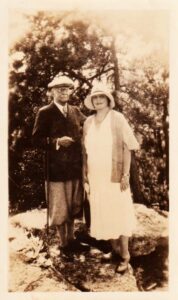 In his day James’ father, Canadian corn merchant Daniel Charles Gunn, had sired nine children by two successive wives. One of these children was James’ twenty-one years younger half-brother, William Ellis Gunn. William, a popular, gregarious clubman and generally esteemed “good fellow,” had appeared in New York in 1905, taking over management of the newly-built Schuyler Arms apartments on tony Riverside Drive. Within a year, the bluff, bearded, thirty-five-year-old “Captain,” as he was known, had hired twenty-one-year-old Gertrude Fontham as his stenographer. Gertrude, reputedly a dainty, dark-haired, dark-eyed beauty, was the belle of her little corner of Harlem—or perhaps one should say belle dame sans merci. In October 1905, two young men, William Wood and Lester Finley, roommates on the top floor of a Harlem apartment house, had fought what the press termed a “duel” over “Gert,” with Willie Wood, as he was regrettably known informally, nearly killing Dwight in the affray. Some months after that lamentable affair, Joseph O’Reilly, brother of prominent criminal attorney Daniel O’Reilly (he would defend millionaire Harry Thaw, the 1906 murderer of Stanford White, among other privileged celebrity defendants), came to believe that he himself was engaged to Gertrude, only to receive a very rude surprise indeed when the comely stenographer without warning married her boss in October 1907. William and Gertrude promptly went off to enjoy a honeymoon in Europe, leaving the owners of the Schuyler Arms to discover ruefully that William had taken $5400 out of the hotel’s cashbox to fund the couple’s happy journey. Police in various European cities were alerted to keep on the lookout for the honeymooners.
In his day James’ father, Canadian corn merchant Daniel Charles Gunn, had sired nine children by two successive wives. One of these children was James’ twenty-one years younger half-brother, William Ellis Gunn. William, a popular, gregarious clubman and generally esteemed “good fellow,” had appeared in New York in 1905, taking over management of the newly-built Schuyler Arms apartments on tony Riverside Drive. Within a year, the bluff, bearded, thirty-five-year-old “Captain,” as he was known, had hired twenty-one-year-old Gertrude Fontham as his stenographer. Gertrude, reputedly a dainty, dark-haired, dark-eyed beauty, was the belle of her little corner of Harlem—or perhaps one should say belle dame sans merci. In October 1905, two young men, William Wood and Lester Finley, roommates on the top floor of a Harlem apartment house, had fought what the press termed a “duel” over “Gert,” with Willie Wood, as he was regrettably known informally, nearly killing Dwight in the affray. Some months after that lamentable affair, Joseph O’Reilly, brother of prominent criminal attorney Daniel O’Reilly (he would defend millionaire Harry Thaw, the 1906 murderer of Stanford White, among other privileged celebrity defendants), came to believe that he himself was engaged to Gertrude, only to receive a very rude surprise indeed when the comely stenographer without warning married her boss in October 1907. William and Gertrude promptly went off to enjoy a honeymoon in Europe, leaving the owners of the Schuyler Arms to discover ruefully that William had taken $5400 out of the hotel’s cashbox to fund the couple’s happy journey. Police in various European cities were alerted to keep on the lookout for the honeymooners.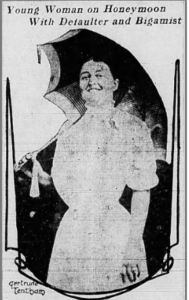 Ten days later, when William and Gertrude returned from Europe, Jospeh O’Reilly, still pining for his “Gert,” was waiting for them at the dock. After he took Gertrude aside and informed her that William already had a wife and children, the shocked young woman departed with Joseph in a cab, alighting at the law offices of Joseph’s brother. The next day Gertrude and her mother announced to the press that Gert was seeking to annul her marriage. The lawyer handling her case was Maurice Meyer, an associate in the law firm of Daniel O’Reilly. To Meyer, William broke down and admitted that he was indeed a married man, but he insisted that at least a “satisfactory arrangement” had been made concerning the hotel funds he had misappropriated (meaning probably that his brother James had stepped up to the financial plate again). Meanwhile Willie Wood, awaiting trial for assault in the second degree (remember the “duel” he fought over Gertrude), from his prison cell piled on William by spitefully insisting to the press that the bigamist had married Gertrude simply to win a wager which he had made with Wood that he could get his secretary to wed him rather than James O’Reilly. As for Phoebe, aka wife #1, she informed the press that she did not know whether or not she would go to New York to testify in Gert’s annulment suit, explaining that she would be “guided entirely” by the advice of her kindly brother-in-law, James O’Brien Gunn. “All I have to say is this,” she added bluntly. “I hope [William] will get all that is coming to him.”
Ten days later, when William and Gertrude returned from Europe, Jospeh O’Reilly, still pining for his “Gert,” was waiting for them at the dock. After he took Gertrude aside and informed her that William already had a wife and children, the shocked young woman departed with Joseph in a cab, alighting at the law offices of Joseph’s brother. The next day Gertrude and her mother announced to the press that Gert was seeking to annul her marriage. The lawyer handling her case was Maurice Meyer, an associate in the law firm of Daniel O’Reilly. To Meyer, William broke down and admitted that he was indeed a married man, but he insisted that at least a “satisfactory arrangement” had been made concerning the hotel funds he had misappropriated (meaning probably that his brother James had stepped up to the financial plate again). Meanwhile Willie Wood, awaiting trial for assault in the second degree (remember the “duel” he fought over Gertrude), from his prison cell piled on William by spitefully insisting to the press that the bigamist had married Gertrude simply to win a wager which he had made with Wood that he could get his secretary to wed him rather than James O’Reilly. As for Phoebe, aka wife #1, she informed the press that she did not know whether or not she would go to New York to testify in Gert’s annulment suit, explaining that she would be “guided entirely” by the advice of her kindly brother-in-law, James O’Brien Gunn. “All I have to say is this,” she added bluntly. “I hope [William] will get all that is coming to him.” Crime emphatically did not pay, however, in the case of the would-be criminal gang known as The Ravens. If James O’Brien Gunn successfully extricated his half-brother from his own difficulties a few years earlier, he proved no less able in routing The Ravens. Gunn was a wealthy man, but he was not about to turn over $3000 (about $100,000 today) to some grandiose extortionists writing fantastically of Hindoo poisons undetectable to science. When a representative of The Ravens telephoned Gunn at his home on the evening on which he had been ordered to deliver the money at the theater, he was forcefully told by Gunn himself in no uncertain terms that he had better “forget it.”
Crime emphatically did not pay, however, in the case of the would-be criminal gang known as The Ravens. If James O’Brien Gunn successfully extricated his half-brother from his own difficulties a few years earlier, he proved no less able in routing The Ravens. Gunn was a wealthy man, but he was not about to turn over $3000 (about $100,000 today) to some grandiose extortionists writing fantastically of Hindoo poisons undetectable to science. When a representative of The Ravens telephoned Gunn at his home on the evening on which he had been ordered to deliver the money at the theater, he was forcefully told by Gunn himself in no uncertain terms that he had better “forget it.”
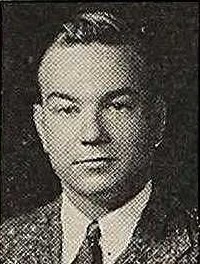 It proved to be not Benjamin Wellington Soule who would become the writer of crime fiction, but rather a grandson of Soule’s world-be victim, James O’Brien Gunn—or President Gunn as Soule respectfully called him. (He gave his nemesis Spreckels no such honorific.) When James Gunn died three years after the affair of The Ravens, at sixty-seven still shy of seventy years of age, he was eulogized as one of the great business leaders of California’s early Anglo days, having been Secretary of the California Pacific Railroad, the Union Iron Works and a “confidential man” of Leland Stanford and the brothers Charles and Edwin Crocker, three of the tycoons responsible for the building of the Trans-Continental Railroad. Back in 1874 at age twenty-nine Gunn, a man clearly on his way up to the top, wed Edwin Crocker’s pretty, precociously artistic, nineteen-year-old daughter Katie, a promising student of noted native German California painter Charles Christian Nahl. However, Katie Crocker Gunn tragically passed away from acute nephritis after only a few months of marriage. By his second wife, Laura Littig Shaffer—daughter of a Baltimore merchant, Frederick (Littig) Shaffer, who had inherited, like they do in books, a fortune in real estate from a relative after compliantly changing his surname (as an adult Laura retrieved “Littig”)—Gunn had four children, including George Alfred Gunn, who wed schoolteacher Ernestine Kraft, daughter of a factory agent, and with her had a daughter and son. These were, in order, Jane Lisette and James Edward Gunn, the latter of whom, named for his renowned grandfather, was born on August 22, 1920 in San Francisco.
It proved to be not Benjamin Wellington Soule who would become the writer of crime fiction, but rather a grandson of Soule’s world-be victim, James O’Brien Gunn—or President Gunn as Soule respectfully called him. (He gave his nemesis Spreckels no such honorific.) When James Gunn died three years after the affair of The Ravens, at sixty-seven still shy of seventy years of age, he was eulogized as one of the great business leaders of California’s early Anglo days, having been Secretary of the California Pacific Railroad, the Union Iron Works and a “confidential man” of Leland Stanford and the brothers Charles and Edwin Crocker, three of the tycoons responsible for the building of the Trans-Continental Railroad. Back in 1874 at age twenty-nine Gunn, a man clearly on his way up to the top, wed Edwin Crocker’s pretty, precociously artistic, nineteen-year-old daughter Katie, a promising student of noted native German California painter Charles Christian Nahl. However, Katie Crocker Gunn tragically passed away from acute nephritis after only a few months of marriage. By his second wife, Laura Littig Shaffer—daughter of a Baltimore merchant, Frederick (Littig) Shaffer, who had inherited, like they do in books, a fortune in real estate from a relative after compliantly changing his surname (as an adult Laura retrieved “Littig”)—Gunn had four children, including George Alfred Gunn, who wed schoolteacher Ernestine Kraft, daughter of a factory agent, and with her had a daughter and son. These were, in order, Jane Lisette and James Edward Gunn, the latter of whom, named for his renowned grandfather, was born on August 22, 1920 in San Francisco.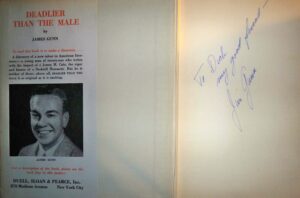

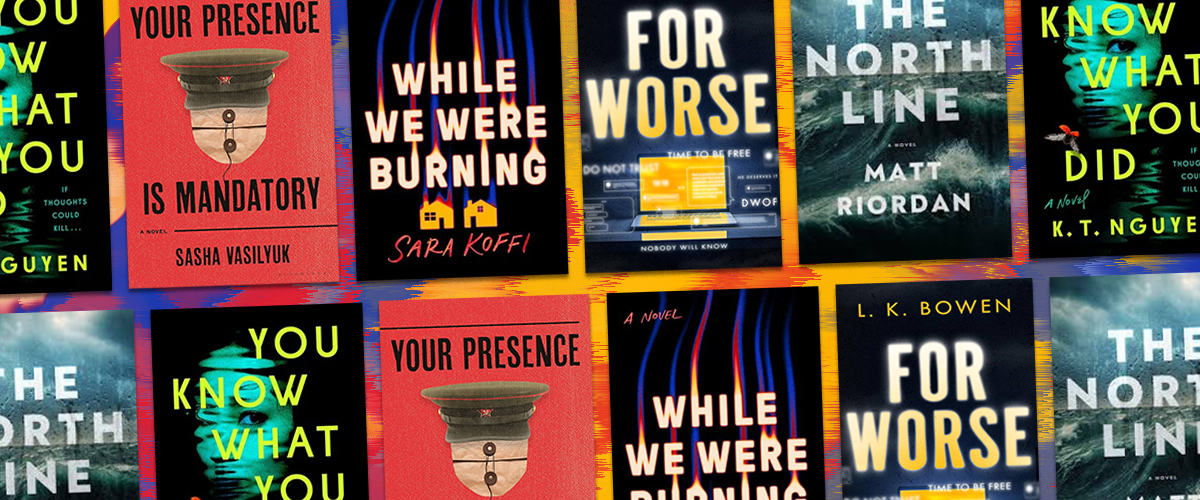
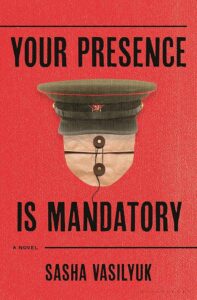

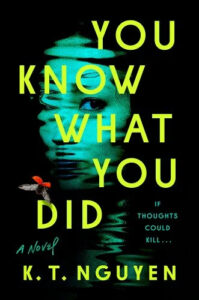
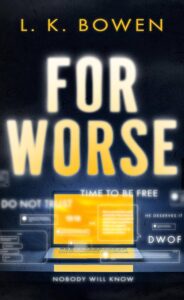
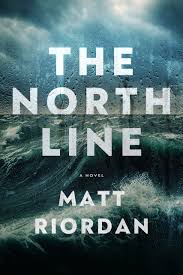

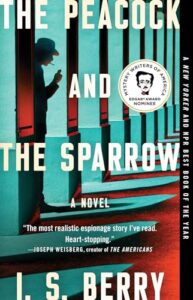
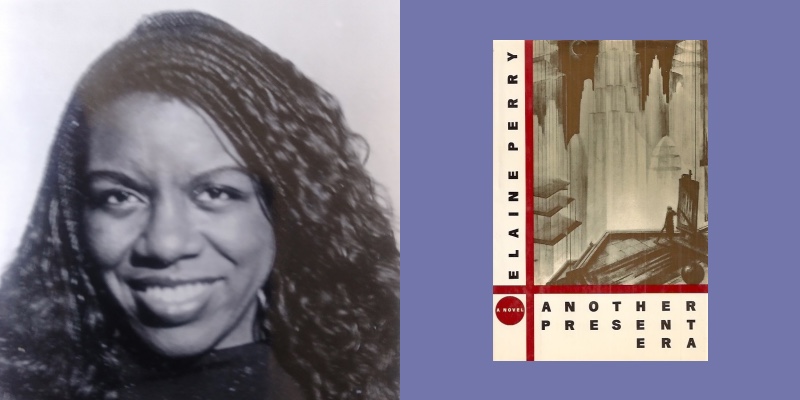
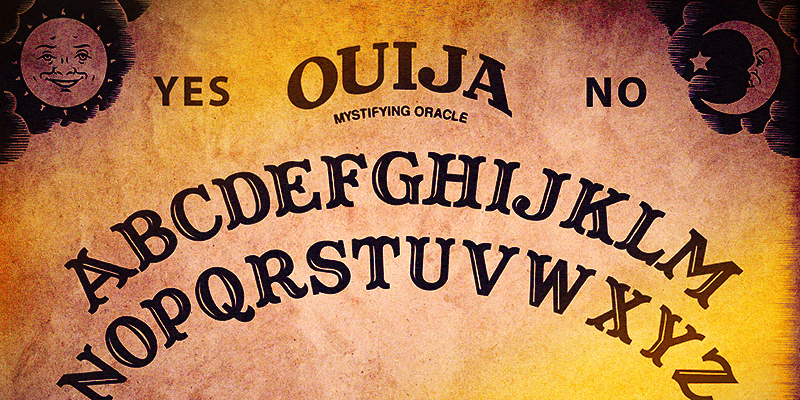

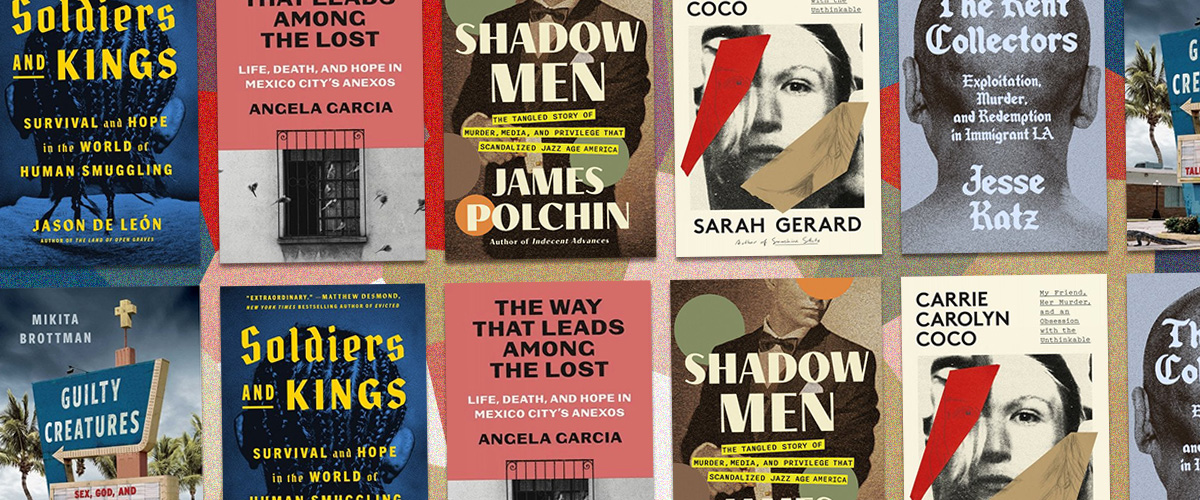
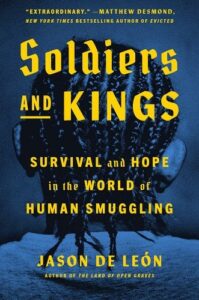

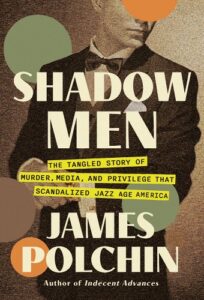
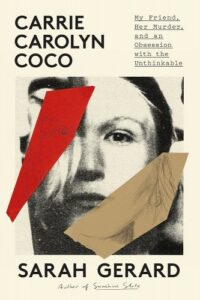
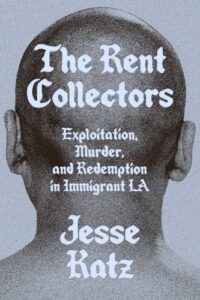
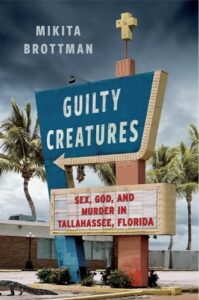

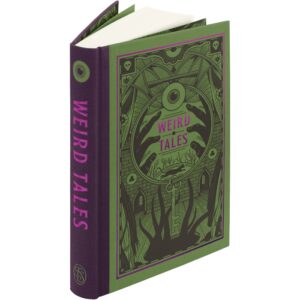

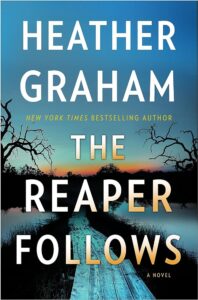
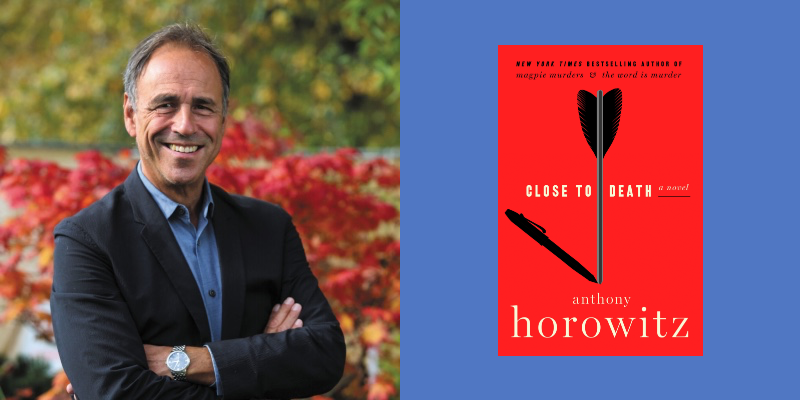

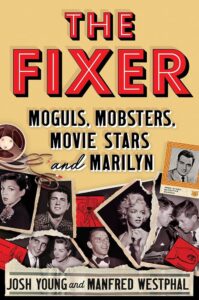

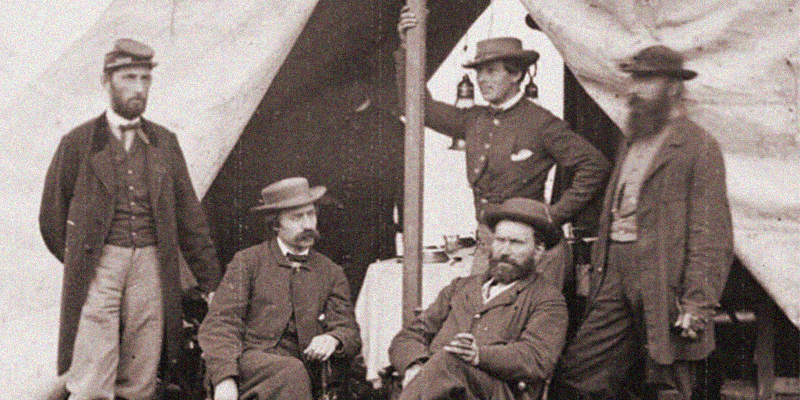
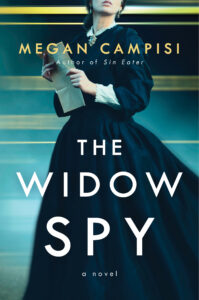



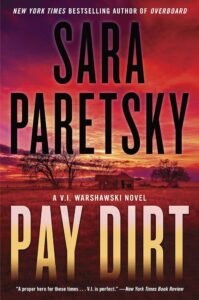
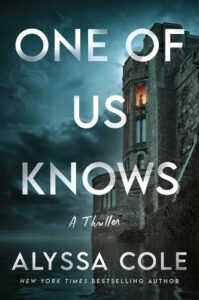

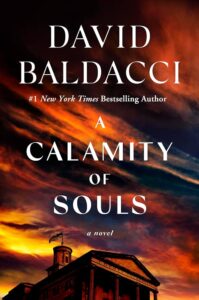
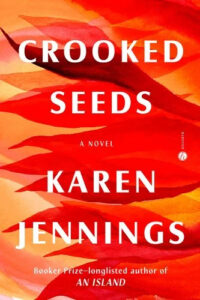


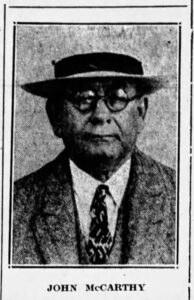 John McCarthy – also known as George C. Parker and William McCloundy – launched his swindling career by selling shares in the Brooklyn Bridge. (Brooklyn Times Union, July 8, 1928)
John McCarthy – also known as George C. Parker and William McCloundy – launched his swindling career by selling shares in the Brooklyn Bridge. (Brooklyn Times Union, July 8, 1928) A vintage postcard showing pedestrians crossing the Brooklyn Bridge, which opened in 1883. (Author Collection)
A vintage postcard showing pedestrians crossing the Brooklyn Bridge, which opened in 1883. (Author Collection)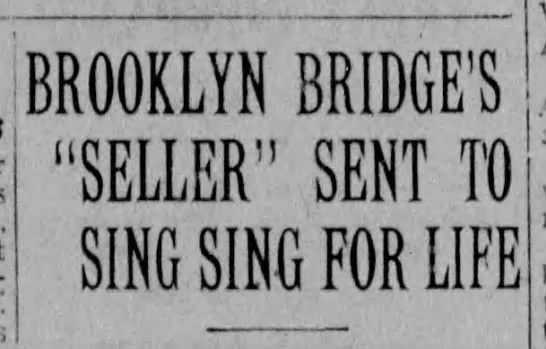 McCarthy was sixty-eight in 1928 when his arrest on a minor fraud charge put him in prison for the rest of his life. (Brooklyn Daily Eagle, November 23, 1928)
McCarthy was sixty-eight in 1928 when his arrest on a minor fraud charge put him in prison for the rest of his life. (Brooklyn Daily Eagle, November 23, 1928)
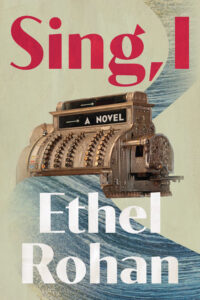


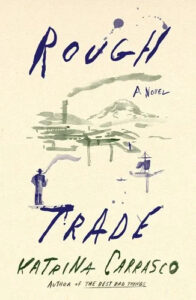
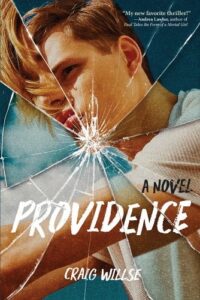
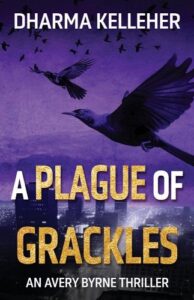

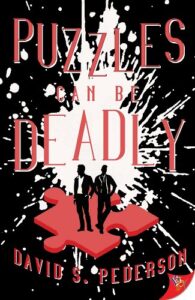
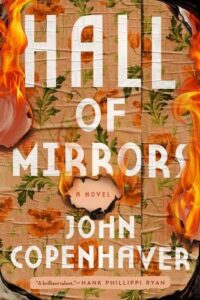
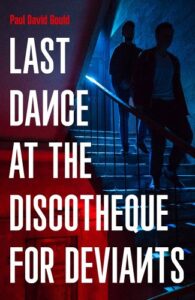
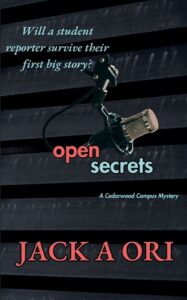
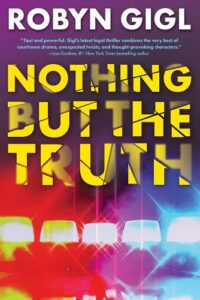
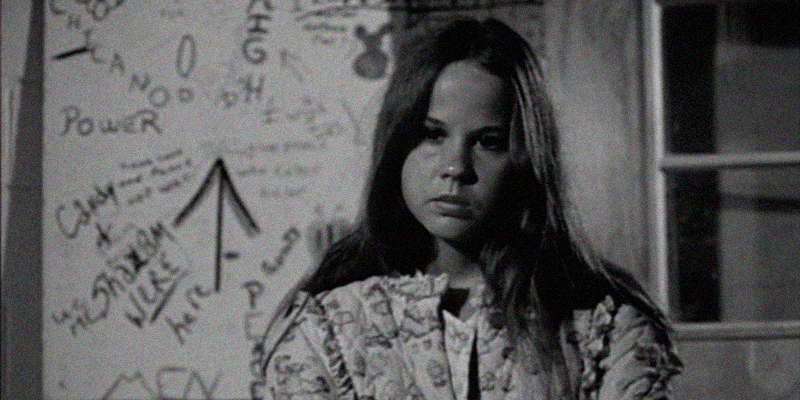
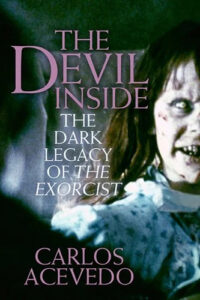
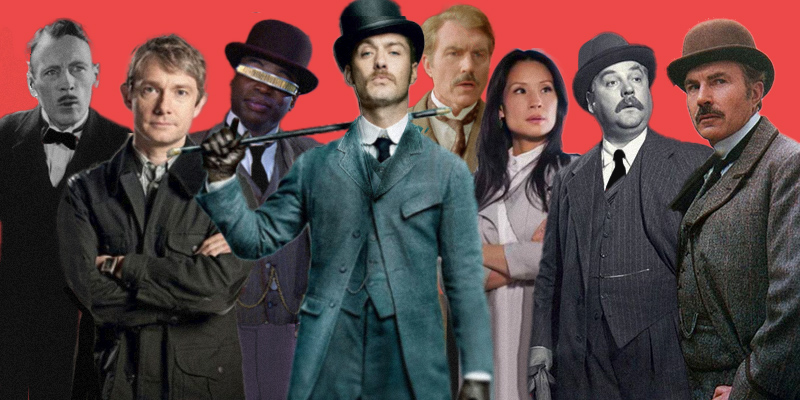
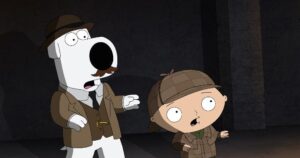
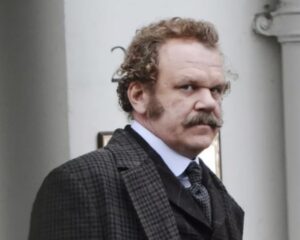
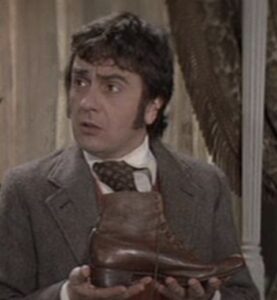
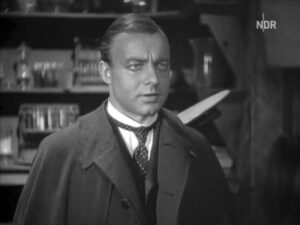
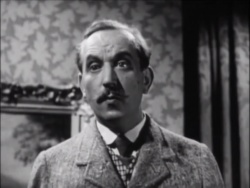
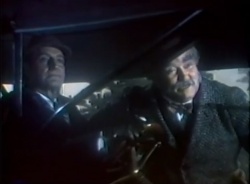
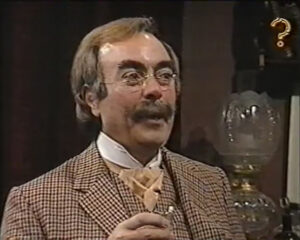
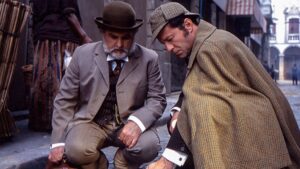
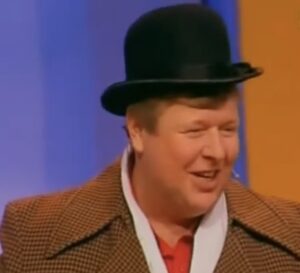
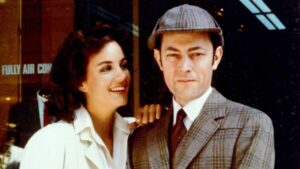
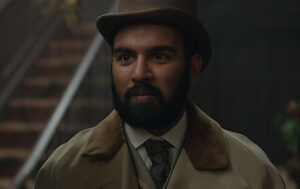
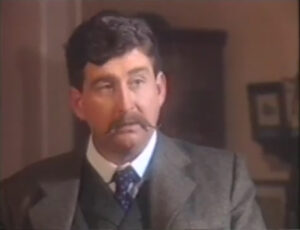
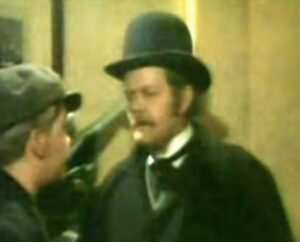
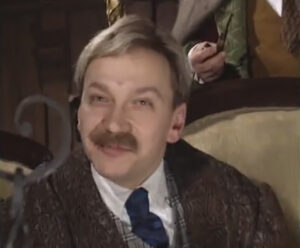


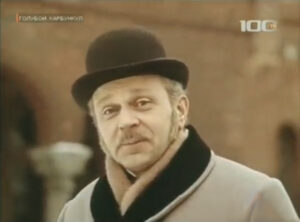
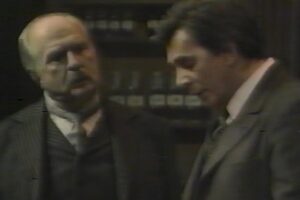
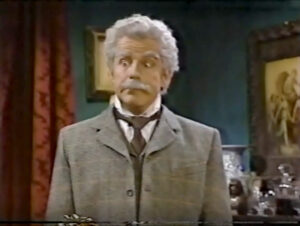
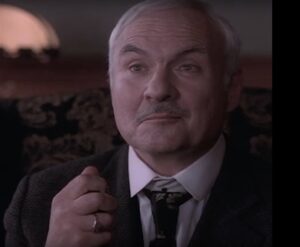
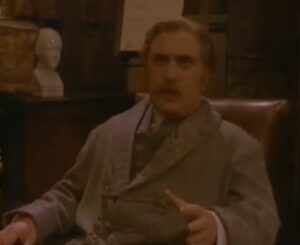
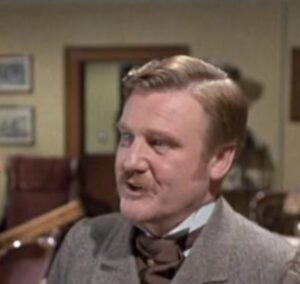
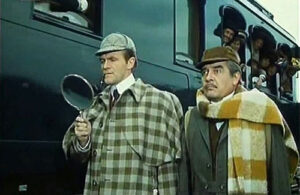
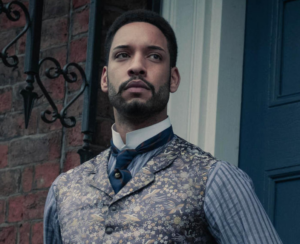
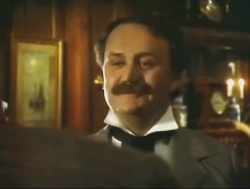
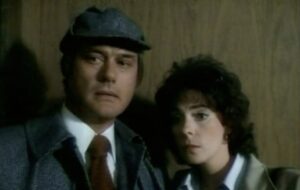
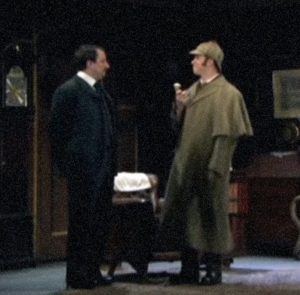
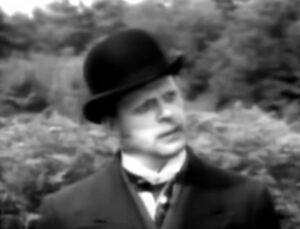
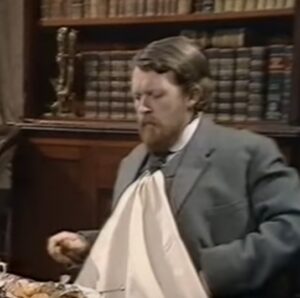


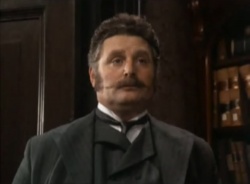
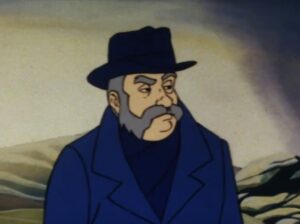
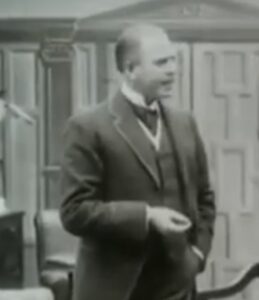
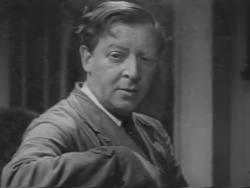

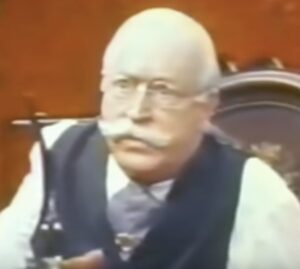
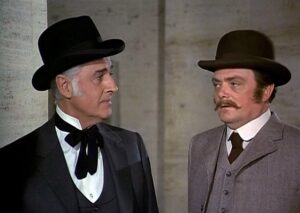
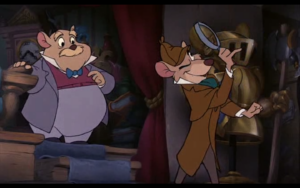

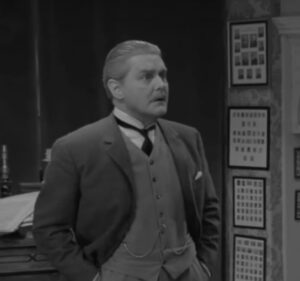
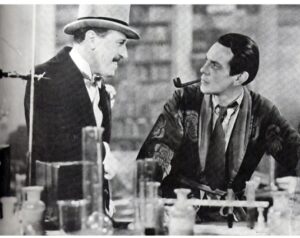
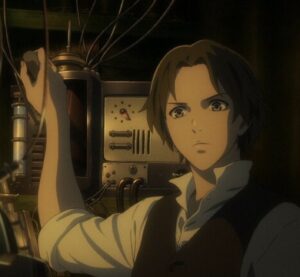
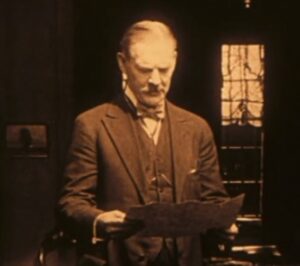
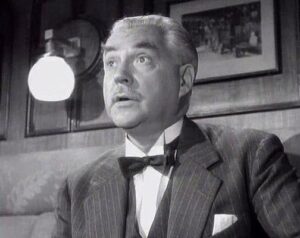
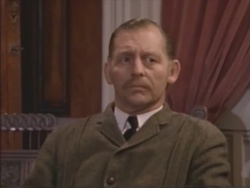
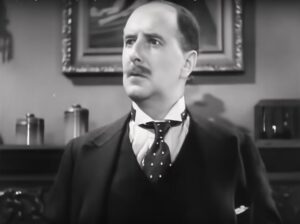
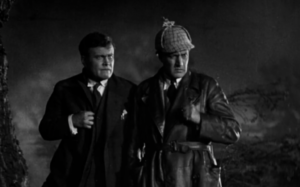
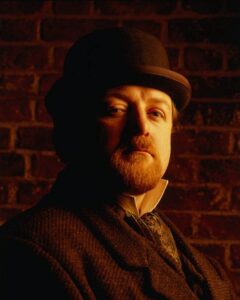
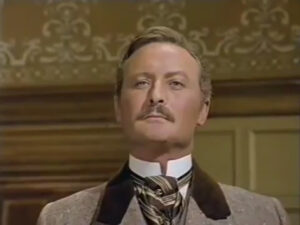
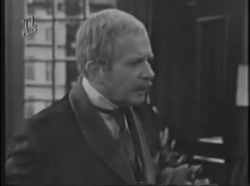

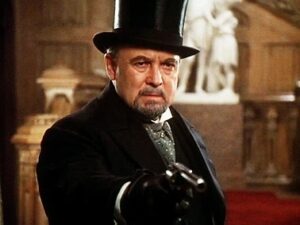
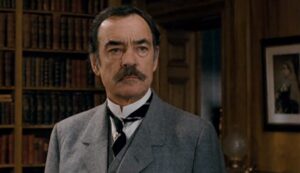
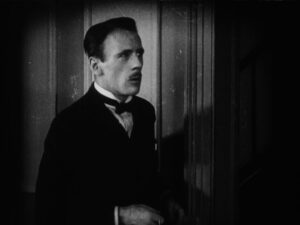
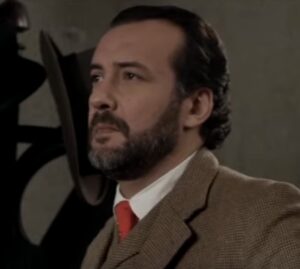
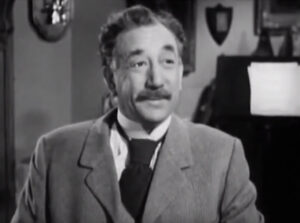
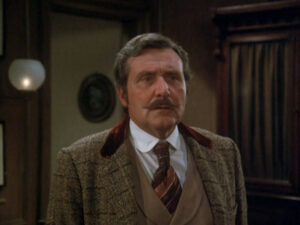
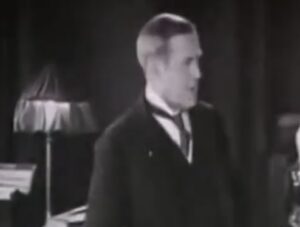
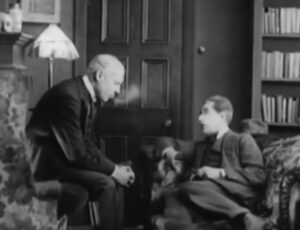
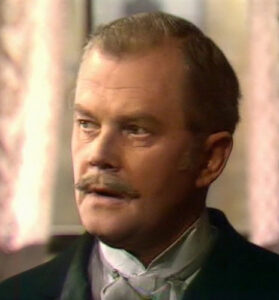
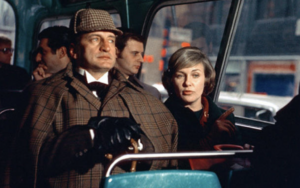
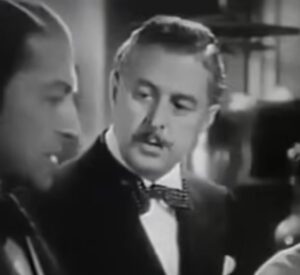
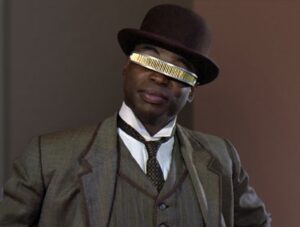
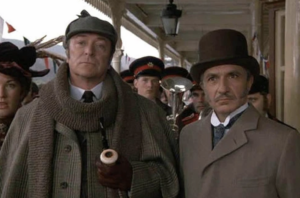
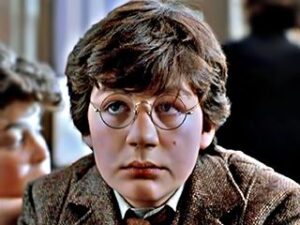
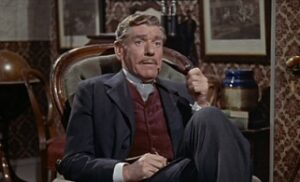
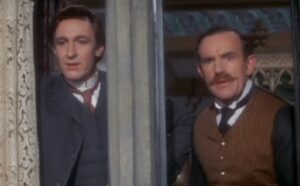


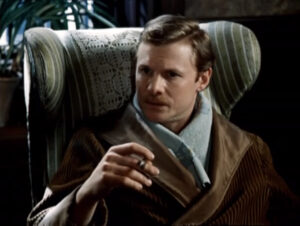

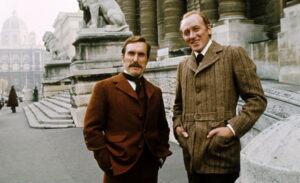

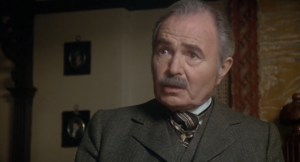
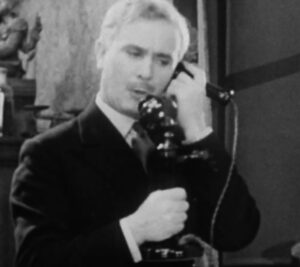
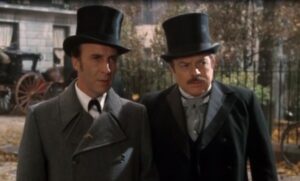
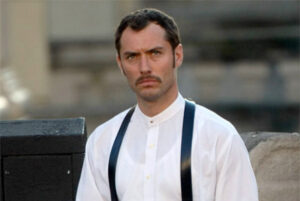
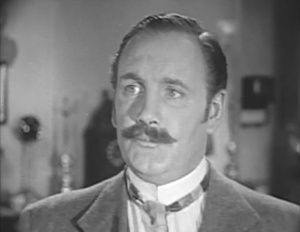
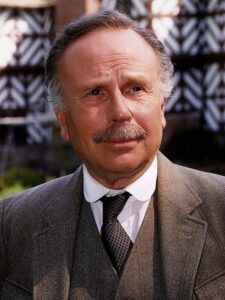
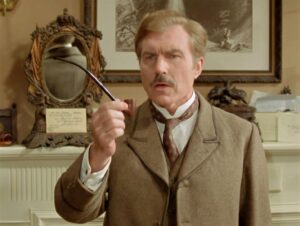
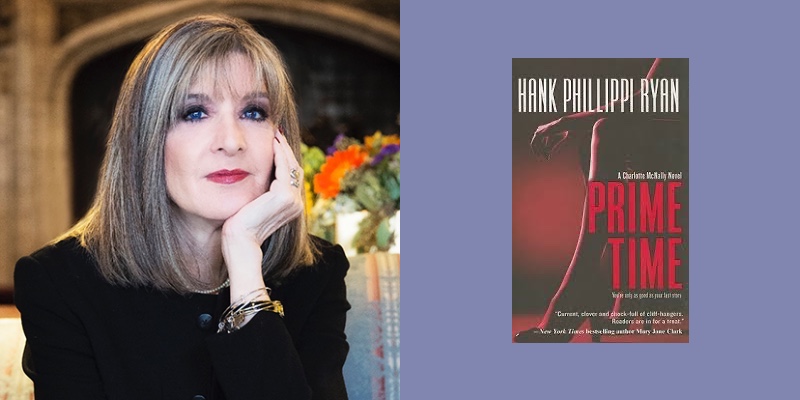
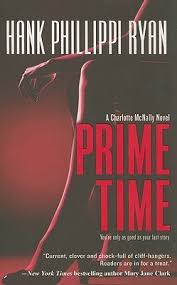
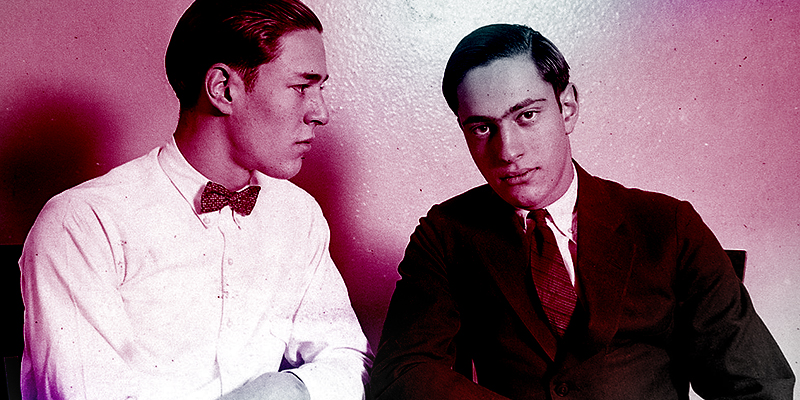

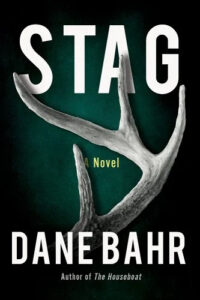

Are You Ready to be an Author?
in Writing With Quiet Hands
Posted
Literary author and agent knows what she's talking about.